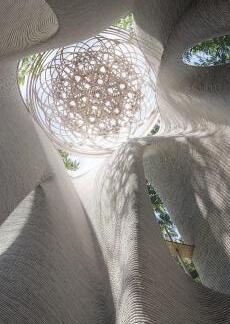
23 architecturalPORTFOLIO
Jiri Uran Vitek BOOK 20
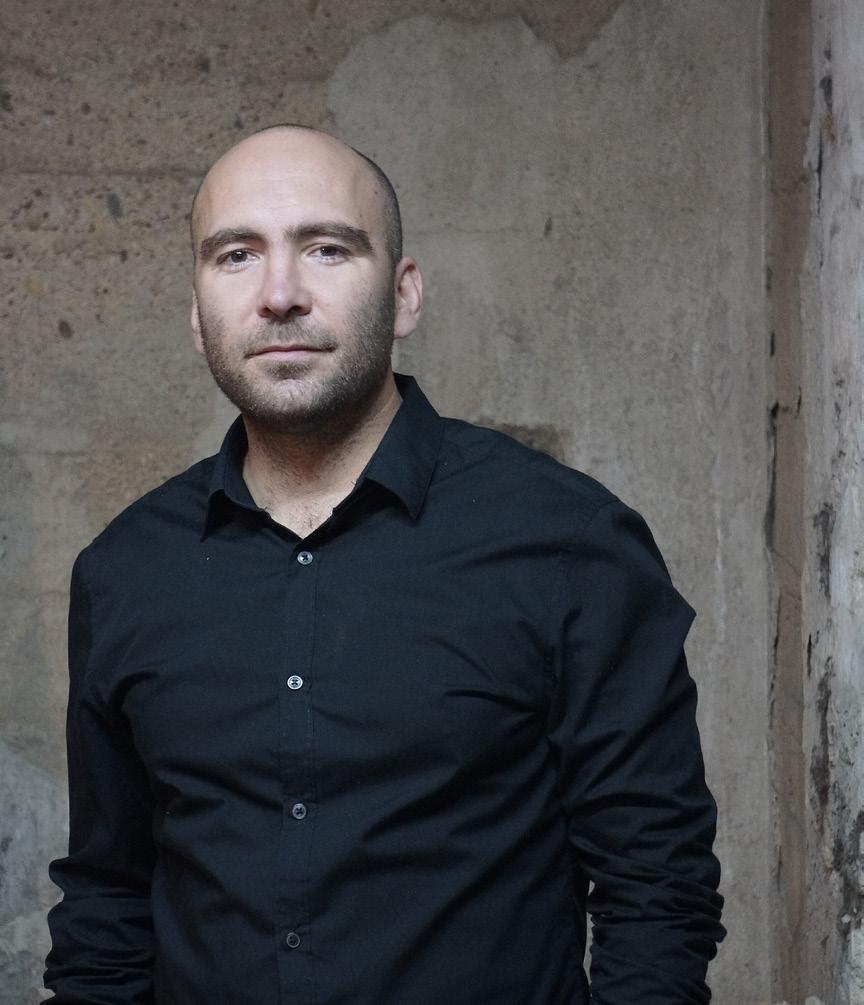
MArch Ing.arch.Ing.
Jiří Uran Vítek Ph.D. /1979/
graduated in civil engineering and architecture at Brno University of Technology (2006) and the Faculty of Architecture at Brno University of Technology (2009), studied at Die Angewandte in Zaha Hadid Studio (2012-2015) and in Hani Rashid Studio (2019-2020) in Vienna, where he completed his master thesis Hydrogen Island. In January 2024 he successfully defended his dissertation “Anatomy of Architecture” at the Faculty of Arts and Architecture in Liberec / Ph.D /
He is engaged in designing and researching in the field of digital/parametric architecture and free artwork, where the focus lies in the exploration of new structures. He has taught at the Faculty of Architecture in Brno ( 2016-2021 ), co-founded the architectural platforms SUPERLABOR, VašiArchitekti, runs the Experimental Laboratory of Architecture/ ELA/ dealing with education in architecture 21.12.2019 founded BiotectArchitects studio with a focus on innovation and technology. Collaborated in 2007 and 2015 with ArchDesign, 2008-2009 and 2017-2019 with Franek Architects. in July 2020 he founds studio URAN, from 12/2021 he collaborates with ICE Inc. , 3/2022 he co-founded ICE Architects, which is designing for 3DCP.
Professional Experience:
Lead Architect, 3DCP Technology - ICE Architects ,2021-2024
Spearheaded architectural research and software development in 3D Concrete Printing (3DCP) technology. Led a team in solving complex architectural challenges through innovative technology solutions, nominated for the Czech National Prize for architecture 2023 / Pavilion Between Conflicts /
Founder & Principal Architect, [Studio URAN, ELA, BiotectArchitects ( Own Architectural Studios)] [2019-present]
Established and managed a successful architectural studio focused on pushing the boundaries of architecture. Led all aspects of project delivery, from initial concept to final realization, including client communication, design, permitting, and construction supervision. Cultivated a strong client base and maintained high levels of client satisfaction through effective communication and collaboration.
University Lecturer research Cluster Uran BUT Faculty of Architecture Brno CZ [2016-2022]
Taught architecture courses and studio to graduate and undergraduate students and led diploma thesis. Mentored and guided students in their academic and professional growth, established courses for experimental design methods and structural optimization student work awarded the prize repeatedly
Partner Architect, Franek Architects 2016 - 2019
Over 40 projects, Led a team in solving complex architectural challenges through innovative technology solutions. Played a pivotal role in concept design, 3D modelling and project delivery.
winning competitions implementing BIM and advancing parametric modelling into projects building teams and leading improvement
Founder & Principal Architect, [SuperLabor & Jiri Vitek Architectural Workshop ( Own Architectural Studios)] [2009-present]
Established and managed a successful architectural studio focused on residential projects and innovation Led all aspects of project delivery, from initial concept to final realization, including client communication, design, permitting, and construction supervision. Winning Competitions /
Junior Architect, Franek Architects, 2008 - 2009
3D modelling, drawing, physical modelling
Key Skills and Accomplishments:
Extensive experience in all stages of architectural project development, from concept study to realization.
Strong leadership and project management skills, demonstrated through successful completion of complex projects.
Proficient in architectural software and technologies, focusing on innovation and cutting-edge solutions. / Maya, Rhino, Grasshopper, Vray, Archicad, Excellent communication and interpersonal skills, proven through effective client and team collaboration.
Track record of academic excellence and teaching effectiveness, contributing to students’ academic and professional success.
Education:
Ph.D., TUL Liberec, CZ, 2024 MArch, Studio Zaha Hadid & Studio Hani Rashid, Die Angewandte, WIena AT, 2020 ing. arch. /eq. MArch / BUT Faculty of Architecture Brno. CZ. 2009 ing. / civil engennering / BUT Faculty of civil engennering Brno. CZ. 2006
Awards :
1st place in the competition for the new pavilion P at BVV in Brno, 2007/ Not realized/ ( together with J.Sedlák, V.Medková), 1st place in the public competition for the redesign of Svobody Square in Znojmo, 2009 together with J.Sedlák, J.Kopec, O.Bartůšek, P. Hurník ), 3rd prize in the public competition for the English Square in Pilsen, 2009, together with J.Sedlák, J.Kopec, O.Bartůšek, P.Hurník), 3rd shared prize in the public competition for the Revitalization of the agricultural building in Doubravník ( PP2015 ,together with : J.Kopcem, J.Železným ), 2015 final of the competition at AIRPORT City PRAGUE, 1st place Entrance object of the Botanical Garden, 2017 in the studio of Zdeněk Franek, prize in the competition House of the Future 2017, 1st place invited competition Marshmallow 2, 2018 in the studio of Zdeněk Franek
The first printed 3DCP pavilion “Between Conflict” was nominated for the Czech Architecture Award 2023.
Workshops : Kulturní Prostor PARDUBICE 2009 / installation Living Room - together with J. Kopec, J.Sedlák /, SpringChalange 2011, Angewandte, Wien / grasshopper, fabrication ,Spring-Chalange 2012, Angewandte Wien / grasshopper, fabrication /, Drift and Dreams 2013 3D dreamer, Wien / MAYA , Zbrush, Steven Ma /, ECOTYPE 2014 , 3D dreamer, Bratislava / grasshopper /, Digital Summer 2014 organized by UMPRUM Re. Code.Nature Co-de-iT CIEE / processing /, Iterative Interpretations 2014, Bratislava / Anemone, Grasshopper /, Santini’s Language 2016 , 2017, 2019 , Artificial Ecologies (Digital Futures with Daniel Bolojan) 2020 and many more
Exhibitions : salon of wooden buildings 2012 (rd Hluboké Dvory, with J.Zelezny ); solo exhibition Fluids 2013 , galerye Brno; Essence 2014 Wien,( CaveRoots, with I.Binica; Integro, with J.Park, S. Nabavi)
Santini’s Language - minigallery Fa Vut Brno, 2019, Succesive palimpsest, minigallery Fa Vut Brno, 2019, Design Blok 2022 : Between Conflicts / ICE Coral /, Biomorphic Machines - Interpretation 6, Villa Tugendhat 2021 with Eric Goldemberg /FIU/ , Festival of Architecture - Stereotomic Tecton - ice architects, BVV, 2023, Wide Parameter of Architecture, exhibition of works by students of the Institute of Experiment, Fa Vut Brno, KUNST, 2023 ( together with Sládeček,Gale, Rozwalka, Kaftan)
Contact : Jiri Vitek, Mesovice 21, Uhercice 67107, Czech Republic phone: 00420 604146150 email : jirivitekaw@gmail.com https://www.studiouran.cz/ https://issuu.com/jirivitek3/docs/jvbook2020-4smal
Experience in Brief :
With over fifteen years of experience in the dynamic field of architecture, I have dedicated my career to driving innovation and advancing the boundaries of design. From the outset, my focus has been on fostering a deep understanding of architecture while actively pushing the envelope of creativity. Throughout my journey, I have been deeply involved in every aspect of project development, from initial concept ideation to the final stages of realisation. During my almost 18 years of career I have done over 140 projects and nearly 20 realisations. I also publish theorist texts and participate in research and teaching.
As the founder of my own architectural studio, I assumed a multifaceted role, overseeing everything from client communication and design to sales and construction supervision.
Concurrently, my passion for education led me to teach architecture courses at the university level, guiding and inspiring the next generation of architects.
Most recently, I have served as the Lead Architect for 3DCP technology, where I spearheaded groundbreaking research, software development, and sales initiatives. My diverse experiences have equipped me with a comprehensive skill set and a relentless drive to excel in the field of architecture.
cv

Chapel of reuninon study&prototype 2023
chapel of reunion ICE Architects / 3DCP
study, prototype : synthesy of the ghotic baroque4.0 & cutting edge technology
The Chapel of Convergence seamlessly integrates cuttingedge 3D printing technology to realize an optimized architectural form. Inspired by the fusion of Gothic and Baroque styles, particularly influenced by Jan Blazej Santini’s visionary designs, this nnovative approach allows for the creation of intricate, yet structurally optimized shapes.
Through meticulous digital modeling and fabrication, the chapel embodies a harmonious blend of tradition and contemporary design, symbolizing humanity’s journey towards spiritual enlightenment amidst the evolving landscape of modernity.




Chapel of Convergence creates a bridge between the material and spiritual experience of man. Standing quietly by the pilgrimage path at the edge of the forest, it follows the pilgrimage chapels that lead man to the awareness of his reality and being.
Man’s journey through his existence is full of dramatic moments and finding the path to stillness and peace has become increasingly important in recent times. To be in a beautiful place, to pause for a moment and to connect with oneself and others is and will be crucial for the next moments of human existence on Earth.
The Chapel of Convergence is based on the study of Baroque chapels and especially the work of Jan Blazej Santini and his fascinating synthesis of the Gothic Baroque. Thanks to developments in the digital and technological domain, we are now able to create objects that combine the dynamism of the Baroque with the rationalization of today, bringing the past and the future together,manifesting in the tangible presence of contemporary architecture
chapel of reunion ICE Architects / 3DCP study, prototype

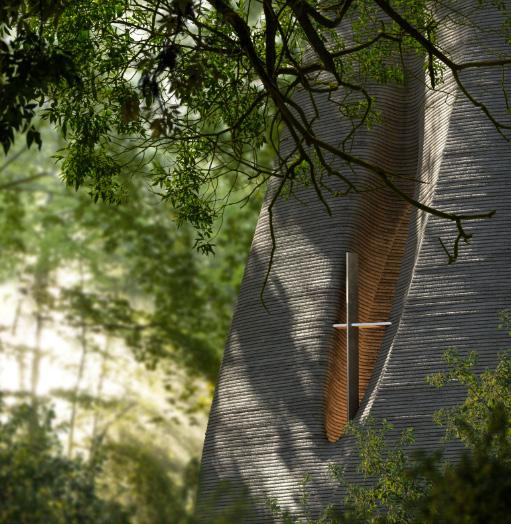

chapel of reunion ICE Architects / 3DCP study, prototype

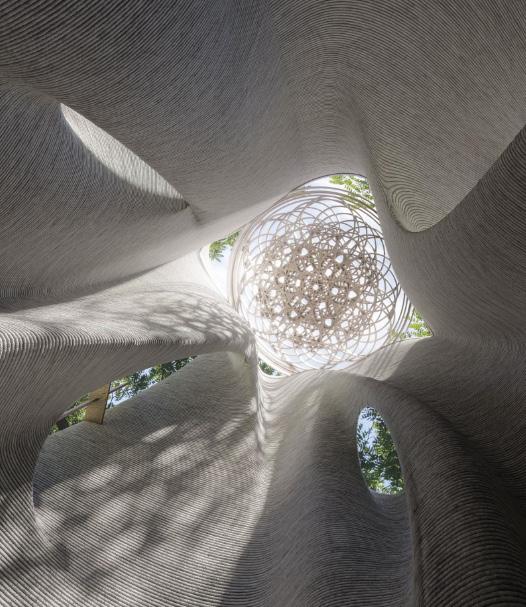
chapel of reunion ICE Architects / 3DCP study, prototype

chapel of reunion ICE Architects / 3DCP study, prototype

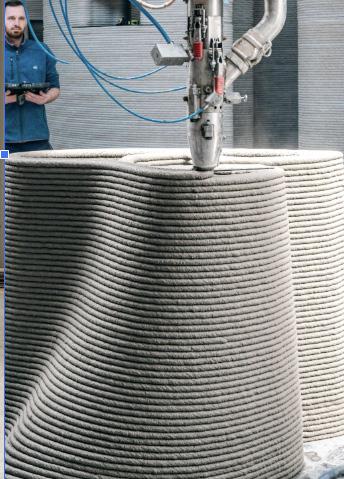

pavilion Between Conflicts
ICE Architect/ realization 2022
04/ selected projects
Between Conflicts / 3DCP Pavilion
realization / Ice Architects
Today’s world can be understood as a constant change. Some are so serious that they cannot be overlooked or ignored. Like the bark beetle or war. We were used to Ukrainian men working on construction sites. Not anymore. They have to defend their homes, and perhaps our homes.
The Between Conflicts object, which we exhibited in the garden of the Museum of Decorative Arts in Prague, is based on a modular system of elements. Within the exhibition pavilion, the object was contextualised and adapted to refer to defensive buildings, but also to respond to the architectural and socio-political context. The core elements of our Modesty system were complemented by highly articulated walls of the corrugated structure, thus connecting the building to the surrounding garden. The corrugated walls responded to the nearby fountain, playing up the space and, thanks to 3D printing capabilities, creating shapes that would have been difficult to achieve with other technologies. The ceilings were complemented with patterning that was based on structural analysis and depicts the principles of stress lines. On the floor we created patterning based on the principle of curve filling using a growth algorithm. On the walls, AI-generated patterning was used. Our concept was to test the possibilities of informed surfaces and inlays in 3D printed concrete. children hiding in the forest ..

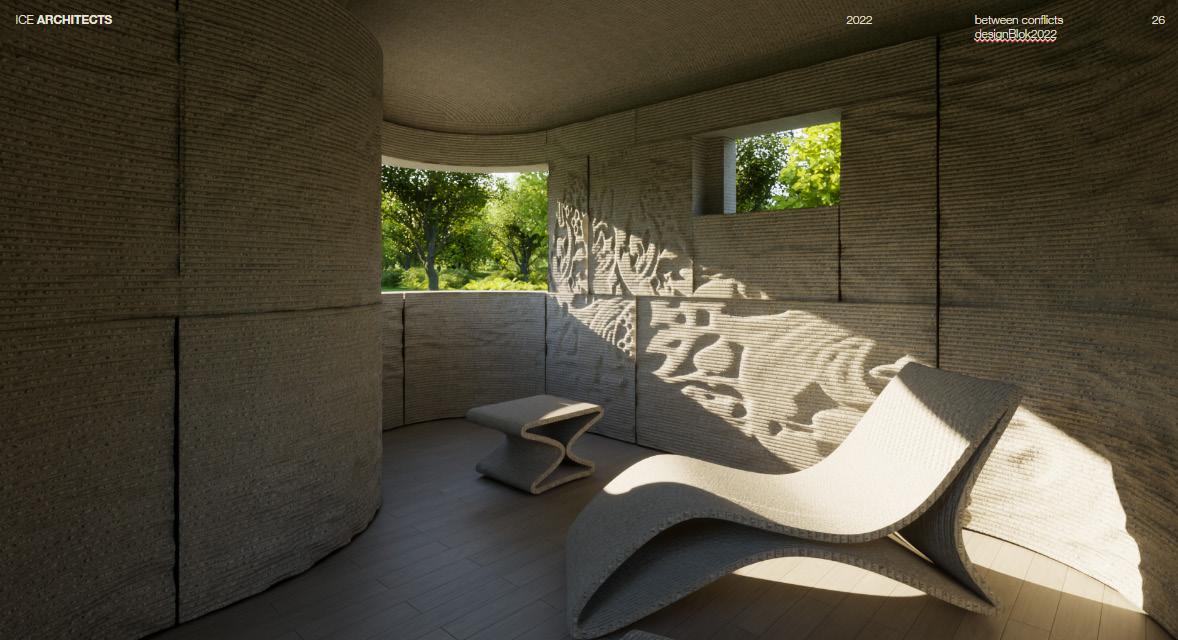
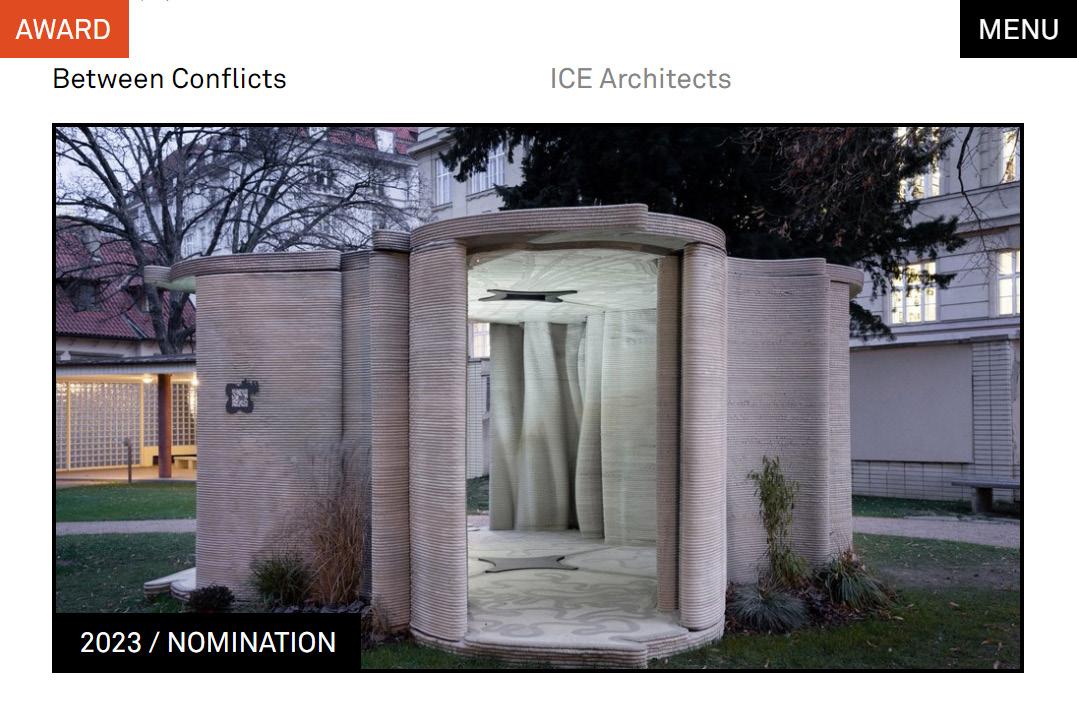

04/ selected projects
AI generated images based on the phrase „Ukrainian children hiding in the forest .....Als“ were converted into data that subsequently informed the print paths. We used different data and images for each panel. We thus verified that it is quite easy to have each panel as an original, which supports the basic thesis of 3DCP as it is a so-called mass customization.
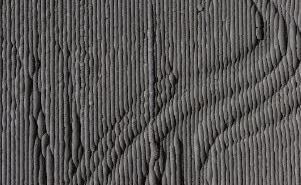


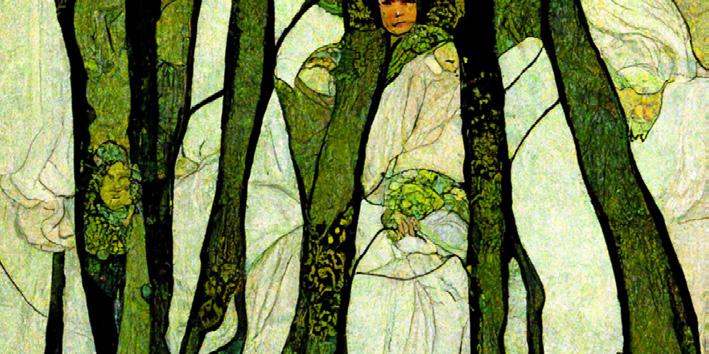

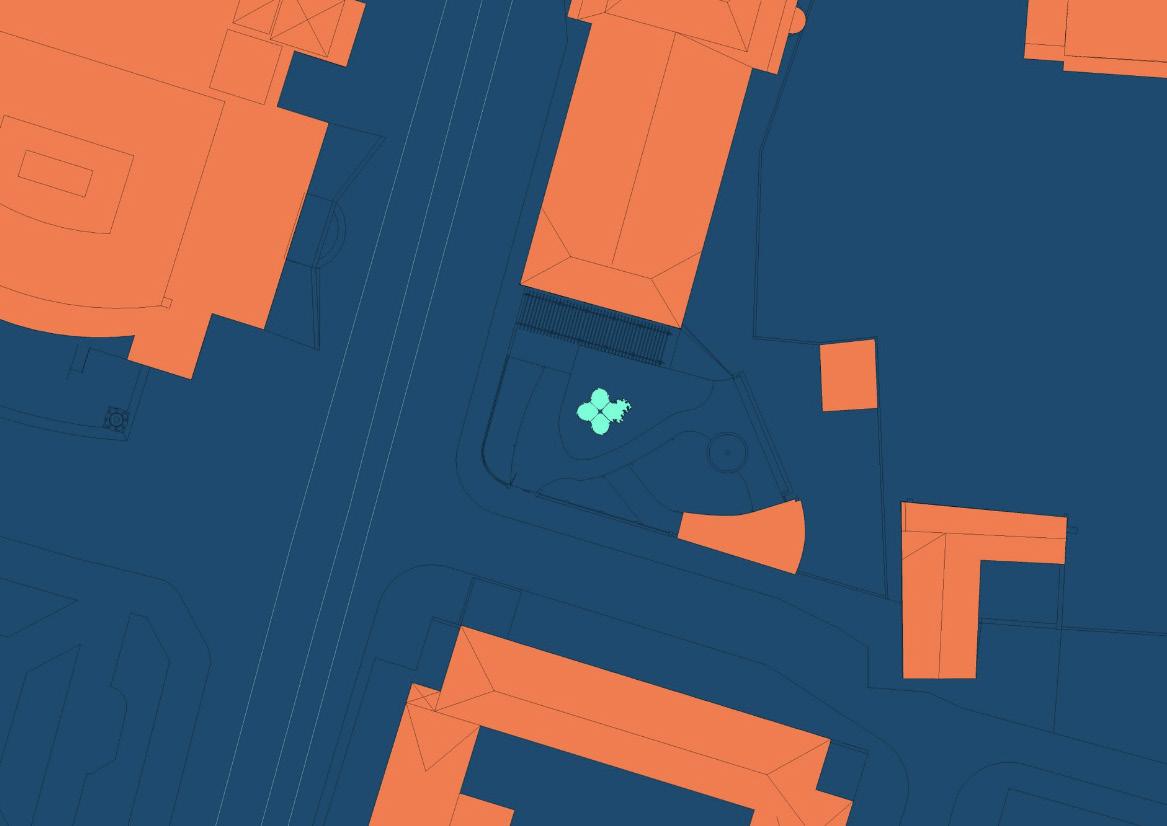


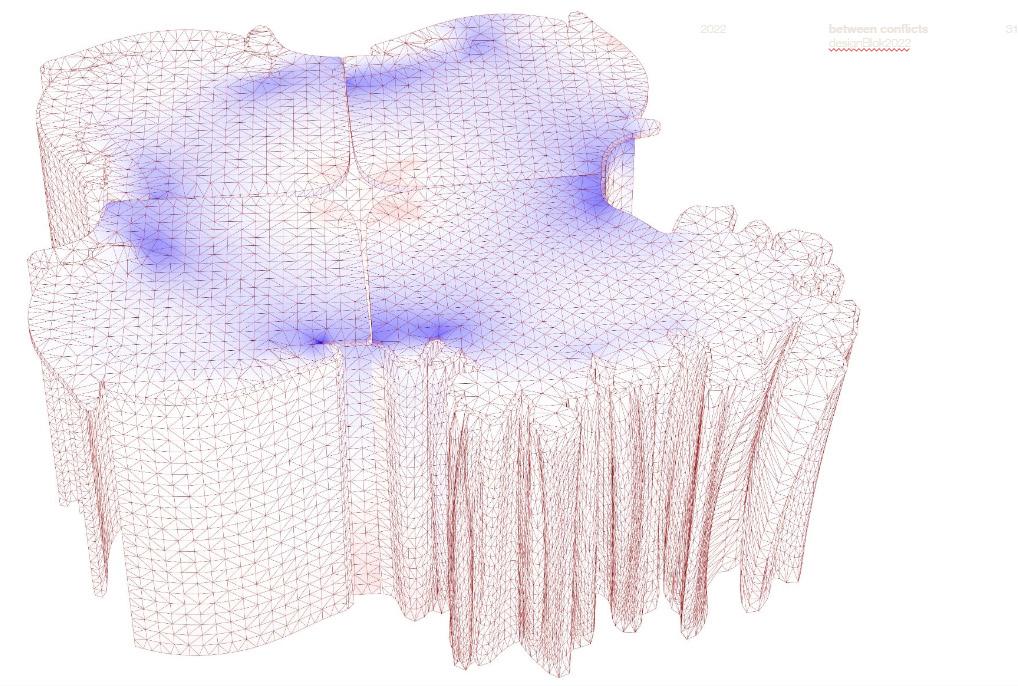
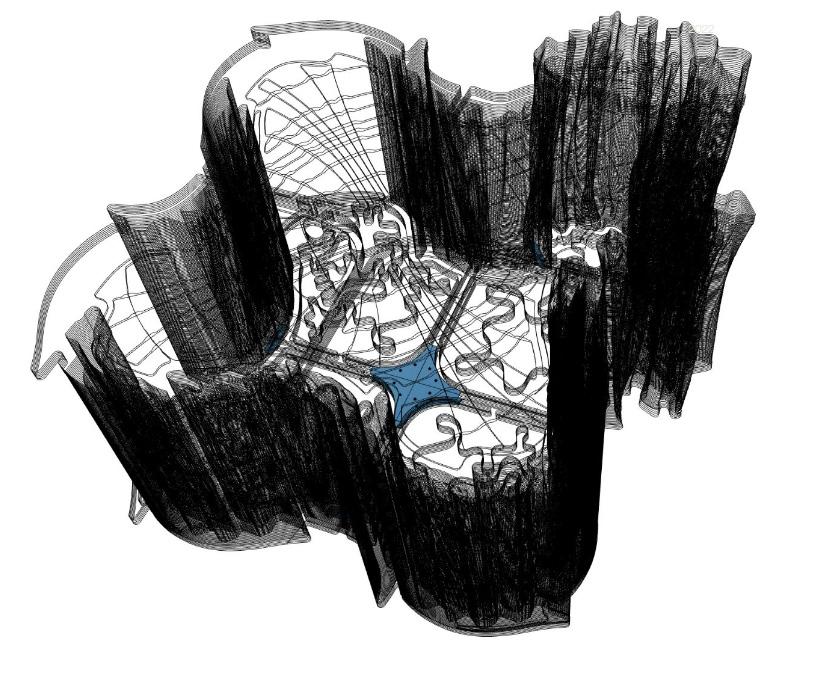

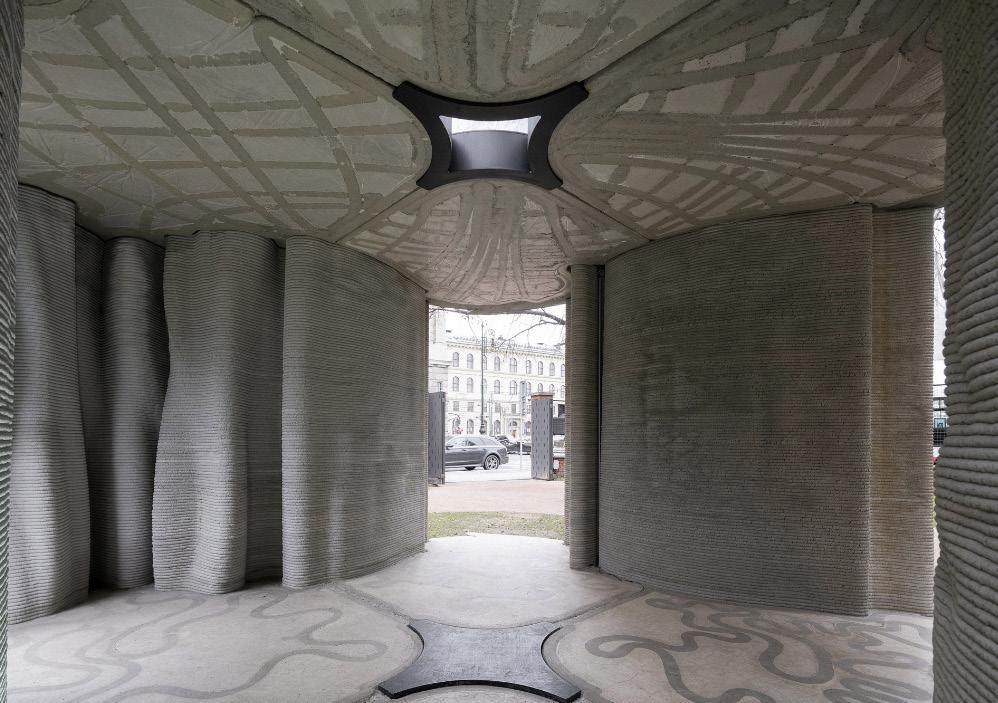
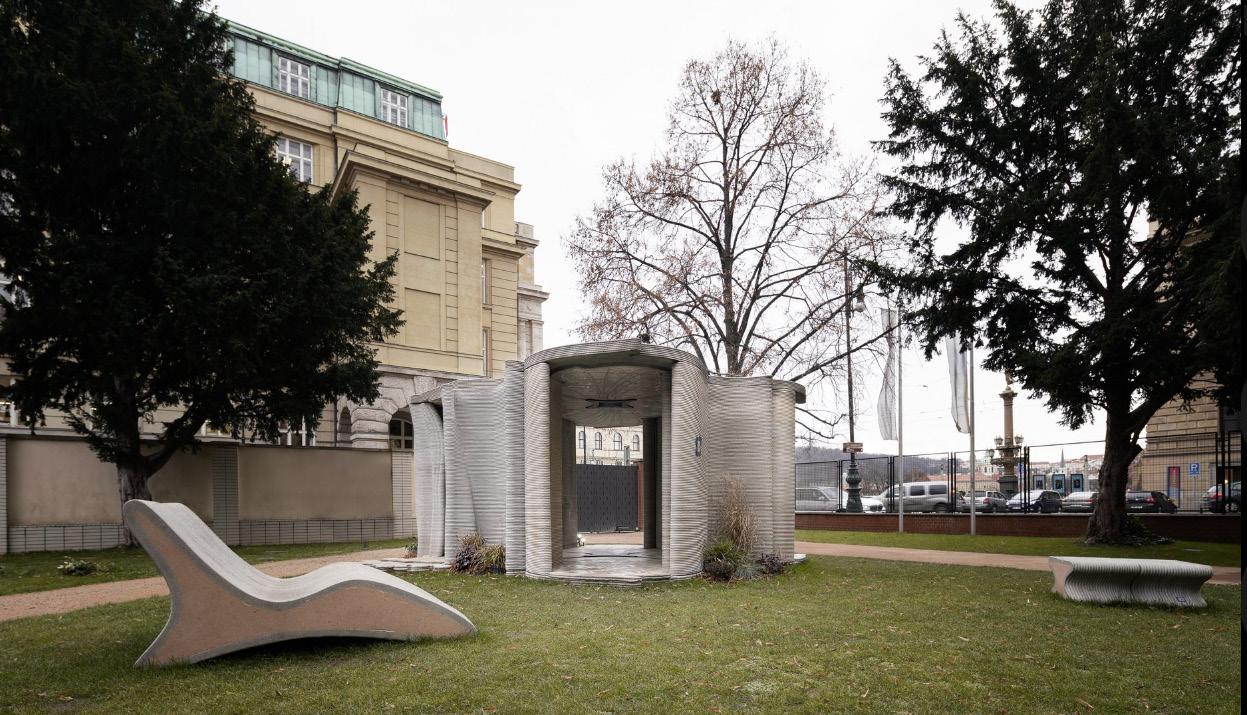

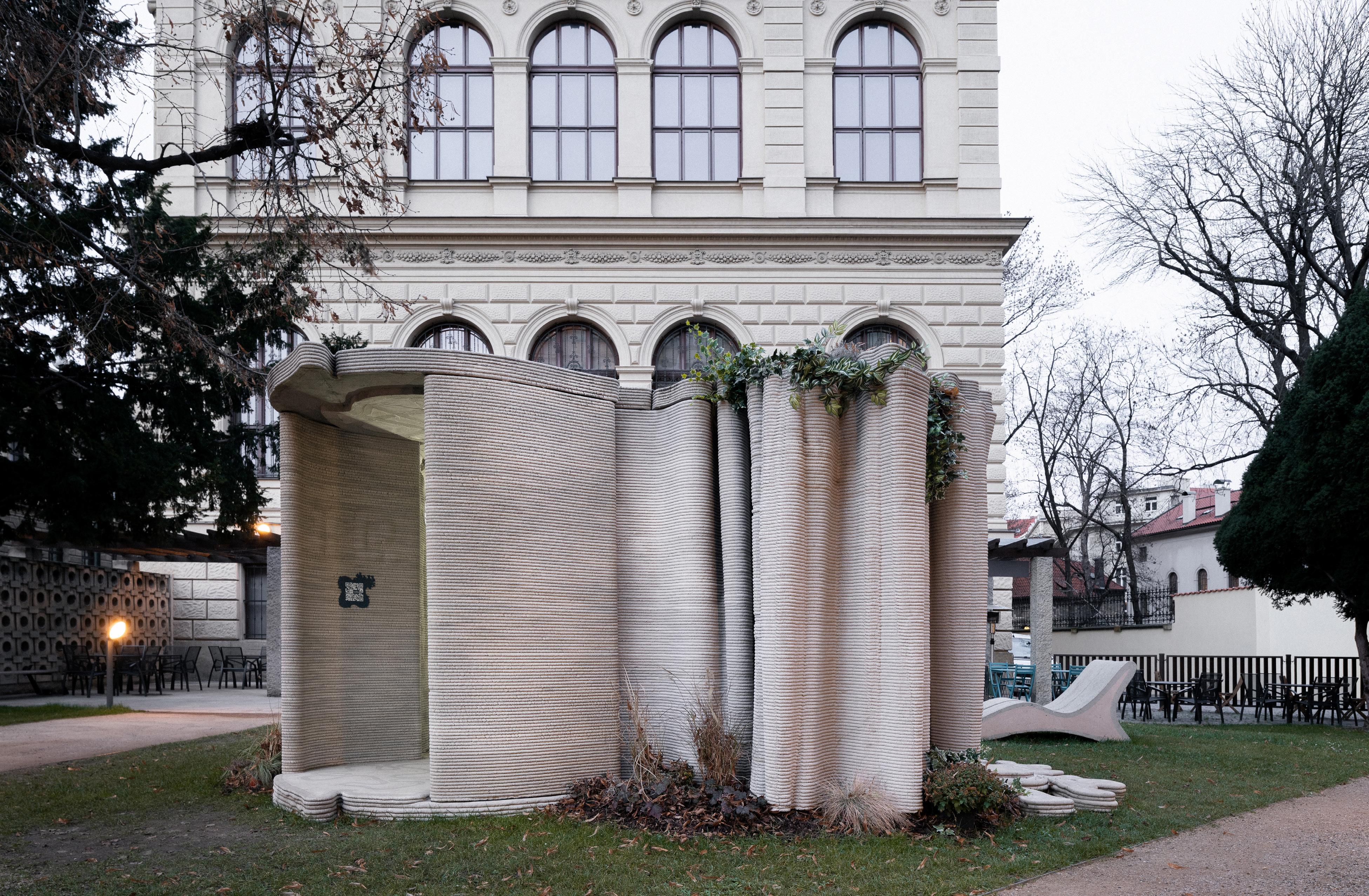
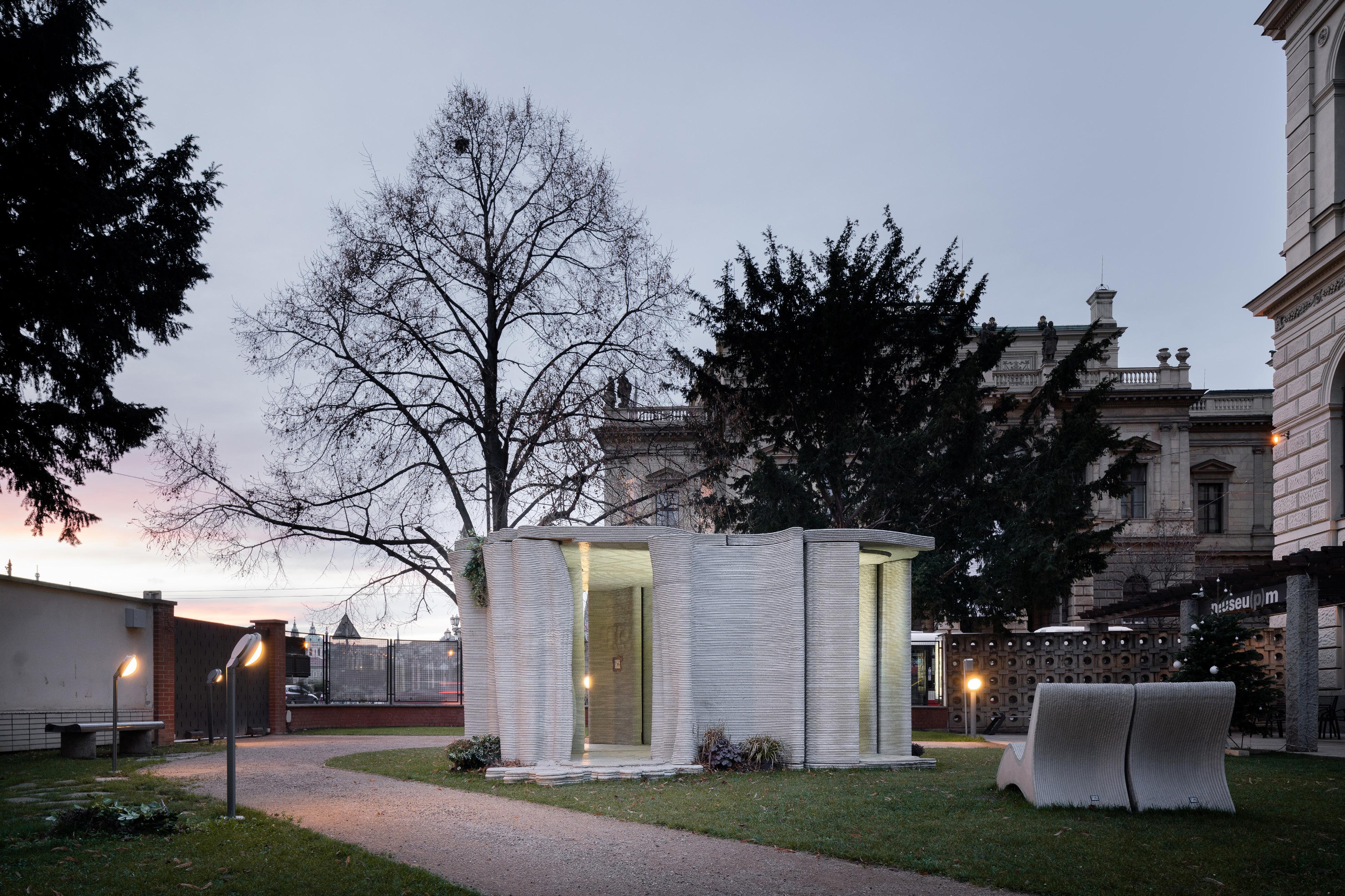
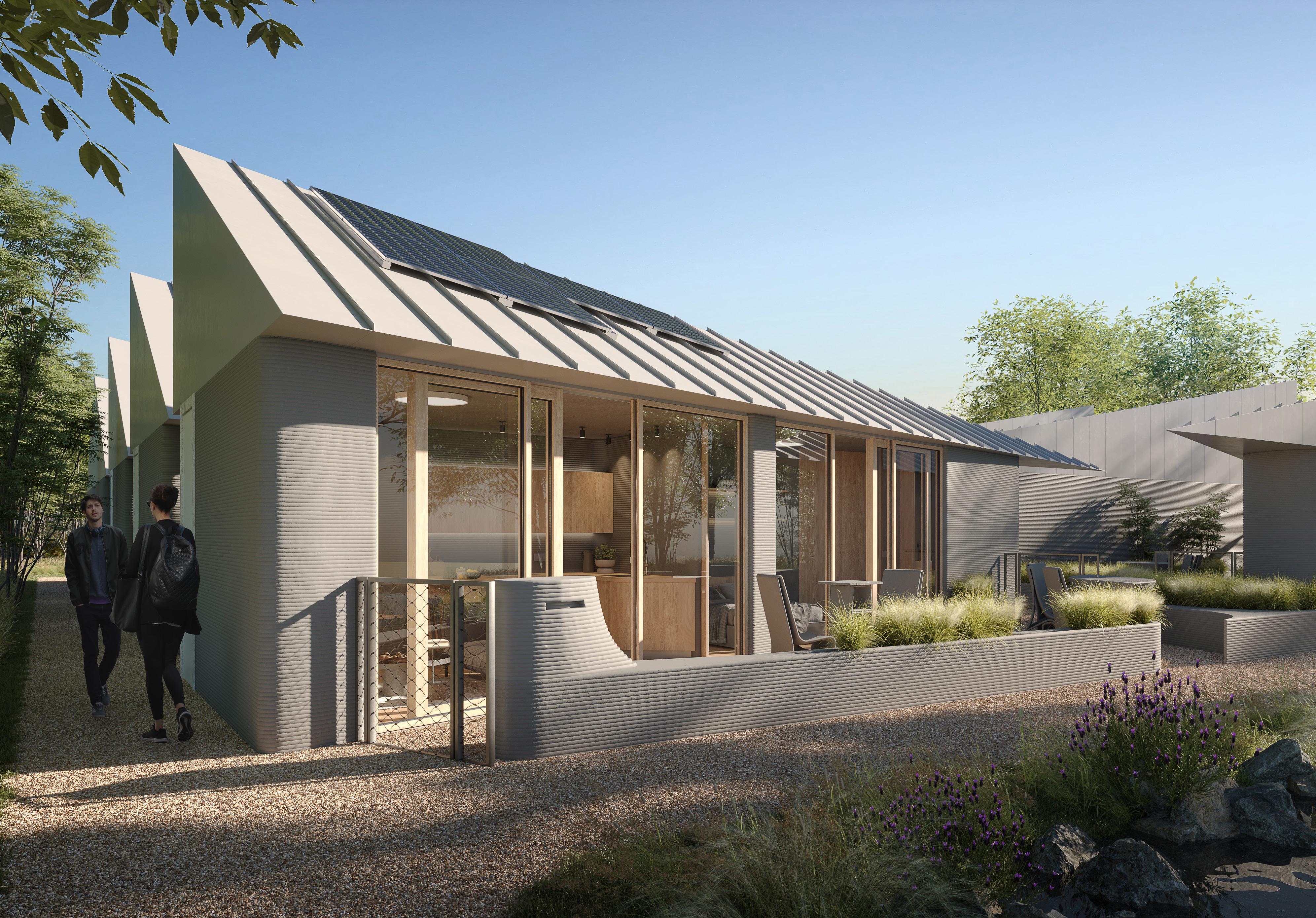
03/ competitions
biotects
2023
Trinity / 99 initiative
architects / Competition
Trinity / 99 initiativecompetition

Thesis
Trinity represents an innovative approach to housing design, rooted in the complex balance between effective building volume and house price. Our mission was to craft an equation that yields the optimal solution for a $99,000 budget. Delving into this challenge, we sought not merely a formula but a guiding principle that transcends conventional paradigms.
Methodology
Trinity : A Harmonious Symphony of Architecture, Community, and Innovation
Our study led us to the comprehension : the key lies not solely in the shape of an individual building but in orchestrating a harmonious interplay within a larger, synergistic urban context. Trinity acknowledges that a community is more than the sum of its architectural components. It recognizes that innovation arises from understanding how buildings seamlessly integrate into
an urban tapestry, fostering a sense of unity and purpose.In our pursuit, we considered more than just efficiency and spatial layout; we prioritized a delicate equilibrium between private and public realms. Trinity aspires to be more than a mere structure; it’s a it’s a demonstration of our commitment to create living spaces that transcend functionality. We aimed for a design that not only maximizes utility but also elevates the quality of life for its residents, blurring the lines between private retreats and communal spaces.
As we present Trinity, we would like to presnent you the convergence of affordability, thoughtful design, and a visionary approach to urban living. It is not just a project; it is a philosophy — a testimony to the belief that in the trinity of effective design, economic viability, and communal harmony, we find the blueprint for the future of housing.
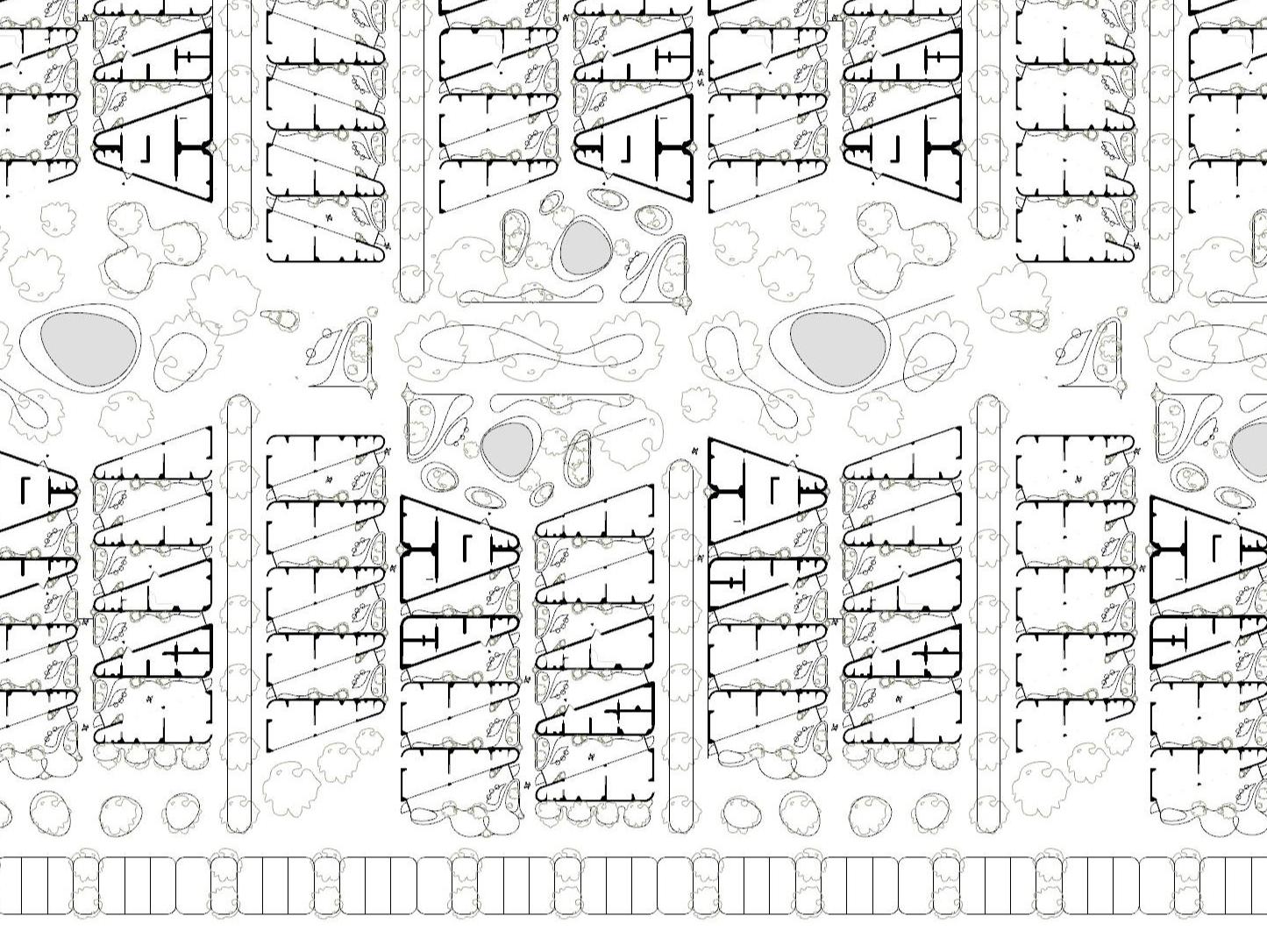
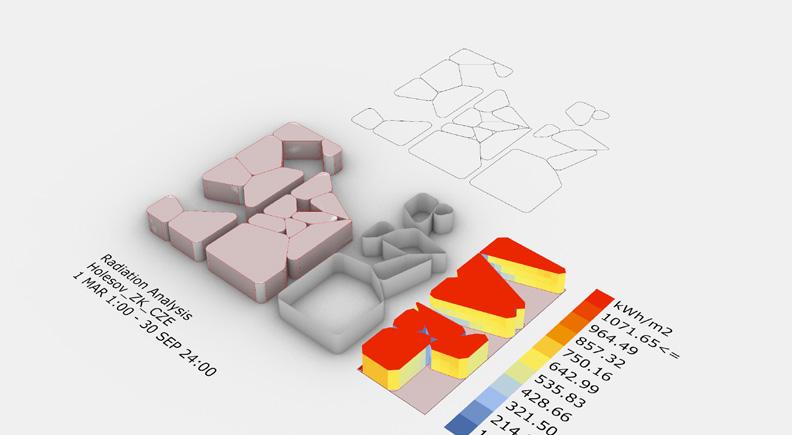
ai & fromfinding
We embarked on the creation of a ingenious generative model harnessing basic AI principles, with a vision to rethink architectural design. Our model is dependent on input parameters of area, volume, and glare (measuring solar gain or maximum possible daylight). Pioneering a paradigm shift, we set out to examine the limitless potential within strict confines: a print area capped at 11.6 m x 30.5 m and a financial ceiling of $99k per structure.
The heart of our innovation lies in an algorithm that orchestrates the random generation of point locations,

each serving as a canvas for the creation of unique structures. Through successive iterations, the algorithm refines its output by scaling these points, gradually converging toward an optimal solution. Beyond the numerical precision, our emphasis was on selecting a solution that not only met the specified criteria but also produced spaces of exceptional quality and contributed to a dynamic urban pattern.
03/ competitions Trinity /
Trinity / 99 initiativecompetition

Our design unfolds as a continuous, adaptable space, transitioning from a spacious communal kitchen and living area to more intimate private zones. The thoughtful layout leverages natural light in the backyard, offering flexibility with sliding doors for individual spaces. Integrated furniture elements maintain a sleek aesthetic, extending seamlessly into the backyard where built-in furniture and greenery enhance both form and function. In essence, our design prioritizes fluidity and adaptability, creating a harmonious living experience.

Programmatic Versatility
The Trinity structure boasts a remarkable flexibility in program distribution, drawing inspiration from the synthesis of a classical megaron and a Socratic house. This unique design allows for seamless transitions from intimate to public spaces, accommodating a diverse range of programs. From simple facilities for stores, communities, offices, or workshops to a spectrum of residential uses, our units cater to individuals, housing-first initiatives, veterans, elderly couples, and families. Tailoring to family needs, our design accommodates those with children, offering adaptability through easily configurable sleeping lofts. For larger requirements, Trinity cells/buildings can be ingeniously combined into expansive units, exemplified by the double unit configuration. This adaptability extends to programmatic articulation, reaching its zenith with the potential for a church. Here, interior walls become canvases for artistic interpretation, with the possibility of crafting an iconic roof, transforming the Trinity structure into a truly multi-functional and aesthetically expressive architectural creation.

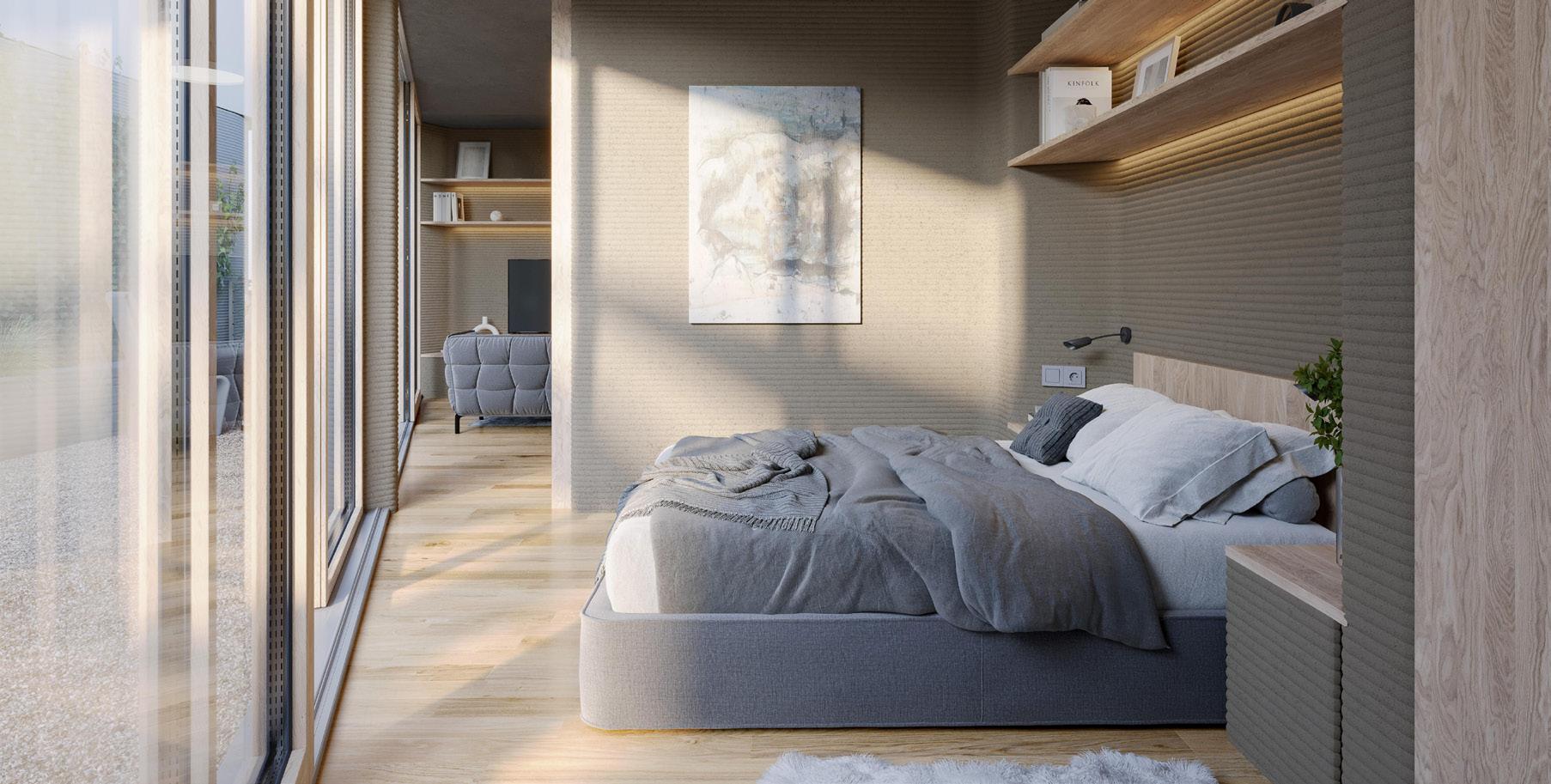
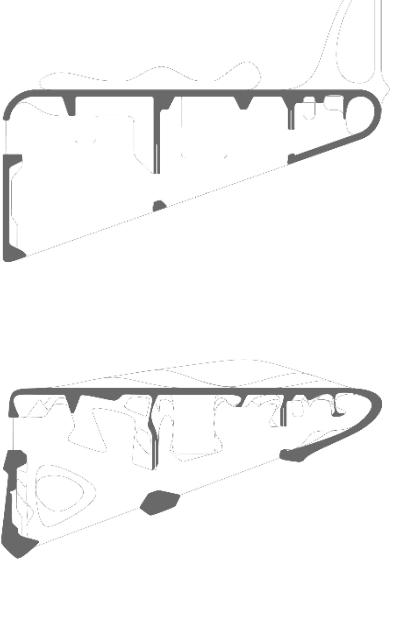
Articulation stands as a significant opportunity within 3DCP, offering the potential to craft a distinctive architectural language tailored to clients, communities, and regional contexts.
This innovative approach allows for adaptability, ensuring that our designs resonate with the specific needs and character of each project.
Through 3DCP, we transcend conventional boundaries, fostering a dynamic interplay between form and function, enabling architecture to become a bespoke expression that seamlessly integrates with its surroundings and serves as a testimony to thoughtful and context-sensitive design.
03/ competitions
Trinity represents a revolutionary approach to housing, balancing effective design and affordability. Our generative model, driven by an innovative algorithm, transcends functionality to become an artistic expression of technology and creativity, redefining the essence of urban living. Trinity’s program versatility caters to diverse needs, from individuals to larger families, even accommodating a church. The building’s adaptability showcases the limitless potential within the Trinity concept.
In the realm of 3DCP articulation is a crucial opportunity. It enables the crafting of a distinctive architectural language tailored to clients, communities, and regional contexts. This adaptability ensures our designs resonate with specific project needs, fostering a dynamic interplay between form and function. Through 3DCP, we transcend conventional boundaries, creating bespoke expressions that seamlessly integrate with surroundings and reflect thoughtful, context-sensitive design.
Water & energy concept
Rainwater harvested from the roof serves a dual purpose: irrigating the yards and accumulating in a pond. Greywater undergoes a filtration process, directed to a root treatment plant for reuse in flushing systems. Solar energy is harnessed by panels, converted into hydrogen batteries, and seamlessly retrieved as required. The cluster’s guiding principle is cooperation, optimizing energy and water consumption and storage through a universal approach that enhances efficiency, overstepping individual house-centric strategies.


Conclusion:
project by BiotecArchitects & friends: Jiri Vitek, Michal Mačuda, Simona Gašincová
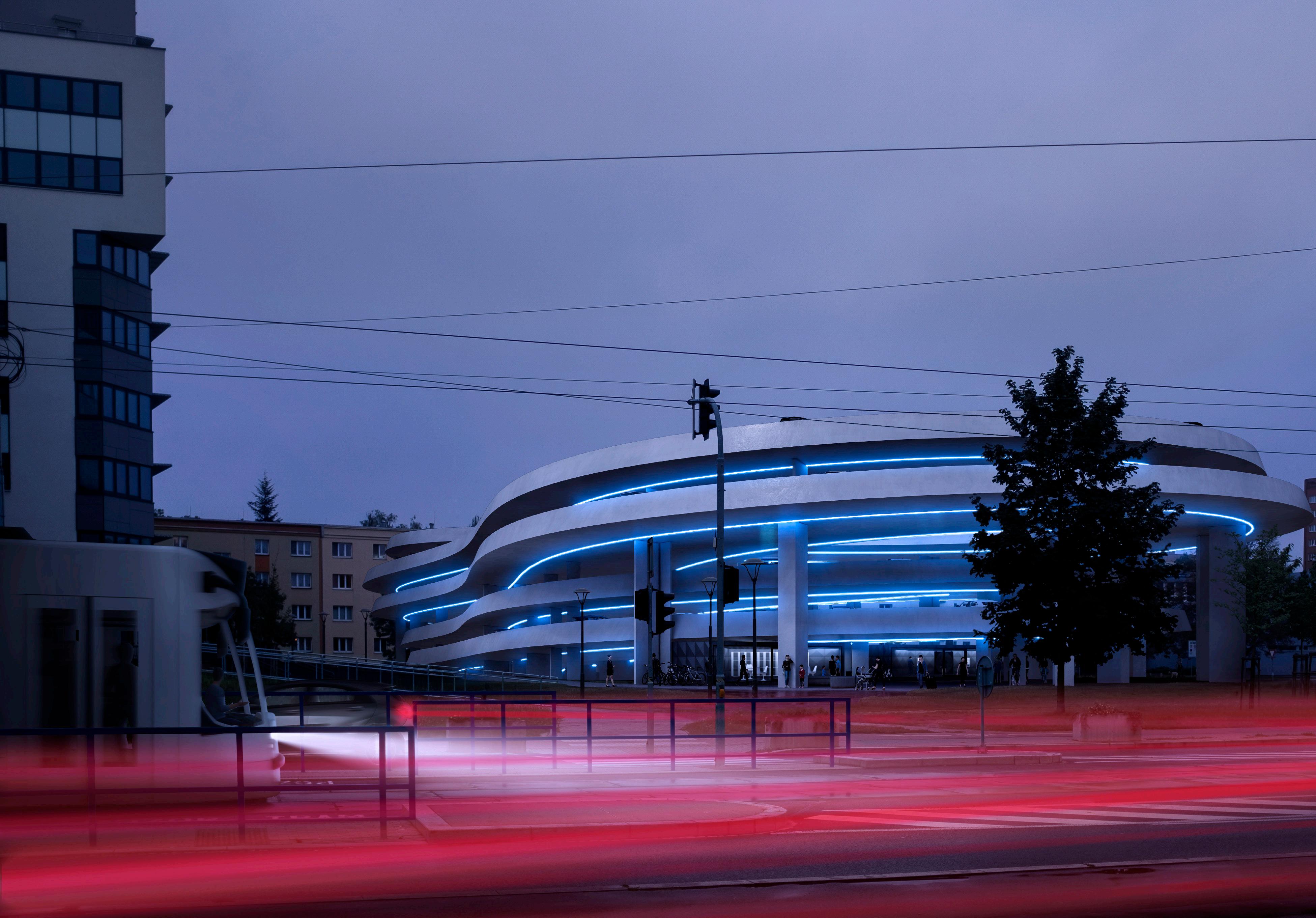
03/ competitions
Parking infrastructure Ostrava
Jiri Vitek architectural workshop
Competition 2019
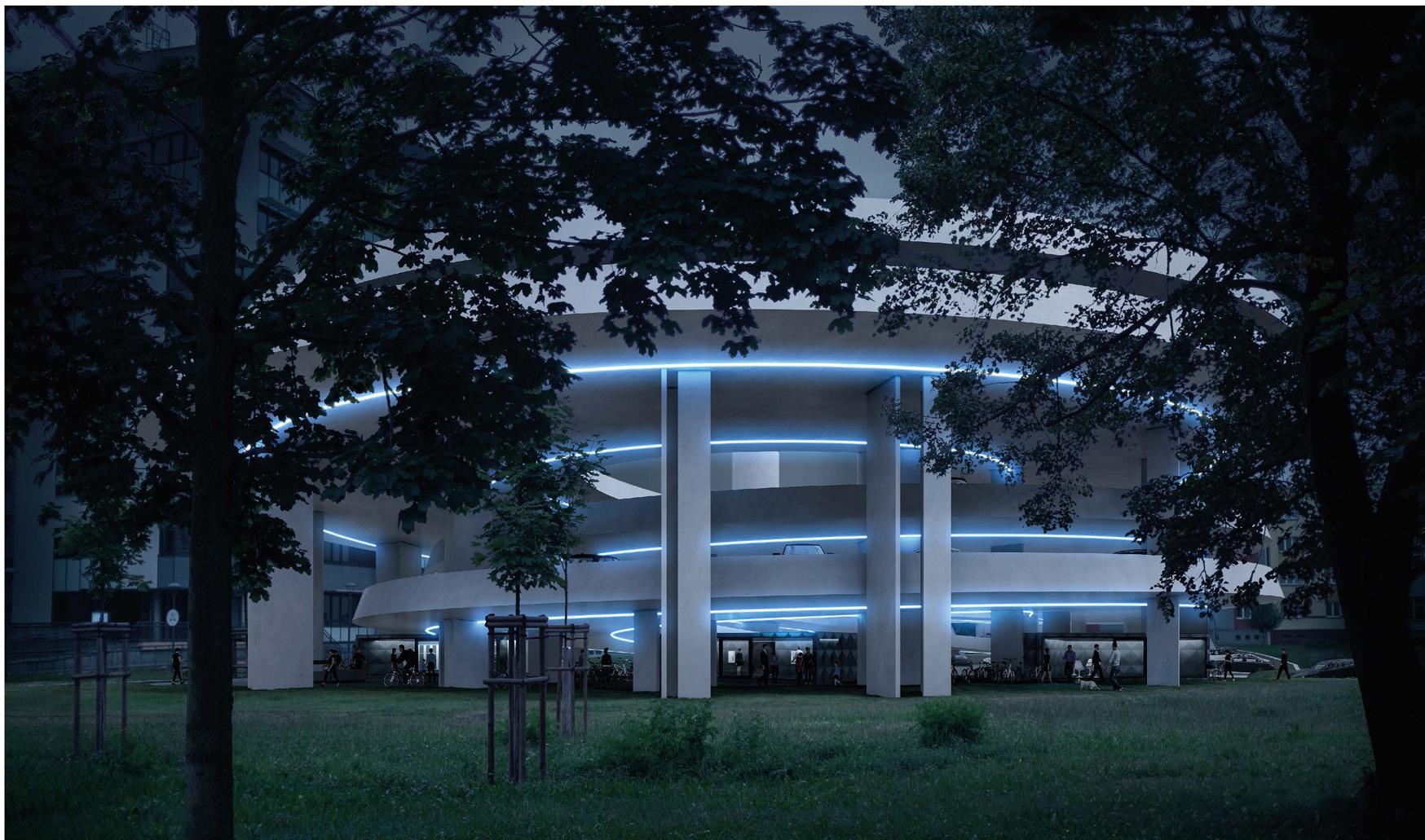
Thesis:
Considering the concept of a new parking house in Ostrava, we were concerned with two main theses.
1. What is the essence of a parking house and
2. how it affects its surroundings? We came to the conclusion that the essence of a parking house is a simple road and parking slots. The resulting open structure of the “track” does not close and fill the space with impenetrable objects, but naturally coexist with the place. The resulting art form consciously refers to movement, mobility, speed and semiotically refers the importance and program of the object. As a result, it is clearly read and positively complements the urban structure the context of the place where its openness communicates with the opposite park, its graceful curves guides the pedestrian and its cantilever pull communicates with the Steven Holl Opera building.
Methodology:
Digital techniques are used to design accurate and complex architecture. All the design steps could be optimized and made highly efficient. In subsequent steps, other inputs can easily be integrated painlessly into the process.
The limit of the possible building area was defined and subsequently the points in space defined the ramp curve. Optimization was important to ensure underpasses and appropriate ramp slopes. Thanks to that it was created the very artistic shape of the whole mass of the object. The parking geometry was then generated along with the curve home. The escape cores were suitably positioned to meet the required distances. Given geometry was then analyzed statically. Parking spaces have been digitally positioned to avoid columns and the minimum parking width was maintained.
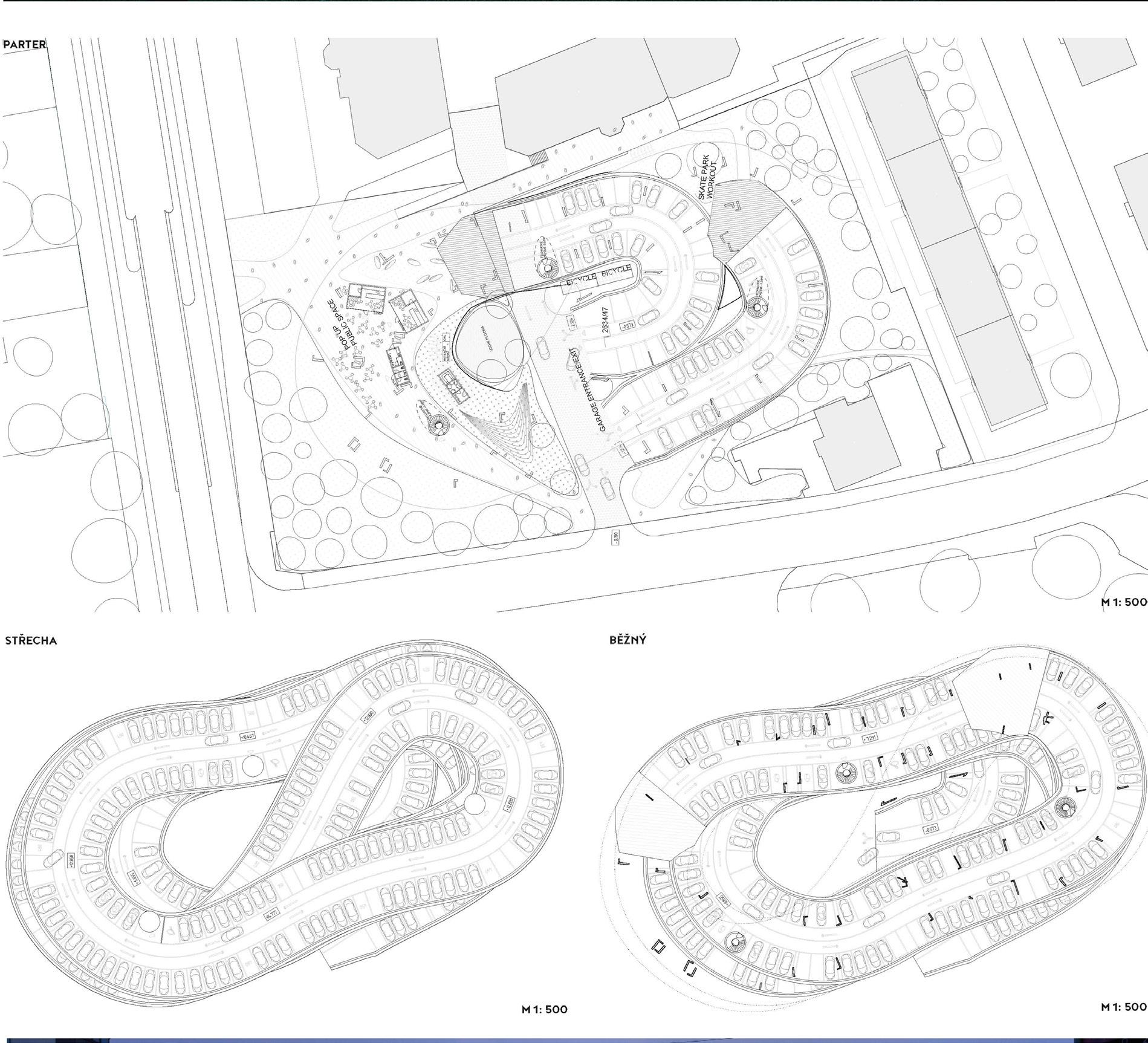

Structural optimization:
The design of the house is strictly reduced to the essence of the project, a ramp with parking slots. During the design, structural analysis and optimization was performed synchronously to make it
it has been proven that the material and structure will be properly distributed and the deflections on the structure will be eliminated. Thus, genetic algorithms were used in the first phase to deploy supports. Movement is up to 3 cm, and the distribution of materials is proven at a pressure of 98% and a tension of 87%
Racing track / parking facilities /
03/ competitions


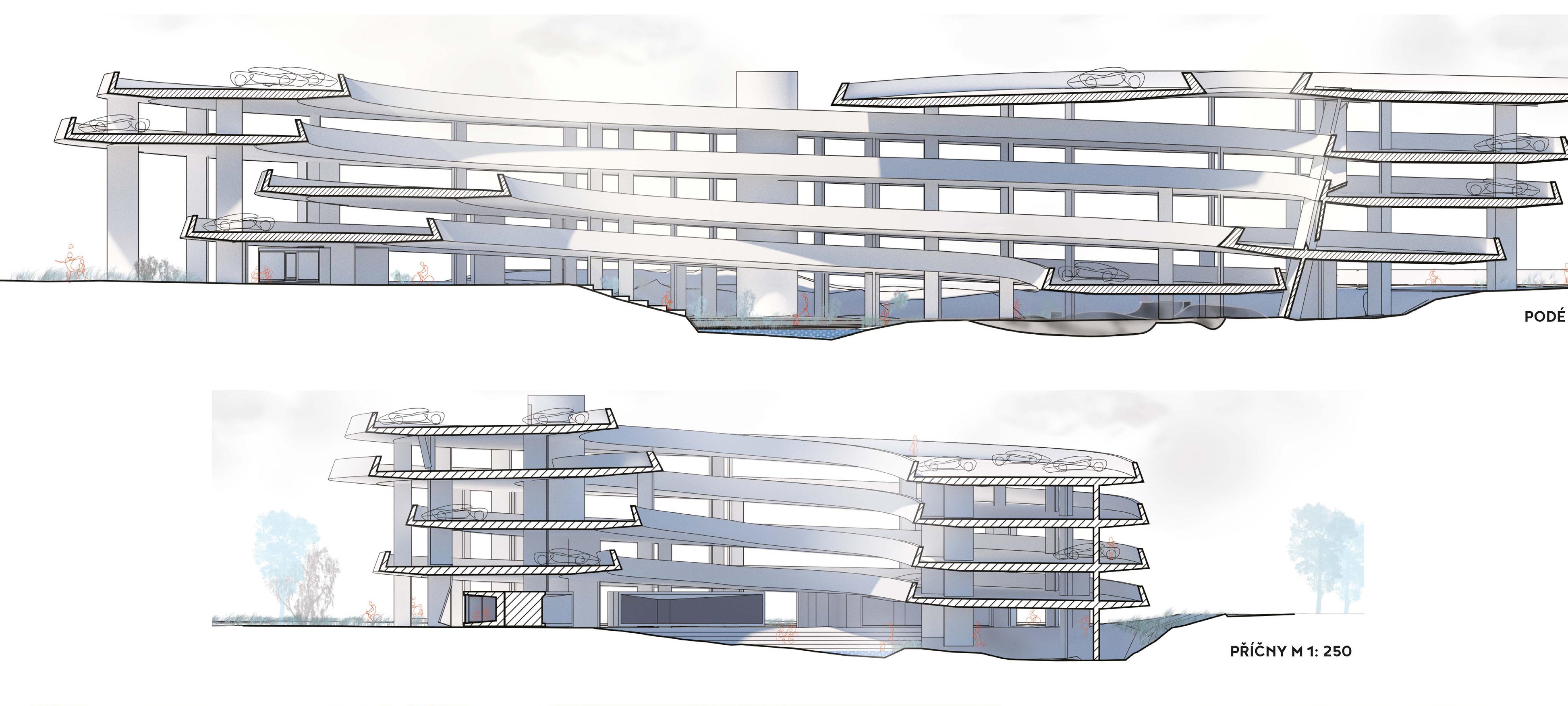
Racing track / parking facilities / 03/ competitions
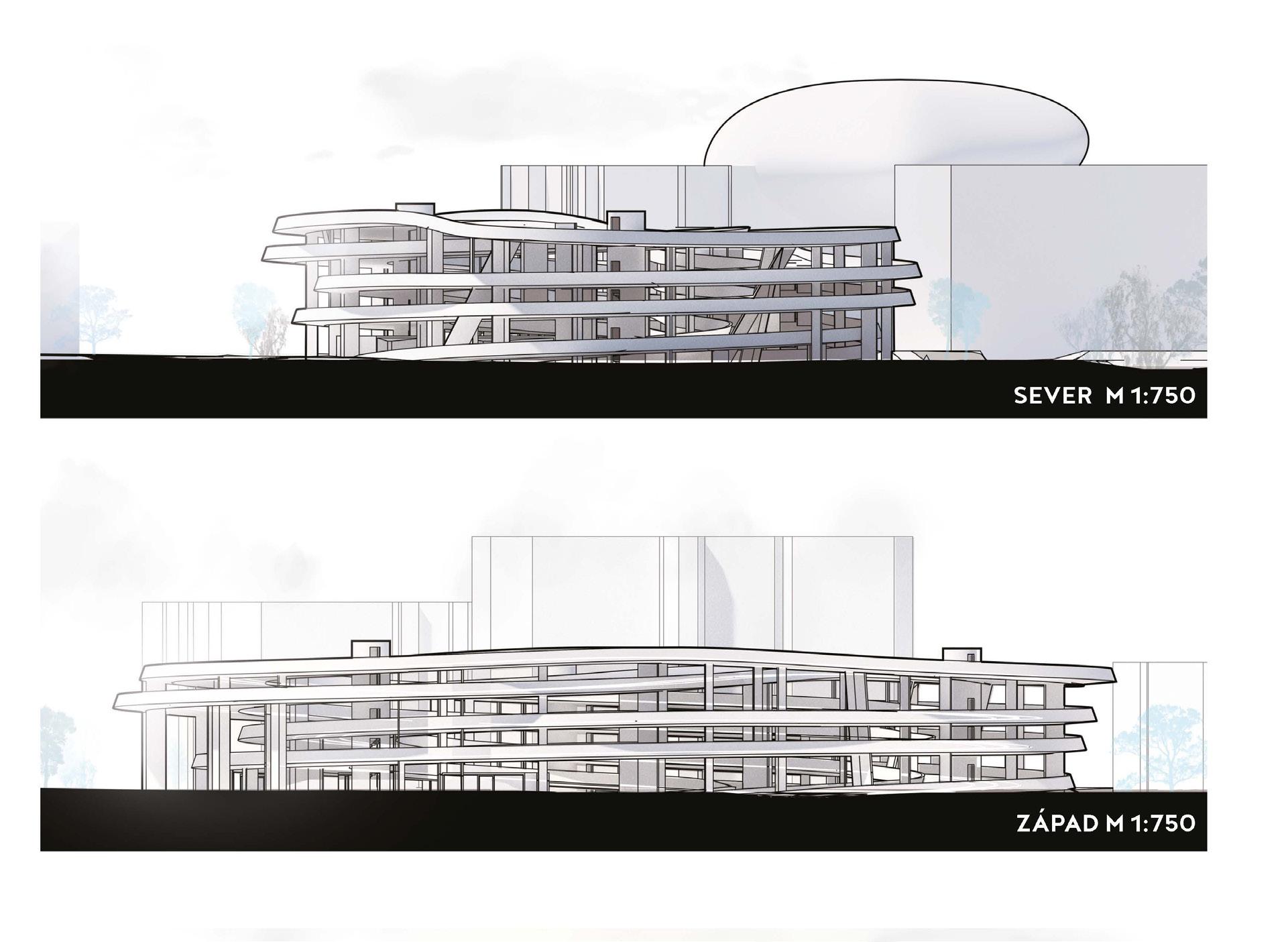
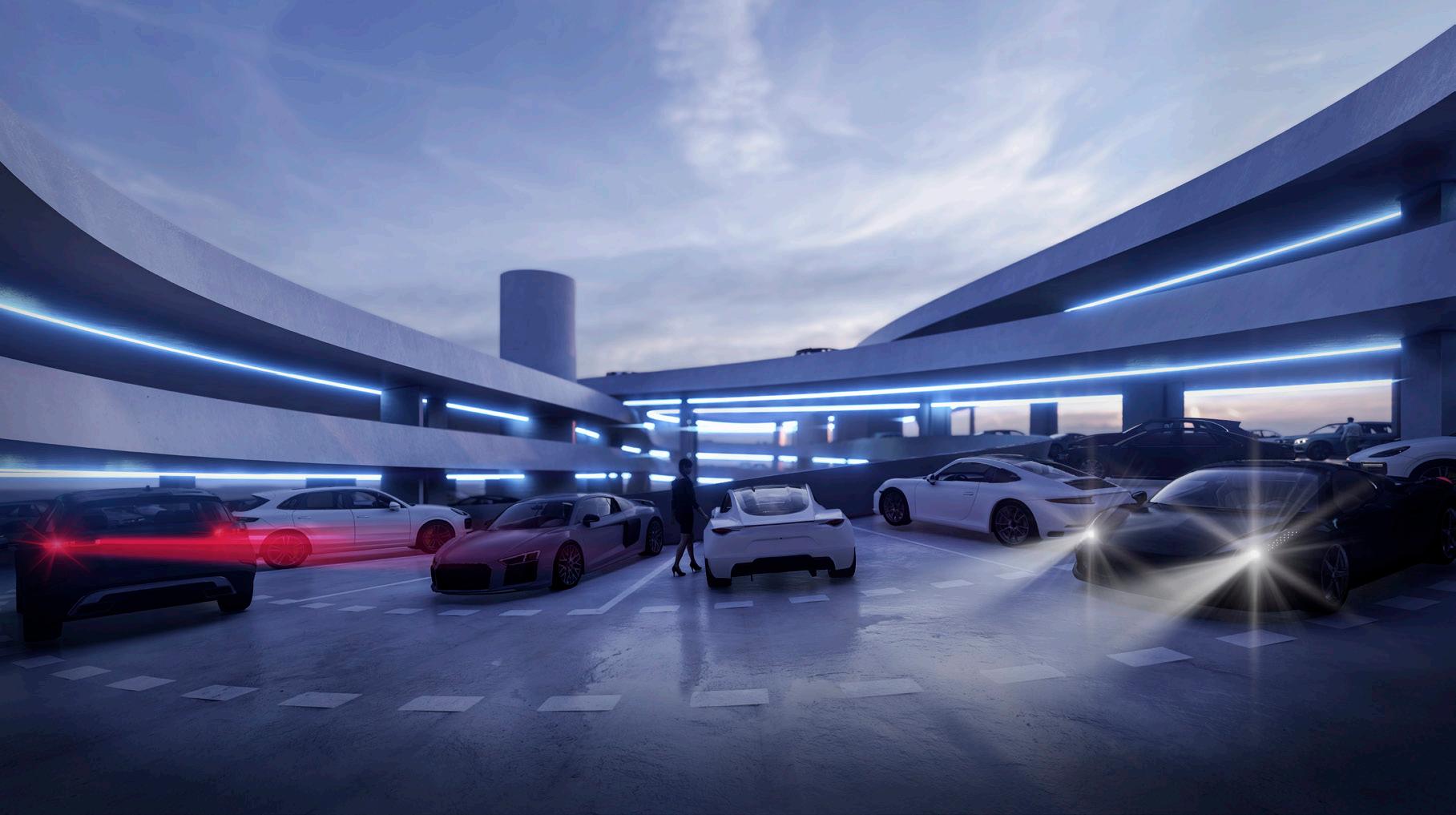


03/ competitions
Language of Architecture:
The building communicates its purpose and maximally demonstrates the possibilities of its time. Elegant curves evoking the movement of cars that today achieve fascinating aesthetics and performance, elegance and efficiency. The horizontals are supported by column verticals that create the same logic thanks to the L profile and
distance alternation of matter and void as a railing line. Coherent aesthetics is topped by narration in the sense bas-reliefs imprinted on pillar surfaces.
Ostrava is rich in great poetics and poetry. Poems by Petr Bezruč, František or members of Jaroslav Žila or Petr Hruška raise the column to an emerald plate.
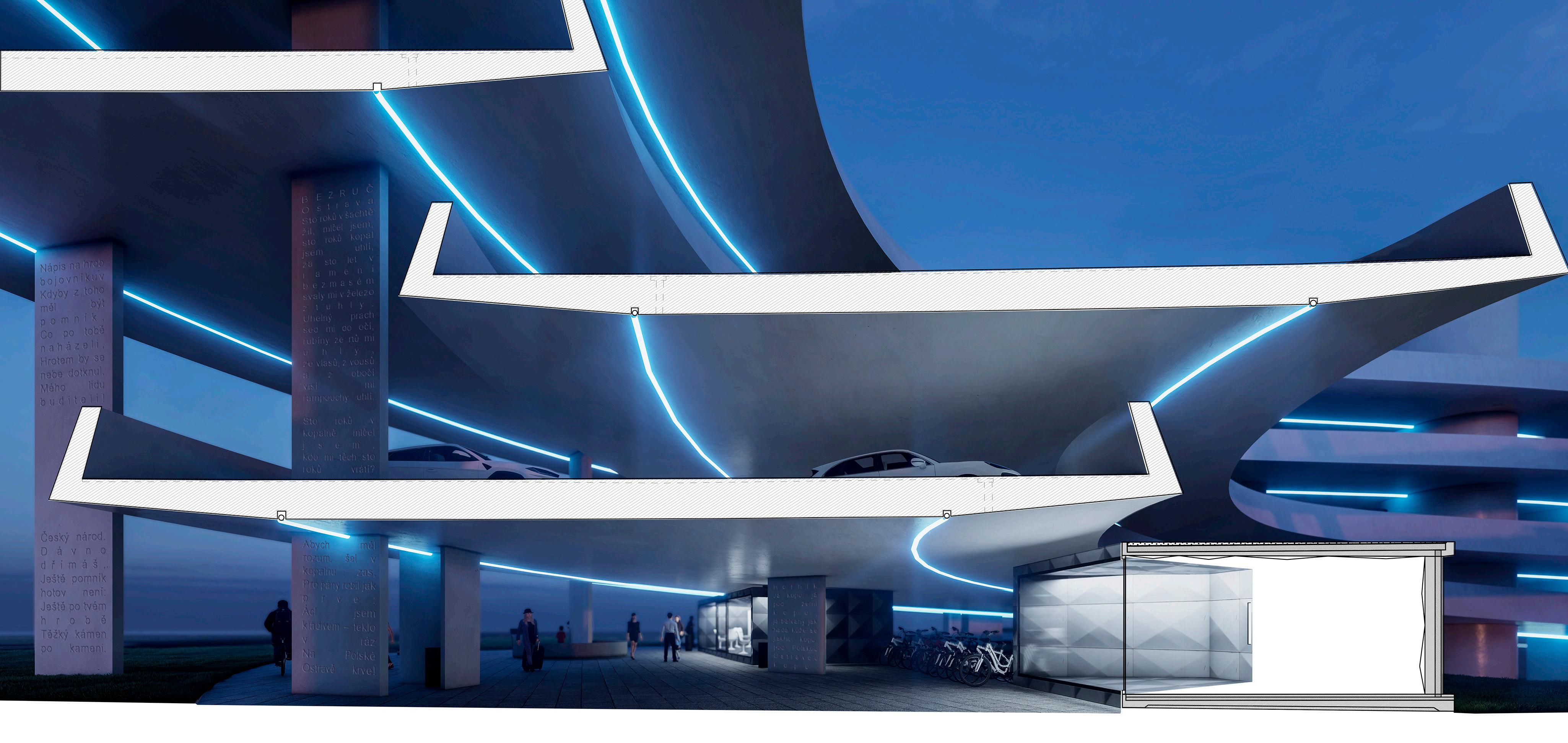 project by StudioURAN: Jiri Vitek, Vaclav Hurnik, Petr Malasek, Mariana Kubova, Vojtech Marek
project by StudioURAN: Jiri Vitek, Vaclav Hurnik, Petr Malasek, Mariana Kubova, Vojtech Marek
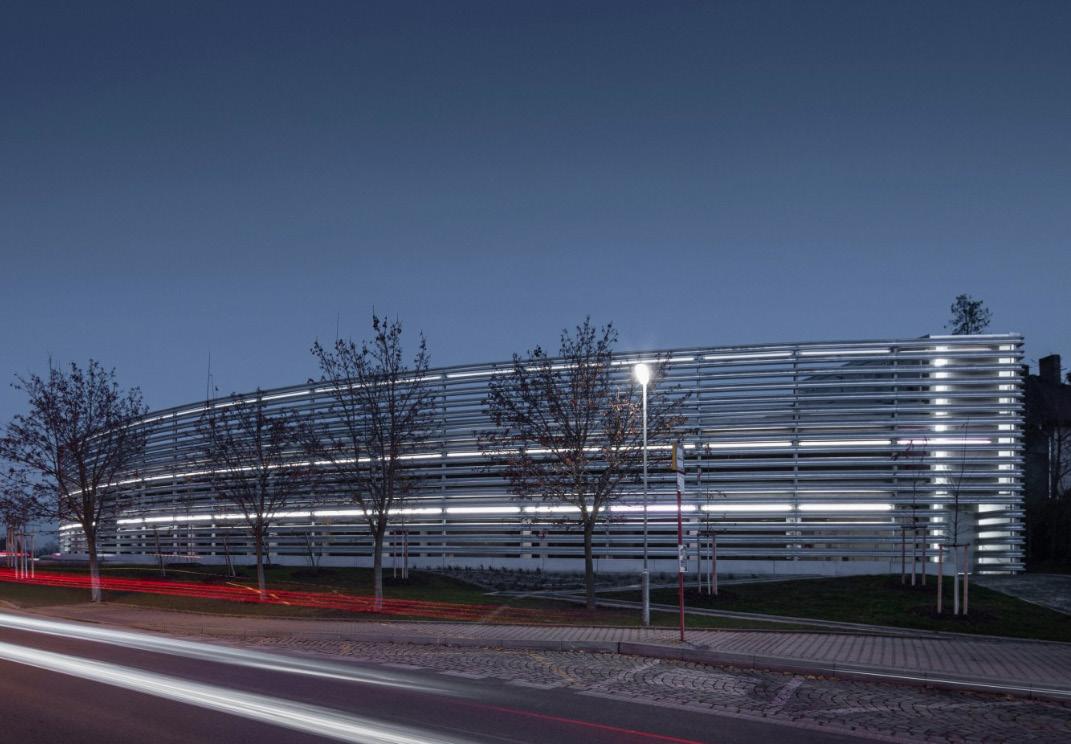 Parking house Dolni Brezany
Parking house Dolni Brezany
2021
Franek Architect/ realization
Parking house Dolní Břežany /
franek architects realization 2020






A unique project designed by architect prof. Zdeněk Fránek, who developed yourArchitects studio for all project stages, integrates novel design with contemporary design techniques. The parametric model was connected to the BIM model via the Rhino - Grasshopper - Archicad platform. Parametrization facilitated complex geometry, optimization and work with project details.
The Parking House is an original minimalist building that demonstrates its function by a facade formed by road barriers. These, brought to an unusual situation, create an original architectural layer. Smooth striping, typical of the work of Zdeněk Fránek, is given a new materiality and meaning. The roundness, which reflects the context with the landscape, underlines the movement and dynamics of the present. It reacts to the flows in the surrounding area, where different speeds of cars, pedestrians and cyclists blend. Everything is enhanced by transferring the slope to the inclination of the ceiling slabs. The overall design process took full advantage of the digital parametric capabilities - from shape generation to the virtual object model presented in HTC glasses.
Two-storey building with mobile roof allows parking up to 200 cars. It forms a triangle with a convex side, using the slope of the land and respecting the slope of the terrain. The layout of the house is divided into parking spaces with a ramp and communication cores. The facade from the north is formed by road barriers with a ventilation function and a high aesthetic experience. The facades of the east and south are concrete with small air vents in a diverse pattern and will grow with ivy and local plants. The LED illumination placed on the crash barrier of the northern façade refers to the long exposure of the passage of cars.
04/ selected projects


The pond in front of the parking house collects rainwater and helps to retain and manage water. It is a non-basement, three-storey monolithic reinforced concrete structure with roofing of access ramps and staircases, based on drilled piles with a diameter of 600 and 800 mm. All horizontal structures of above-ground floors except staircases are inclined 1.60. The baseplate is designed of 300 mm thick waterproof concrete, 250 mm thick floor slabs. Expansion joints were inserted into the ceiling structures. A 100 mm thick reinforced concrete is used on the roof slab, which ensures better protection of the supporting structure against the effects of weather. At the same time, it was necessary to solve the embedding of drainage troughs using the inclination of the structure to gravitational outflow of rainwater. Above the staircase and ramp area, the authors designed an extensive green roof. The peripheral structures of the parking house are made of reinforced concrete monolithic walls with a thickness of 300mm, the inner bearing walls with a thickness of 200mm. The vertical columns on the underground floors will also be reinforced concrete monolithic with a diameter of 400mm.
The main façade consists of a ventilated system of columns and horizontal arches made of road crash barriers. The east and south facades are welded from the section of the crash bar to create an approximately rectangular object that is fixed to the walls by concrete. Rectangular openings are free of fill and help to ventilate the object. The rotation of the holes prevents light pollution from entering the parking house.
In the beginning, the study of the parking house was flat. After inspecting the site and expressing the excavation and embankment balances, it was decided that the construction would be carried out on a slope. Thanks to the parametric design of the project, this operation was painless without the need for complex modifications and changes. By simply adjusting the rotation of the plates in the YZ axis, the entire project has turned into sloping plates. Defining columns using a point on the slab allowed the geometry syntax to be preserved. The parametric model facilitated the generation of various variants of the main facade with crash barriers. The basis was to define the endpoints of the facade and its third point was subsequently generated by a simple algorithm. The authors thus obtained a suitable final shape by choosing from many variations. The placement of small openings on the rest of the facades took place simultaneously with the evaluation of
Zodpovědný projektant Půdorys PARKOVACÍ DŮM DOLNÍCH BŘEŽANECH Břežany výkresu Stupeň Číslo D 1 1 2 LEGENDA MÍSTNOSTÍ 103 SCHODIŠTĚ TECHNICKÁ MÍSTNOST - epoxid prysk - epoxid prysk Nátěr - epoxid prysk-- prysk - prysk Sokl - nátěr prysk-A RKING MÍSTNOST6,539 6,539 A B C D D E E F 11 11 10 10 9 8 3 2 2 1 A X X X X X 12 12PARKOVACÍ DŮM V DOLNÍCH BŘEŽANECH PŮDORYS 1 NP - 50 PARKOVACÍ MÍSTO KOLMÉ MÍST MATERIÁLŮPOHLEDOVÝPOHLEDOVÝ NÁJEZD PARKOVACÍ ZÁVORYIMOBILNÍ VÝŠKOVÝ SYSTÉMSVÁDĚNY POMOCÍ LINIOVÝCH ŽLABŮ JEDNOTLIVÝCH PODLAŽÍCH Zodpovědný projektant Půdorys PARKOVACÍ DŮM DOLNÍCH BŘEŽANECH Obecní úřad Dolní Břežany Měřítko výkresu Stupeň Číslo D 1 1 4 A SCHODIŠTĚ PARKINGA B C D D E E F 11 11 10 10 4 3 1 A X X X X X 12 12 5,000LEGENDA MÍSTNOSTÍ 304 ÚKLID - polyuretan - epoxid prysk - epoxid prysk Nátěr - epoxid prysk- polyuretan - prysk - prysk Sokl - nátěr pryskPARKOVACÍ DŮM V DOLNÍCH BŘEŽANECH PŮDORYS 3 NP - 50 MATERIÁLŮPOHLEDOVÝPOHLEDOVÝ NÁJEZD NA RAMPU SCHODIŠŤOVÉHO VÝPISY PRVKŮPOČET PARKOVACÍCH STÁNÍ - OSOBNÍCH AUTOMOBILŮ VÝŠKOVÝ SYSTÉMSVÁDĚNY POMOCÍ LINIOVÝCH ŽLABŮ JEDNOTLIVÝCH PODLAŽÍCH 2,375 261 153 261 261 261 PARKOVACÍ DŮM V DOLNÍCH BŘEŽANECH SVISLÝ ŘEZ OBJEKTEM B-B - M 1 50
PARKOVACÍ DŮM DOLNÍCH BŘEŽANECH DSP D 1 5-VERTIKÁLNÍ KOMUNIKACE-RAMP ERTIKÁL KOMUNIKACEAMPA-PARKOVACÍ DŮM DOLNÍCH BŘEŽANECH -----------------------------PARKOVACÍ DŮM DOLNÍCH BŘEŽANECH POHLED OD SEVERU - 50 PARKOVACÍ DŮM DOLNÍCH BŘEŽANECH POHLED OD JIHU - M 50-jihu PARKOVACÍ DŮM DOLNÍCH City D 1 1 7 C PARKOVACÍ DŮM DOLNÍCH BŘEŽANECH POHLED OD VÝCHODU - M 50 PARKOVACÍ DŮM DOLNÍCH BŘEŽANECH POHLED OD ZÁPADU - M 1 50 MATERIÁLŮPRŮČELÍ OCELOVÉ OKOLNÍ TERÉN - UPRAVENÝ VÝŠKOVÝ SYSTÉMUpravil Jméno výkresu Pohled od východu západu PARKOVACÍ DŮM DOLNÍCH BŘEŽANECH City Site Postcode Stav výkresu Měřítko kresby 100 ID výkresu D Revize Datum Fránek Architects Česká Republika 639 A C PARKOVACÍ DŮM DOLNÍCH BŘEŽANECH POHLED OD VÝCHODU - M 50 PARKOVACÍ DŮM DOLNÍCH BŘEŽANECH POHLED OD ZÁPADU - M 1 50 POVRCHOVÝCH MATERIÁLŮ PRŮČELÍ - POHLEDOVÝ OPATŘENO IMPREGNAČNÍM NÁTĚREM OZELENĚNÍ POPÍNAVÝMI KONSTRUKCE PRŮČELÍ OCELOVÉ SLOUPY SVODNICE FRACASSO JSFR VLNYVÝŠKOVÝ SYSTÉMUpravil Zkontroloval výkresu Pohled od východu západu PARKOVACÍ DŮM DOLNÍCH BŘEŽANECH Site Postcode výkresu Měřítko kresby 100 ID výkresu D Revize Datum Fránek Architects Česká Republika
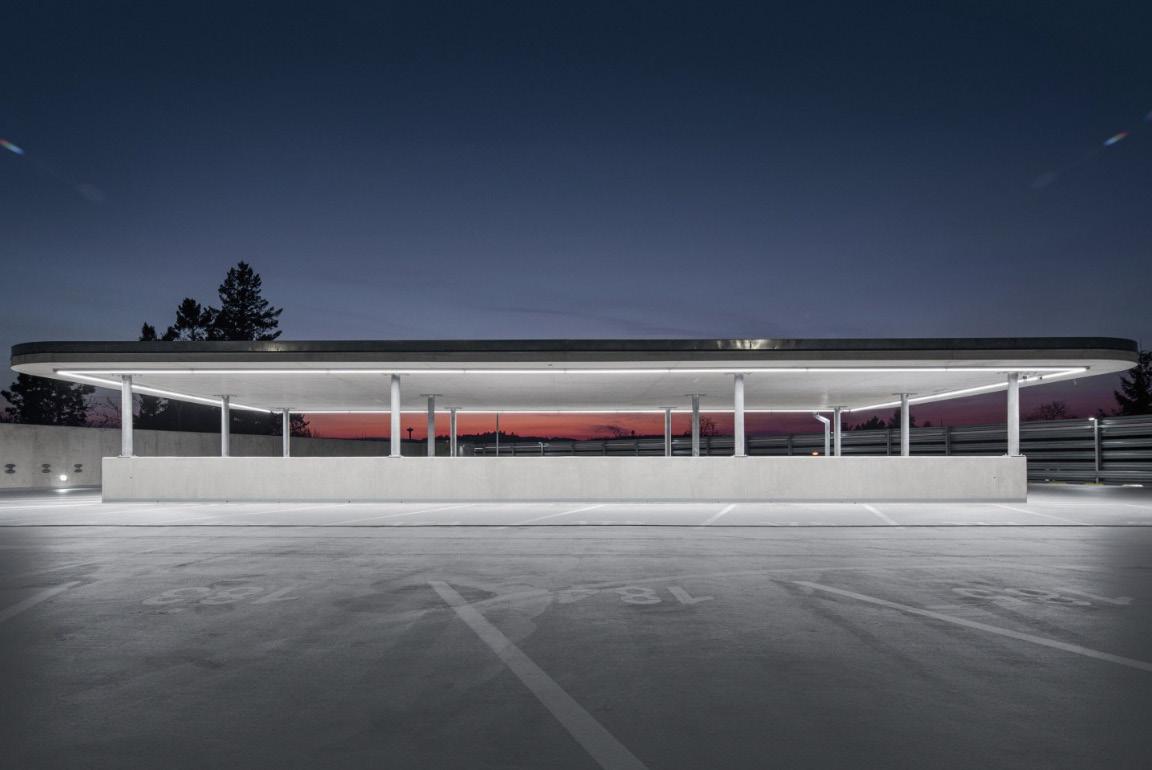
05/ realizations
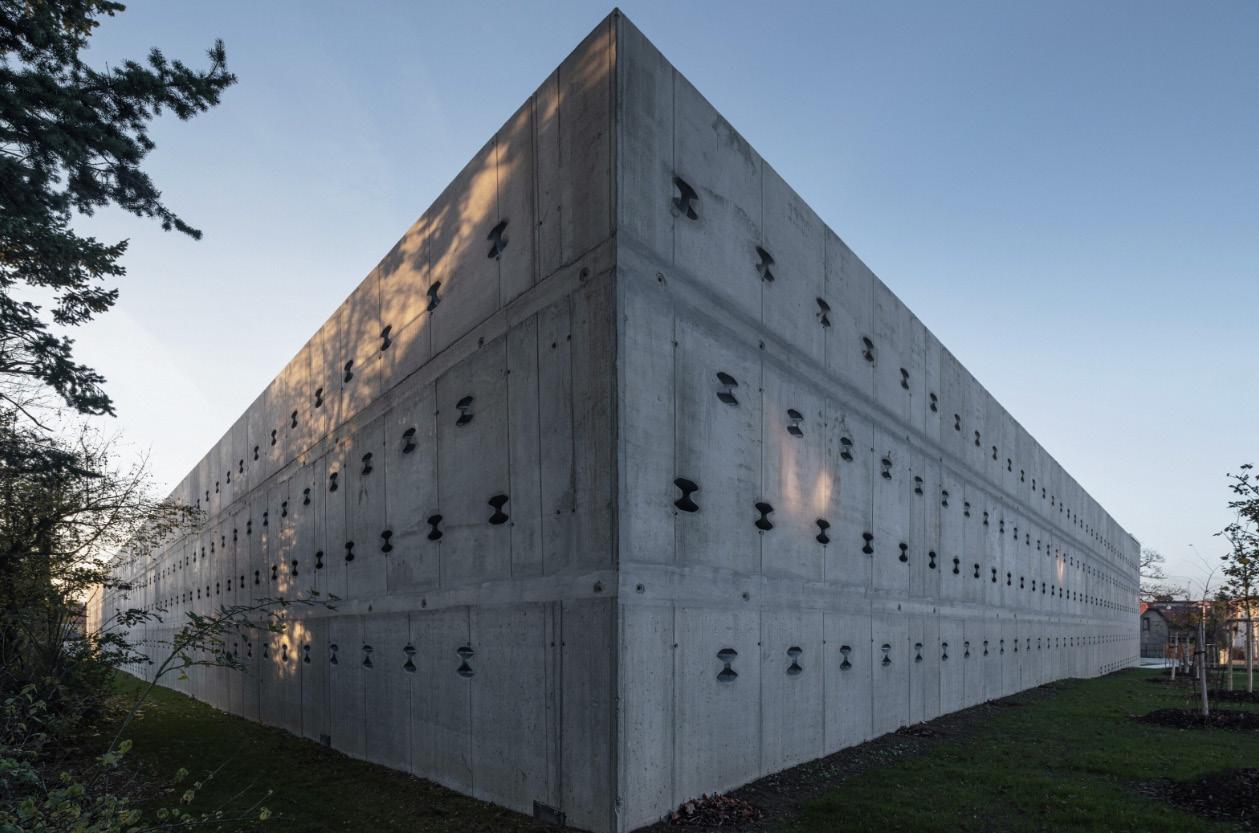
05/ realizations

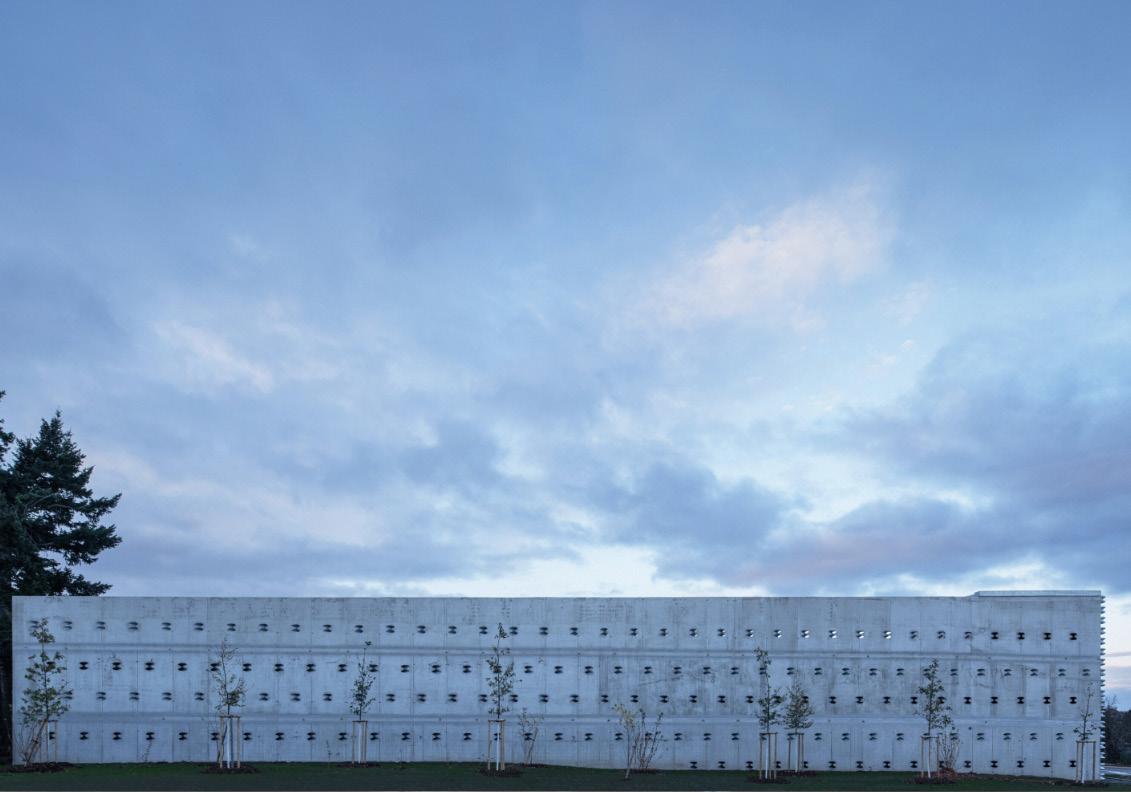


05/ realizations factory Likos Li-Kovo / Franek Architects realization 2019
2021
Green factory Li-KoVo Franek Architect/ realization
factory Likos Li-Kovo / Franek Architects realization 2019 green sustainable living factory
The industrial area on the south-western outskirts of Slavkov u Brna has grown this year by another green building. After the LIKO-Noe experimental building, which serves as a development centre for a company engaged in the production of interior partitions, prefabricated halls and green elements for buildings, a new LIKO-Vo production hall, the first “living” hall in the world, was put into operation here. The concept of living buildings is based on natural thermal stabilisation provided by a green roof and façade, a retention pond and other technologies that enable them - unlike conventional indoor buildings - to cool not only themselves but also their surroundings. In addition to the obvious aesthetic benefit and thermal insulation capacity, the green areas also act as a root treatment plant for wastewater, which is naturally treated and further used for irrigation. With the construction of the hall, LIKO-S is responding to the current climate situation and trying to inspire environmental friendliness.
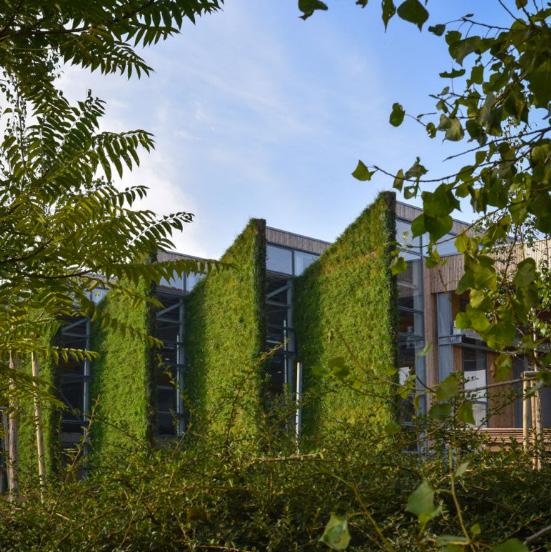
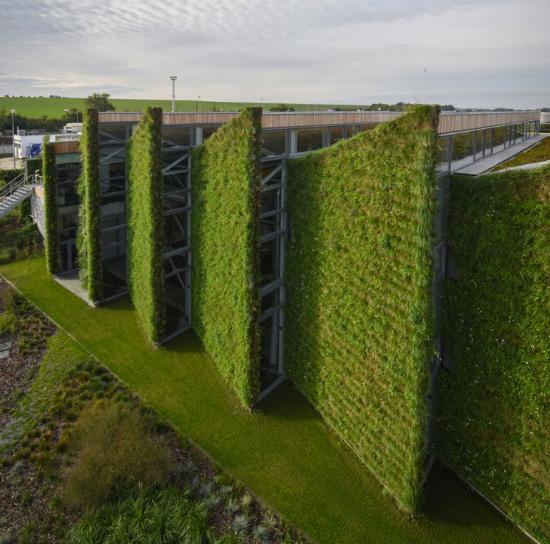
05/ realizations 700 145 365 000 000 000 000 000 13894 34 832 12 163 46 459 000 145 37 086 35000 17500 32500 500 400 300 23200 28870 000 100 37550 37550 932 170 ÚŽLABÍ ÚŽLABÍ SO 06 PARKOVACÍSTÁNÍ R SO 05 KOMUNIKACE SO 07 OPĚRNÁZED´ SO 06 PARKOVACÍSTÁNÍ SO 06 PARKOVACÍSTÁNÍ SO 06 PARKOVACÍSTÁNÍ 2733 11 PARKOVACÍ STÁNÍ SO 01 PŘÍSTAVBA VYROBNÍ HALY OP ŽELEZNICE 2743 67 2735 2744 14 2733 10 2733 11 2747 2743 49 2741 2733 svazek SO 06 PARKOVACÍSTÁNÍ SO 13 SO 12 odvodňovací odvodňovací parkovýobrubník1000 250 parkovýobrubník1000 parkovýobrubník1000 250 parkovýobrubník1000 parkovýobrubník1000 parkový obrubník 1000 parkový obrubník parkový obrubník parkový parkový obrubník parkovýobrubník1000 voda SO 08 TERÉNNÍÚPRAVY SO 04 C D D E E B B 3 280 0000 20420 SO 03 PROVOZNÍBUDOVA SO 02 - VENKOVNÍ PŘÍSTŘEŠEK 172 SO 11 A S 0 000 204 20 Bpv systém LIKO-S PŘÍSTAVBA VÝROBNÍ HALY Situace koordinační 1 200 LEGENDA NOVÝCH OBJEKTŮ STÁVAJÍCÍ BUDOVY PŘÍSTAVBA HALY - ZELENÁ STŘECHA SO 01 932 17 m HRANICE STAVEBNÍCH POZEMKŮ - HRANICE POZEMKŮ INVESTORA KAT HRANICE POZEMKŮ LEGENDA ČAR LEGENDA PLOCH VODNÍ PLOCHY VJEZD DO AREÁLU BODOVÉ ZNAČKY STROM STÁVAJÍCÍ KÁCENÉ STROMY RUŠENÉ TRASY SÍTÍ PÁSOVÁ VPUST RADIORELEOVÝ PAPRSEK R OCHRANÉ PÁSMO ŽELEZNICE INŽENÝRSKÉ SÍTĚ VNITROAREÁLOVÁ DEŠŤOVÁ KANALIZACE PROVOZNÍ BUDOVA - ZELENÁ STŘECHA SO 03 172 M OPĚRNÁ ZED´ SO 07 DL 28 87 PŘÍSTŘEŠEK PRO VENKOVNÍ JEŘÁB SKLAD VÝROBKŮ SO 02 384 m NAVRHOVANÁ ZELEŇ 2741 PARCELNÍ ČÍSLA STAVEBNÍCH POZEMKŮ 2741 18 PARCELNÍ ČÍSLA AREÁLOVÝCH POZEMKŮ STÁVAJÍCÍ VNITROAREÁLOVÉ KOMUNIKACE K Ú SLAVKOV U BRNA STÁVAJÍCÍ OPLOCENÍ VÝŠKOPIS POLOHOPIS POŽÁRNĚ NEBEZPEČNÝ PROSTOR SO 01 PŘÍSTAVBA HALY KOVOVÝROBY SO 02 VENKOVNÍ PŘÍSTŘEŠEK SO 03 PROVOZNÍ BUDOVA - STÁNÍ PRO TRAKTOR ÚDRŽBA AREÁLU SO 04 ZPEVNĚNÁ PLOCHA PRO UMÍSTĚNÍ NÁDRŽI NA TECHNICKÉ PLYNY SO 05 KOMUNIKACE SO 06 PARKOVACÍ STÁNÍ SO 07 OPĚRNÁ ZED´ SO 08 TERÉNNÍ ÚPRAVY VNITROAREÁLOVÁ DEŠŤOVÁ KANALIZACE VNITROAREÁLOVÁ SPLAŠKOVÁ KANALIZACE SO 12 SO 11 SO 13 NN VO ZPEVNĚNÉ PLOCHY 95 MÍST - PROPUSTNÝ MATERIÁL - PARKOVÁNÍ SO 06 ZPEVNĚNÉ PLOCHY - SCHODY TERASA - HLAZENÝ BETON SE VSYPEM ZPEVNĚNÉ PLOCHY - TERASA CHODNÍK - DŘEVO NOVÉ VNITROAREÁLOVÉ KOMUNIKACE - ETAPA SO 05 NOVÉ VNITROAREÁLOVÉ KOMUNIKACE - asfalt SO 05 NOVÉ VNITROAREÁLOVÉ KOMUNIKACE - zatravňovací bloky ? SO 05 ČÁRY VÝŠKOPISU Železný Fránek Architects Jméno výkresu Situace koordinační LIKOPŘÍSTAVBA VÝROBNÍ HALY Splavu Česká 684 Historie revizí Fránek Architects Kamenná 835 Brno Republika
Zodpovědný projektantPŘÍSTAVBA VÝROBNÍ Splavu Fránek Architects Republika D 1 1 02 KANCELÁŘ- pohledový-- pohledový--205 515 867 481 481 481 481 580 B 1 B 2 B 2 B 3 B 3 B4 B4 000 204 20 VEGETAČNÍBLOKY----------VEGETAČNÍBLOKY VEGETAČNÍBLOKY VEGETAČNÍBLOKY VEGETAČNÍBLOKY KOŘENOVKA 000 Kompresor Strojovna000 600 000 600 000 600 000 600 ZÁVLAHY žlab - energokanál žlab - energokanál000 000 000 MONTÁŽ VELKÁ ÚKLID TECHNICKÁ MÍSTNOST 06 02 05 02 05 615 200 800 200 867 700 700 700 700 215 481 569 309 A SP SP 2 150 790 profil spojovací pás RZP 10/24/100 01 NP 1000 240 100 S 000 204 20 Bpv STĚNOVÝ PLÁŠŤ SKLÁDANÝ dřevěný sibiřský difúzně otevřená folie aplikaci ICYNENE nosný STĚNOVÝ PLÁŠŤ PANELOVÝ mezi objekty požární např PODZEMNÍ LIKOPŘÍSTAVBA VÝROBNÍ NP 50 25 MÍSTNOSTÍ LEGENDA SKLADEB STĚNOVÉ PLÁŠTĚ LEGENDA MATERIÁLŮ ŽELEZOBETONOVÉ paneluRÁMOVÉ PŘÍČKY DSP SO 01 STĚNOVÝ PLÁŠŤ SKLÁDANÝ vegetační bloky vegetačních fólie aplikaci ICYNENE nosný POLYURETANOVÁ STŘÍKANÁtepelné nopová AKUSTICKÁ PŘÍČKAADAPTÉR KASKÁDOVÉHO ODVZDUŠNĚNÍM VYPOUŠTĚNÍM VČETNĚ MAGNEZIOVÉ ČISTÍCÍHO 01 AUTOMATICKÁ ÚPRAVNA PRŮTOK NAPÁJENÍ 01 POZNÁMKY VLEČKU požárně VÝPIS PŘEKLADŮ SP SP
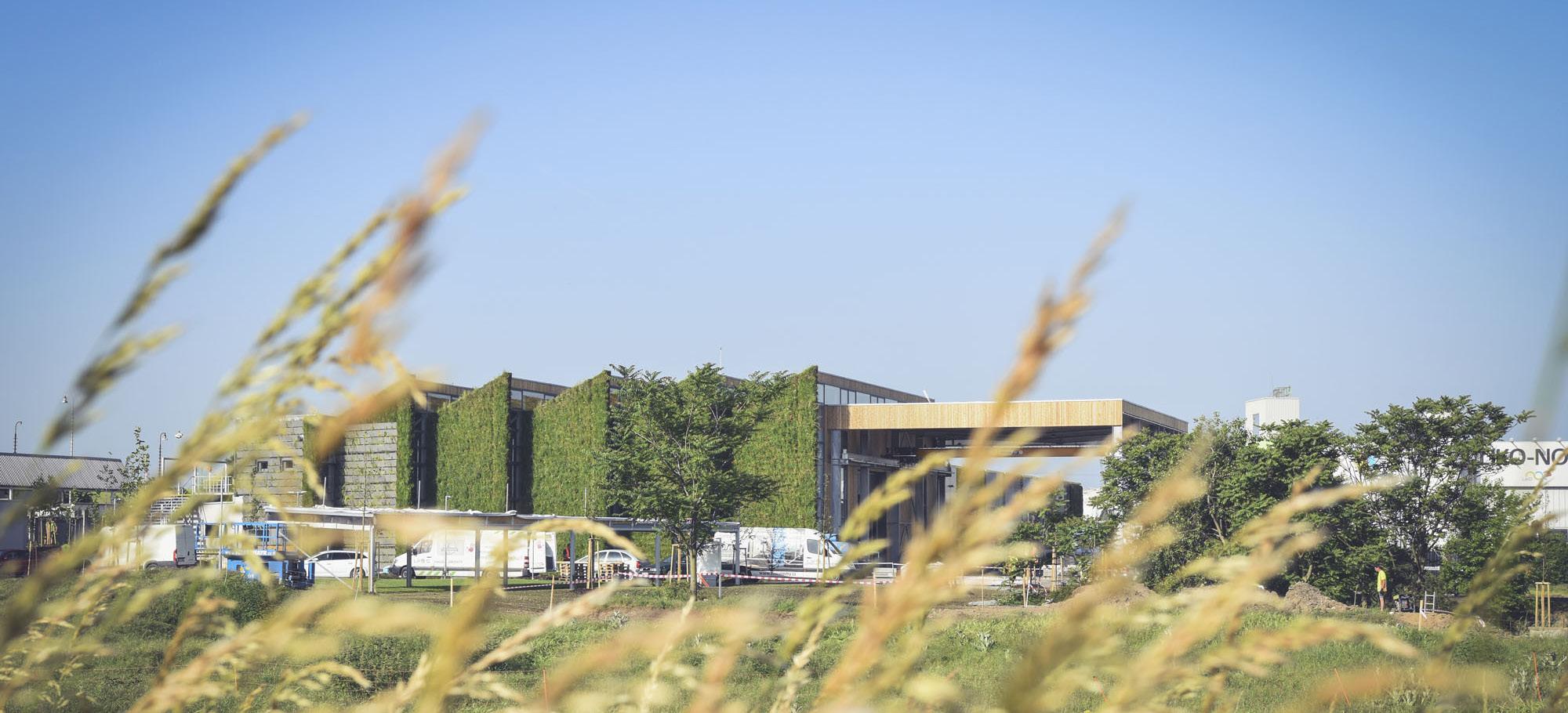
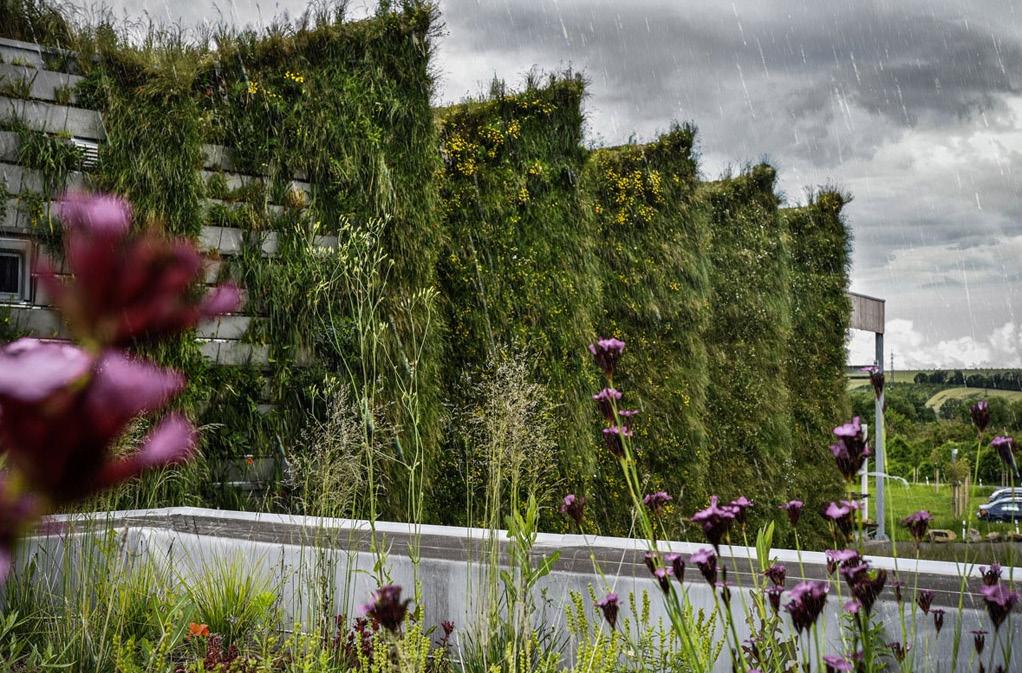

Over the past two decades, approximately 45,000 hectares of production and warehousing halls, along with a similar area of paved surfaces, have been constructed in the Czech landscape. This amounts to a total of 90,000 hectares, primarily fertile land, being utilized for rooftops. These structures contribute to water drainage acceleration, sunlight reflection, and high energy consumption for heating and cooling, negatively impacting the environment.
LIKO-S aims to lead in environmental responsibility by transforming its production site into a modern industrial estate. This involves initiatives





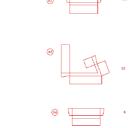




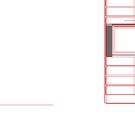
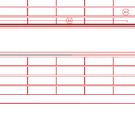




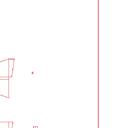
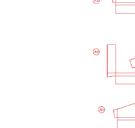
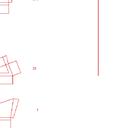


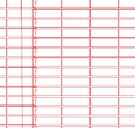

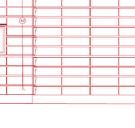



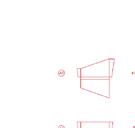


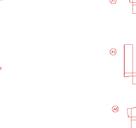
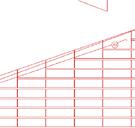
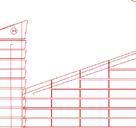


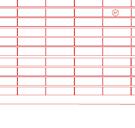



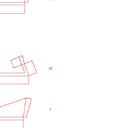



such as planting trees, green roofs, grassed parking areas, root-based sewage treatment plants, retention ponds, and photovoltaics. The company supports electromobility and emphasizes a “happy and green company” philosophy. Regular data evaluation enables the development and demonstration of the benefits of these eco-friendly solutions, creating a positive impact on both employees and the surrounding environment. The entire site, showcasing these initiatives, can be explored through LIKO-Stezka, accessible virtually or in person as part of the company’s awareness-raising efforts.

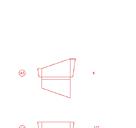



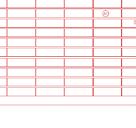

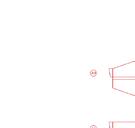
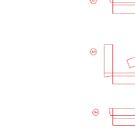
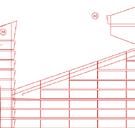
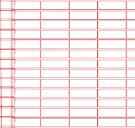




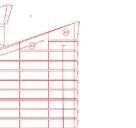
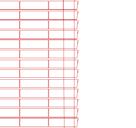
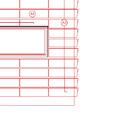



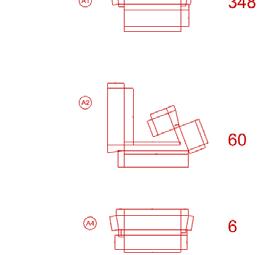


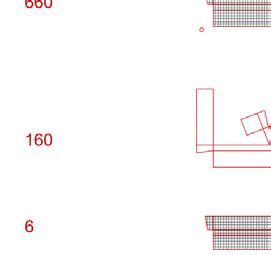

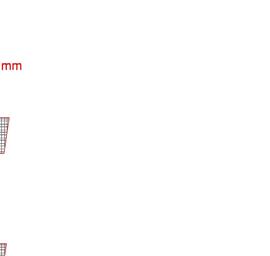
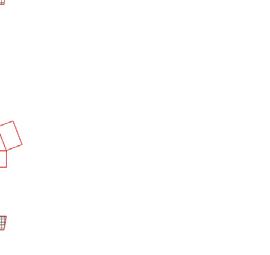

CH-0,000 204,20 +2,290 0,000 204,20 +0,000 204,20 +9,305 +8,236 +8,090 +7,650 +6,070 +8,700 +8,143 +7,520 +7,075 UT +4,370 208,57 +9,100 =204,00 +9,200 +6,740 +6,410 +9,222 +11,083 +6,800 +5,900 +9,100 +9,222 +9,222 80 145 240 +5,580 stávající haly 176 300 -0,200 -0,200 -1,500 -1,400 -1,400 -1,400 -1,400 -1,400 -1,400 -1,400 -1,400 -1,400 -0,200 -0,200 -0,200 ZP SA SA SA SB SB SB SB SA SA SB SB SB SB Řez 12 50 Bpv Souř systém KONSTRUKCE PODLAHY rozptýlenou výztuží hydroizolačnívegetativní kg výška - Hydroosev - Jednovrstvý - nopováhydroizolační - vyztužená proti mechanicky trapézového plechu PÁS - součástí dodávky krytiny jsou všechny kotevní prvky poplastované tvarovky tvarovky prostupů střechy nutné bezvadnou funkčnost střešní hydroizolace STĚNOVÝ PLÁŠŤ SKLÁDANÝ dřevěný provedení výběru pro jednotlivé podtypy opláštění difúzně otevřená folie aplikaci ICYNENE nosný STĚNOVÉ PLÁŠTĚ STŘEŠNÍ PLÁŠTĚnášlapná vrstva - epoxidová stěrka systémového vytápění tepelní vyztuženáSA SB SA

03/ competitions
Airport City Prague. CZ
SUPERLABOR Competition 2019. 4th place
AirportCity Prague, CZ competition
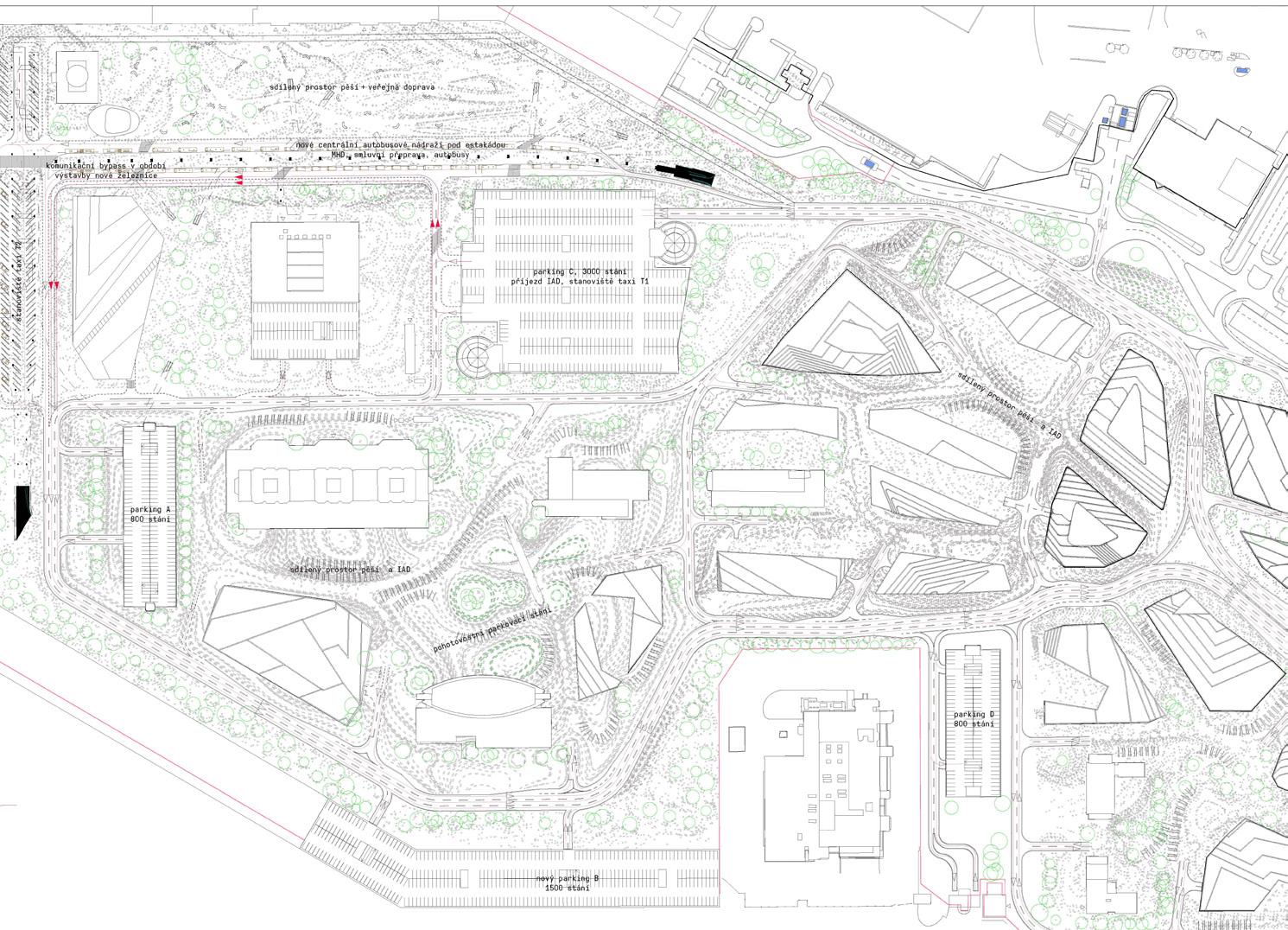
Smooth striped space /1/ framed by the elastic properties of a city is exploring everyday rhythms and changes in a smooth and soft manner. If we would like to generate a city, we have to provide some rules and boundaries, but in the same time, we keep the process open as much as its possible, and errors and deviations are invited more than denied. Evolution of a system is an opportunity to move to next branch of a genome. Emergence states help appear to new qualities. Improvisation is a natural part of the process of creating and leading to randomness. But we are able to understand randomness as patterns or signals. When we see a certain pattern which could be seen as a signal, we use them in the next creative process. Than new language emerge from the system and can be further developed as the new agenda of the urban design.
cated that with few rules will define the coherent and rich environment situations.
Solar Envelope
measured area creates a sunbathing gradient where it is easy to increase the accuracy of the high resolution measurement. Another key moment is the number of envelope polygon checkpoints. With only 4 polygon vertexes, there is a relatively simple cut of the block, but when vertex increases, we reach far more complex envelopes. / Fig. 2 / The envelope tendency then naturally accents the corners and creates a rich platform that very well develops the original language of the city. In a situation where several envelopes are generated, we achieve great complexity and richness of structure while maintaining a unified and coherent language. The resulting architecture reminds of its rich and self growing city. capacities
site area: 534 333 m2
builtable area:
250 m2 builtable volume:
Due to the big evolution of computers and their computation power architects are able to work and manipulate the giant amount of data in the real time. Exact methods as simulation, optimization are used to generate and predict the behaviour of users and architectures. The main aim of urban design should be to provide as elastic plan as possible. This plan should define private and public space and allow users maximum possibilities and freedom to build. We seek for such tools and methods which would be elementary but also sophisti-
This thesis started as pre diploma thesis at Die Angewandte in studio Zaha Hadid as a Emergent Cluster project and had been applied and tested in several competitions. The smooth and striped methodology could be understood as bottom-up system which uses the idea of smooth regulations lines ( whooly path). a rhizomatic street system which generates differentiated urban cells. In cells, we evolve the solar envelope based on genetic algorithm and solar exposition calculation. Public space is translated as urban field / S.Allen ) to provide better navigation and orientation of users. Digital possibility to work with whole part of a city to smallest part of the street is the greatest benefit of computer-aided design. Thanks to the generative design we can share qualities of whole with their parts.
One of the key theme how to define a space or regulate a city is a solar envelope. This concept is based on “ zoning Low “ produced by Hudge Ferrise and research of Ralph L. Knowlese, who define a solar envelope as basic urban tool. The solar envelope defines the maximum possible built-in volume with respect to the shading of neighboring envelope objects. The envelope determines the polygon of the building plot, which can be from geometric primitives to rugged polygonal shapes. There is no flat roof. The top points are joined by a polygon and create a differently sloping roof area according to a specific context. Using the genetic algorithm, we are looking for the optimal solution to the set points, maximum volume and maximum exposure to the sun. The program can look at a large number of envelopes at a time, so the system looks for such a possibility that the whole newly proposed part takes into account the shadowing of itself and the context of the place, ie the surrounding objects, therefore, no block objects / maximum volume / so that the total volume passes the beams to adjacent envelopes. Another change is the possibility of measuring the entire spectrum of the sun’s movement, not just a specific hour but, for example, a whole day. Using meteorological data we can include the number of cloudy days. Setting the resolution of the



03/ competitions
136
3 084 493
m3




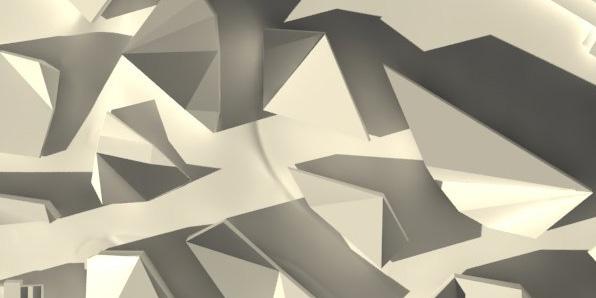


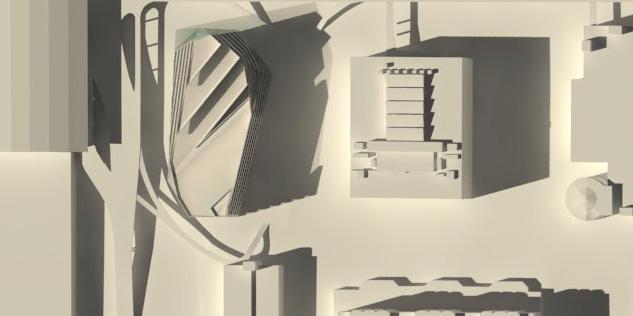
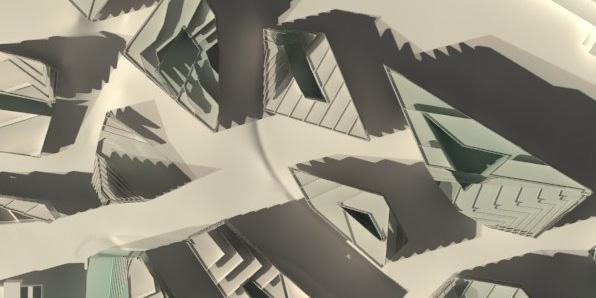


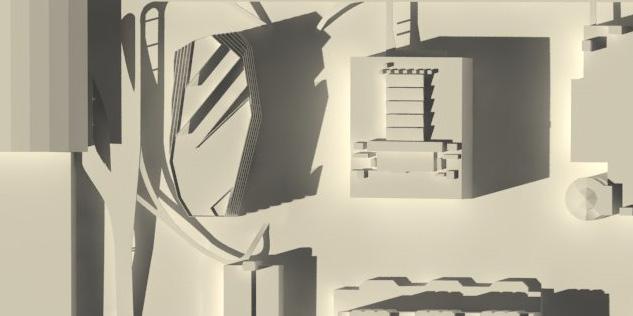



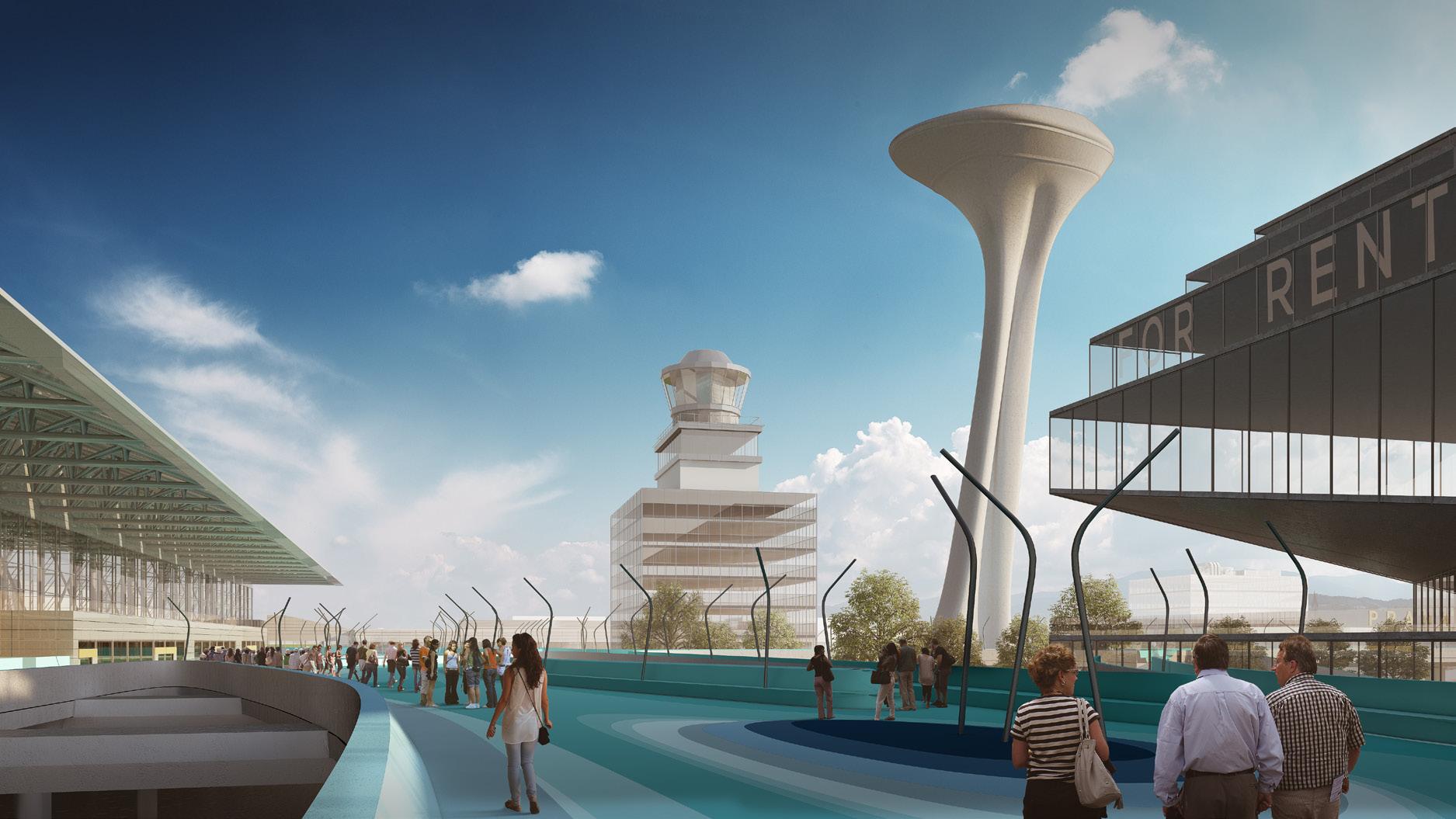

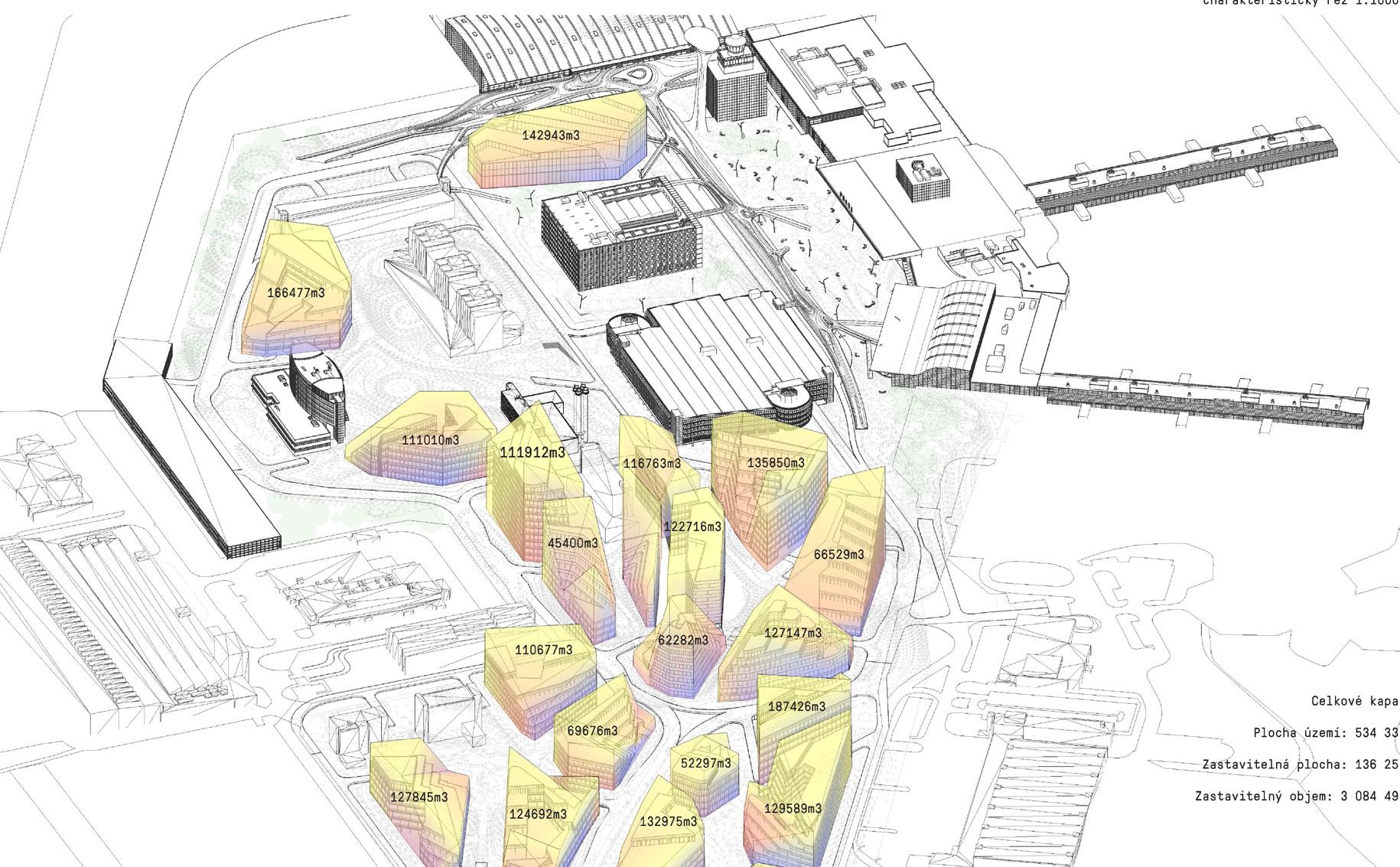
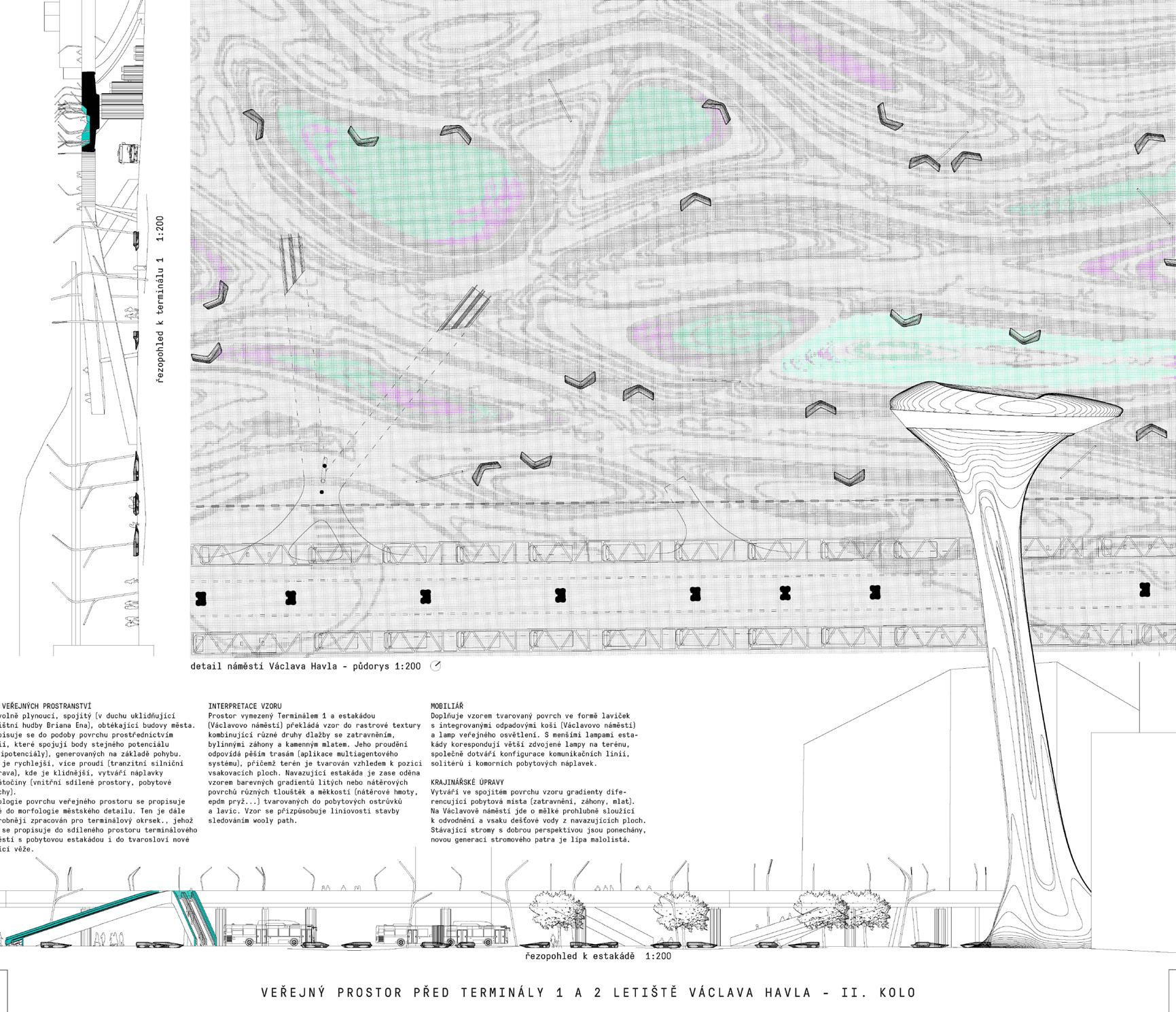
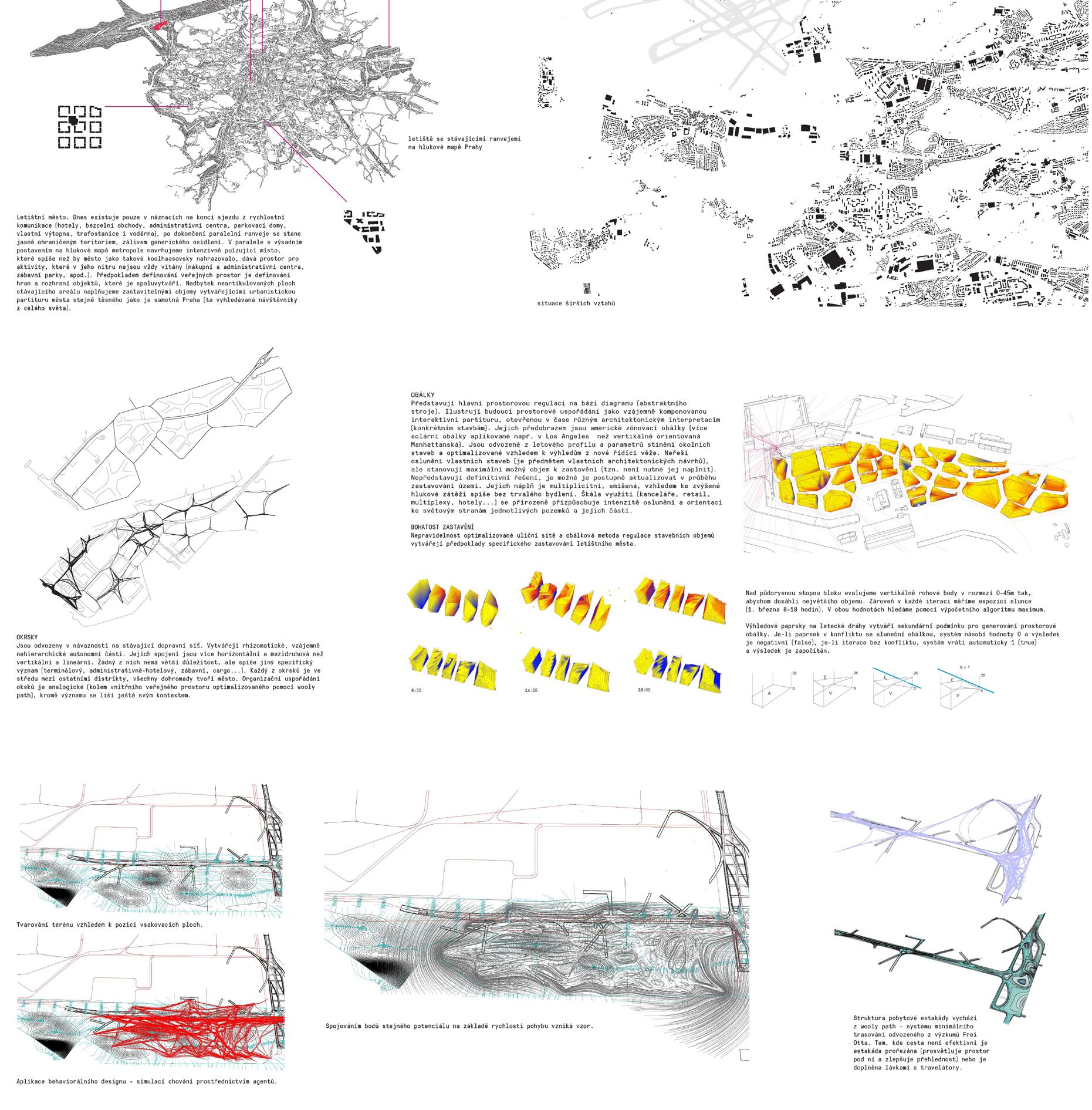
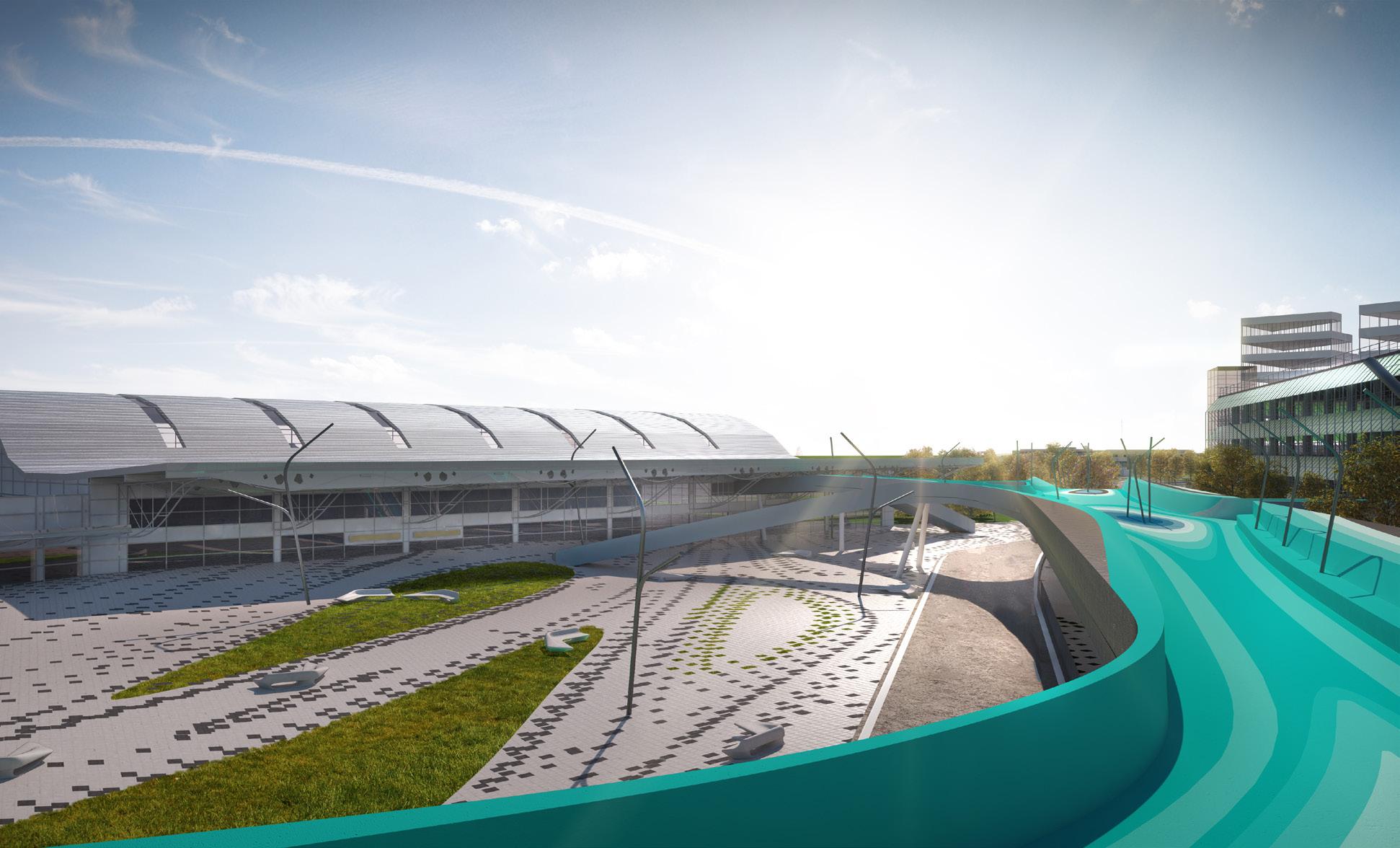 Project by SuperLabor : Jiri Vitek, Jakub Kopec, Michal Mačuda, Marek Chmiel, renderings: Flying Architects
Project by SuperLabor : Jiri Vitek, Jakub Kopec, Michal Mačuda, Marek Chmiel, renderings: Flying Architects
Dvě Věže Plzeň. CZ
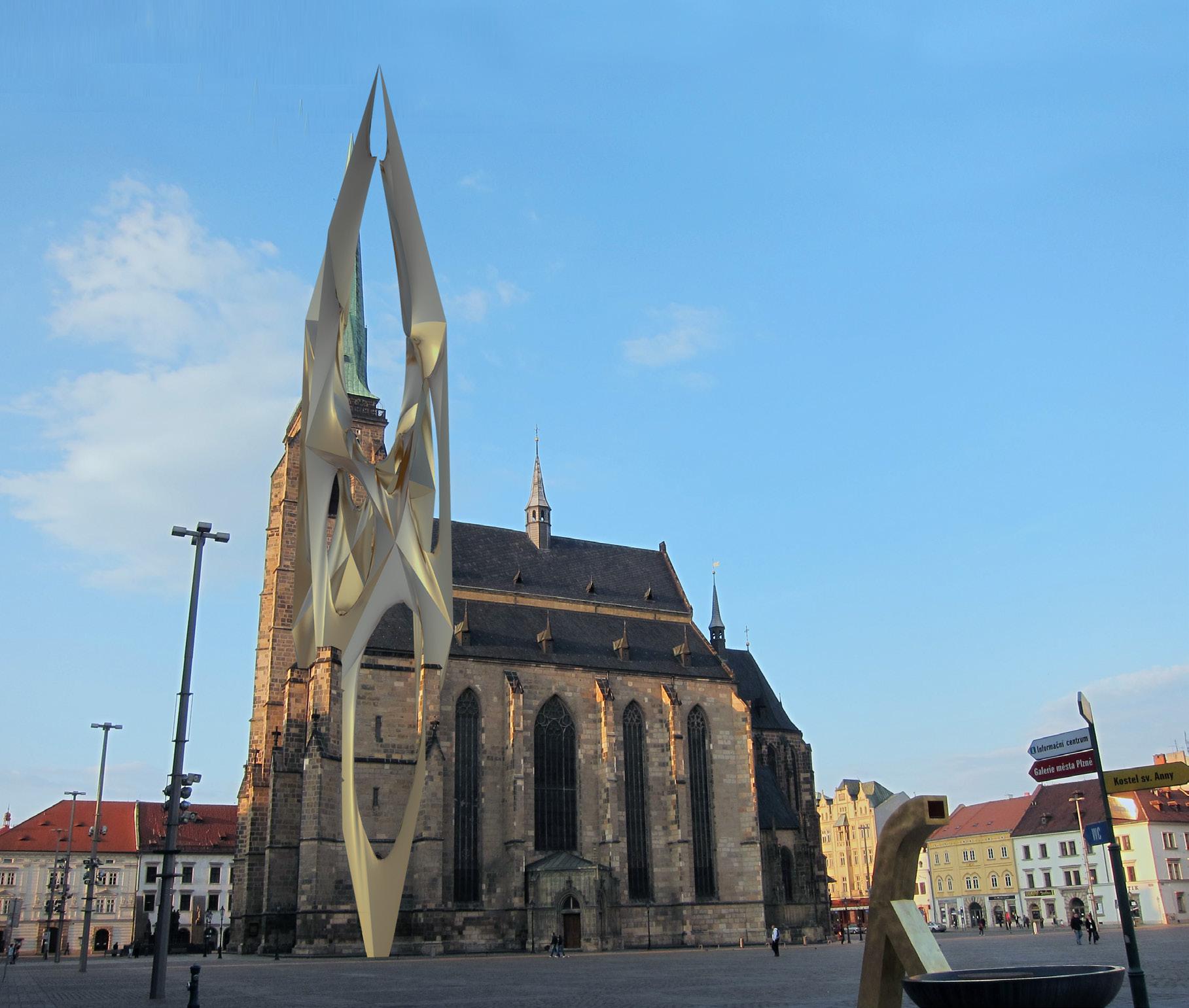
The design of the second tower of the Pilsen Church of St. Bartholomew is based on the geometry of the existing tower. The analysis of geometry shows the basic position on the square, which is offset in the ledge. The base of the roof is built on an octagon and the top of the tower is pushed to the point. The height of the individual geometric formations is placed in accordance with the existing template. Between the layout control objects / diagrams /, we generate a new control surface to maintain the longitudinal and transverse views. The basic reasoning assumes the tower as a skeleton structure derived from a gothic model without a material filling. This creates a discussion between the two towers. Functionally, there is no need to load the assignment. Lightweight steel frame construction is applied by components to the generated control surface. The component is based on a square and rotated hexagon with rounded edges. The number of
components is optimized in the U-axis to 3 and in the V-axis to 4. The generated structure is precisely fitted to the existing pillars of the unfinished tower. the structure is clad with steel sheets with a weather-resistant finish and is gold-plated. The material refers to the installed statues in the square. It is not only by using a new design methodology - digital design - that we achieve a contemporary language. The materialized construction of the new tower is embedded in the tradition and ontology of sacred geometry, allowing visual interconnection - vist with the existing tower and refers to the future. It will have bells installed.
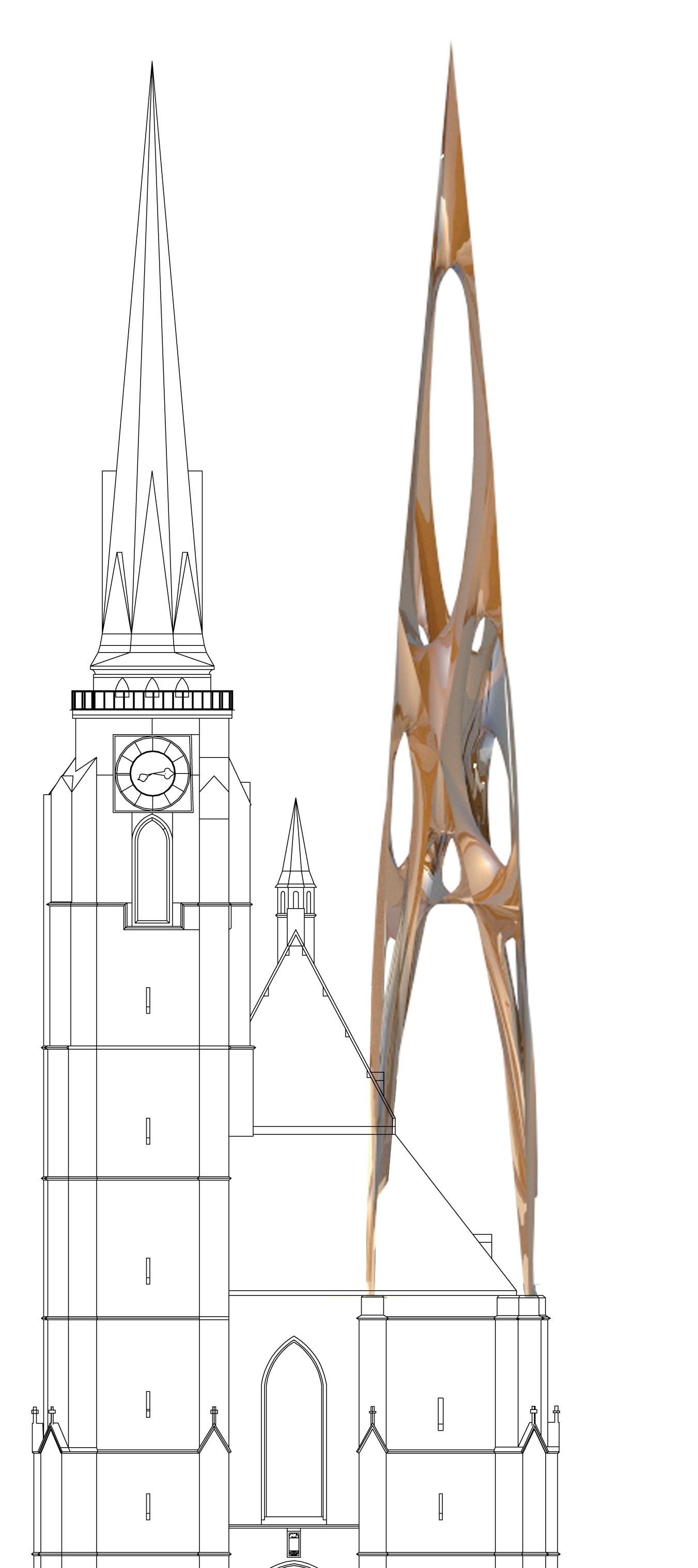
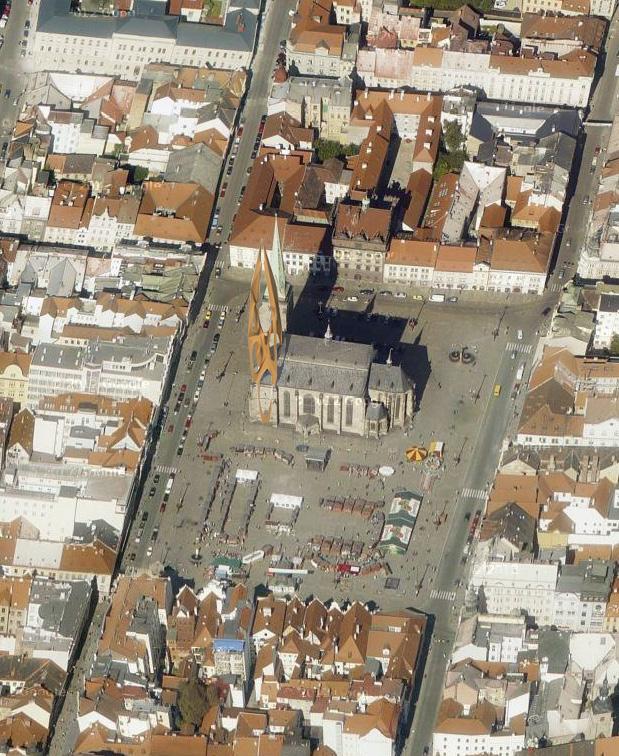



competition 03/ competitions
Skywalk Klínovec / franek architects
The site is located beneath the mountain ridge of Klínovec. The structure comprises several components: Entrance Structure (SO01), Connecting Footbridge (SO-02), and Slide Object (SO-03).
The boarding platform for the footbridge is situated near the upper station of the cable car and the newly designed restaurant. From there, the connecting footbridge leads to the entrance structure and extends to the tower object.
The entrance structure is positioned at the beginning of the construction with secured access from the boarding footbridge. It is designed as a single-story building without a basement. The structure accommodates two small ticket booths, a gift shop with storage and operational facilities, an office, a technical room, a staff changing room, and restroom facilities for both men and women. The small booths are intended for ticket sales and visitor information services, while the gift shop will offer souvenir items. The total number of employees in both the entrance structure and the slide object is expected to be a maximum of 8.
The connecting footbridge links the surrounding terrain via the entrance structure to the proposed tower of the slide object. The footbridge has a total length of 307 meters, featuring no roofing and bordered by vertical posts. It is equipped with protective railings along its entire length.
The slide object is a new type of tower allowing an unrestricted 360° view of the horizon. At the top, the tower is adorned with a ring with an inner diameter of 54 meters. Beyond this ring, there are no structures obstructing the panoramic view, except for safety lighting for aerial navigation. The tower incorporates various attractions such as slides, sleeve attractions, and more. An steel stairway and an elevator shaft, designed for evacuation purposes, are located adjacent to the tower to ensure safe egress of individuals.


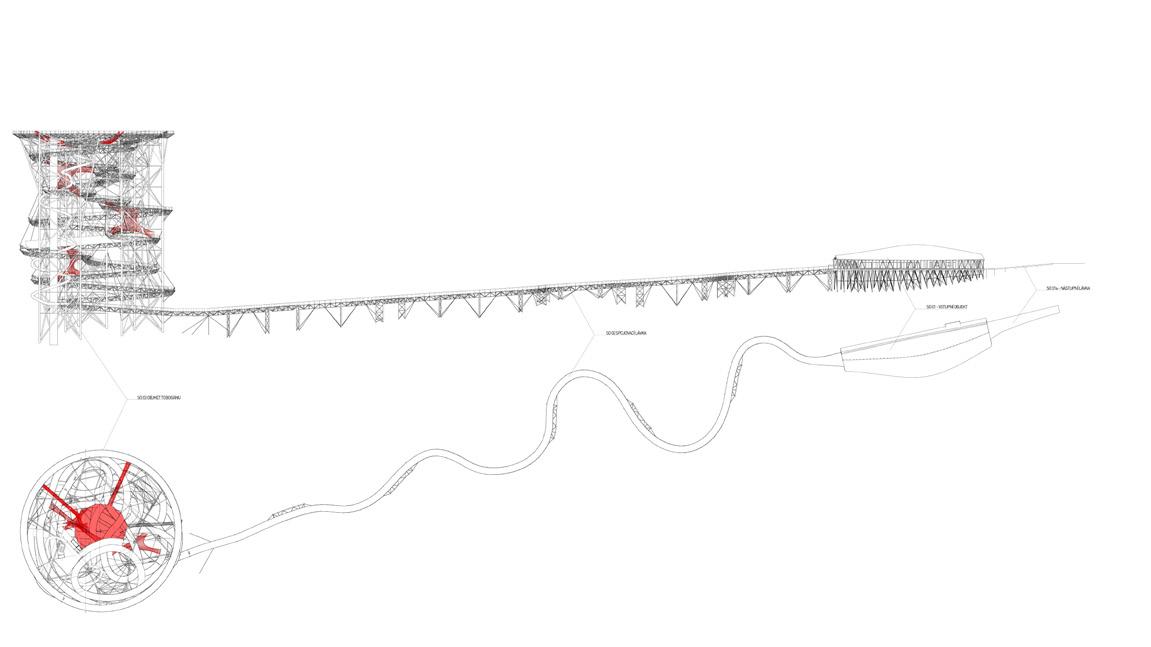





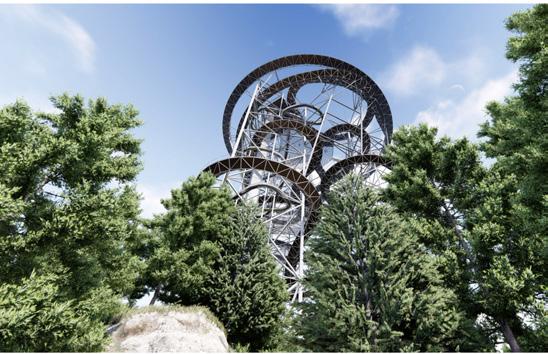


04/ selected projects
Fránek Architects
skywalk Swieradow
FRANEK ARCHITECTS
realization 2020/ pl

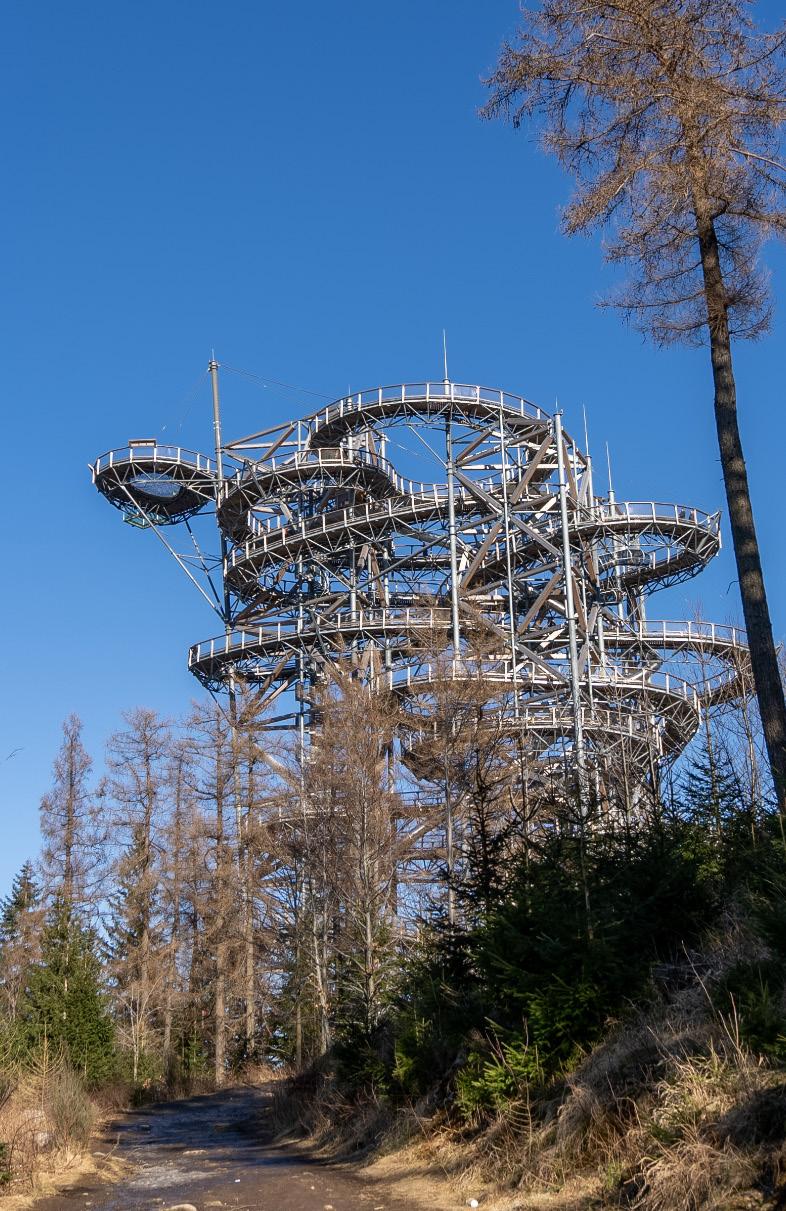
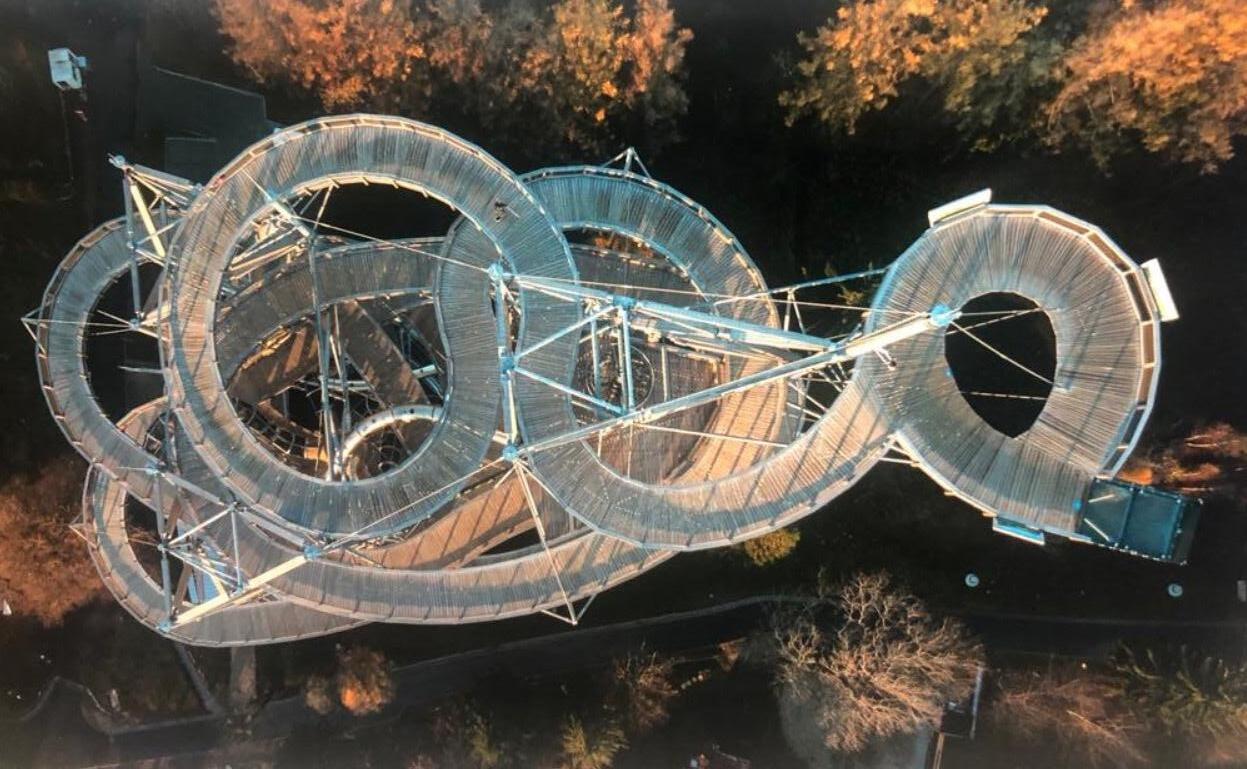

Project studio feat FaraOn&studioURAN
invited competition 2020/ 1st.place
residential complexStepanov
The site, brimming with potential, embodies the resilience and richness of the Valassian region. Its relaxed structure serves as a nexus between nature and residential living
SUNLIGHT DESCRIPTION
It’s worth mentioning that artificial intelligence (AI) was utilized in the design of the urban structure, which, while not entirely essential, is highly intriguing. It has been demonstrated that by establishing simple rules and criteria, successful outcomes can be achieved.
The primary criteria included the maximum allowable total area and the maximum solar gains, ensuring optimal sunlight exposure on the facades while minimizing shading from neighboring structures.
VIEWS
Another key parameter in the computational model was the consideration of landscape views and the unobstructed horizon. Maximum vistas were prioritized, with the sum of all views measured, and solutions were sought to minimize obstruction. These primary parameters were constrained by the cadastral boundary. With the assistance of AI, thousands of iterations were generated and evaluated. The program then identified the most optimal solution, which was further developed through architectural refinement.
SPATIAL SOLUTION
The design consists of four residential buildings, gradually varying in volume and height. This layout enables permeability across the site and provides breathtaking views from the apartments overlooking the beautiful valley and its surroundings. The buildings define the public space of the street to which they adhere, creating an internal semi-public area that functions as a shared park with recreational water features. The richness and differentiation of these spaces allow for a variety of activities and encourage participatory use by residents.
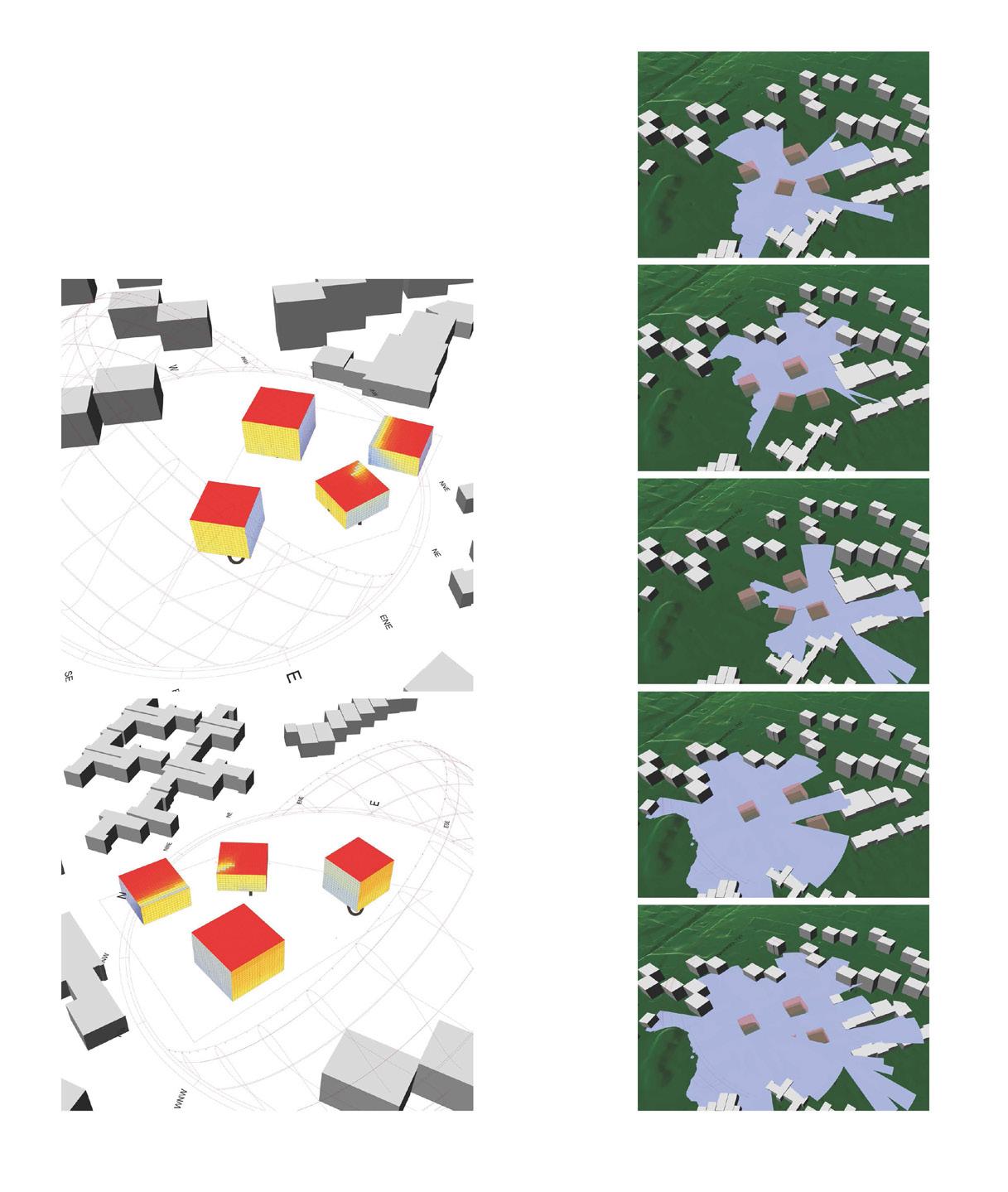
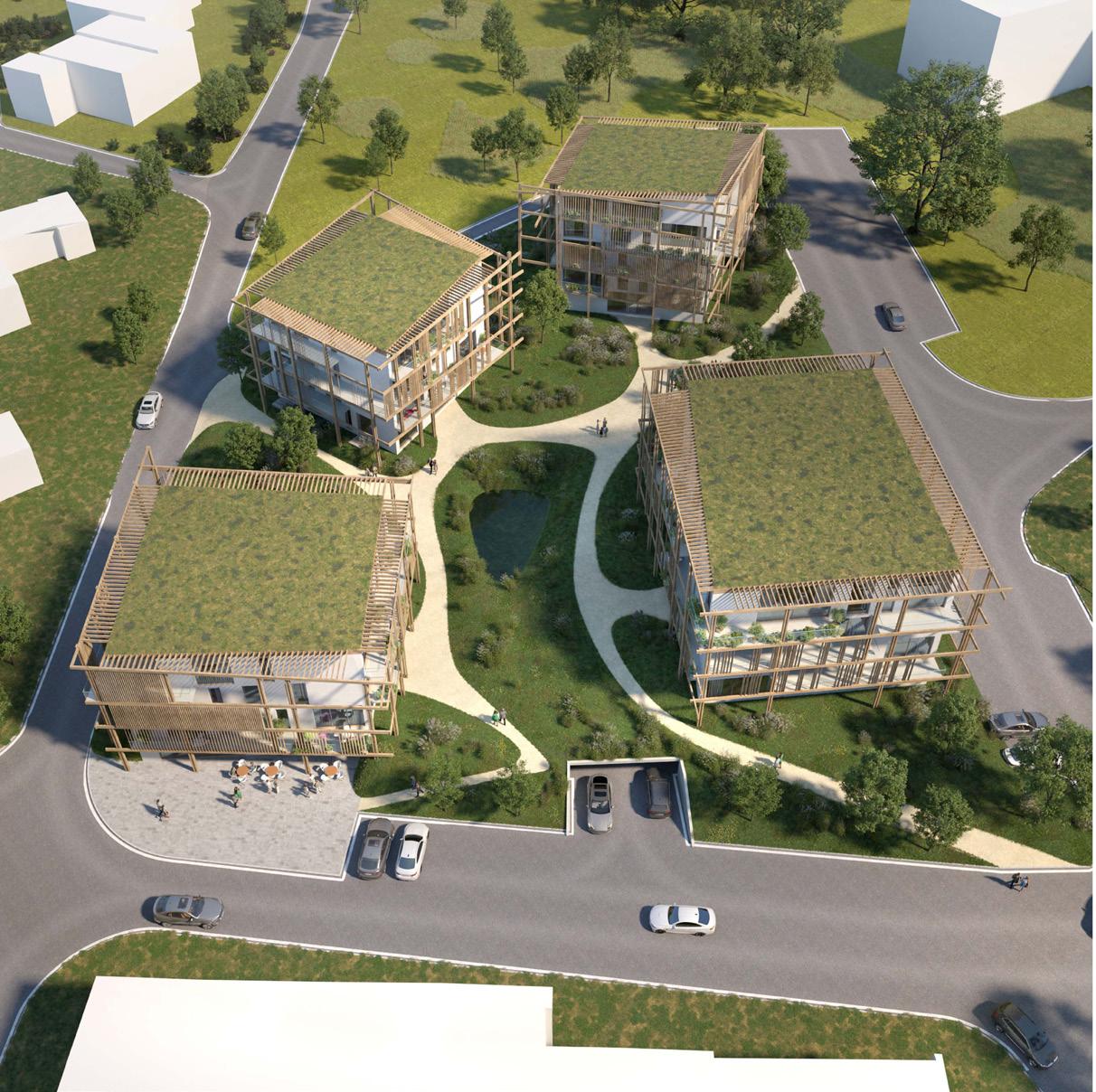
LINK TO VALAŠSKO
The houses are traditional brick constructions with a character of a shell and a load-bearing stiffening core. The ceilings are reinforced concrete slabs, as are the balcony brackets. The balconies are supported by a wooden structure, complemented by a secondary layer of wooden slats that provide shading and protection from direct sunlight. The incorporation of wooden elements pays homage to the carpentry joints of traditional construction, creating a new linguistic syllabus.
Although each building shares the same genotype, it exhibits its own phenotype, meaning that each of the four structures has its own form and significance. Thanks to this architectural language, the ensemble can be viewed as a whole, but also as individual components that come together to form a sentence and meaning. This narrative is derived from traditional construction techniques and can be successfully transferred to contemporary architecture today.
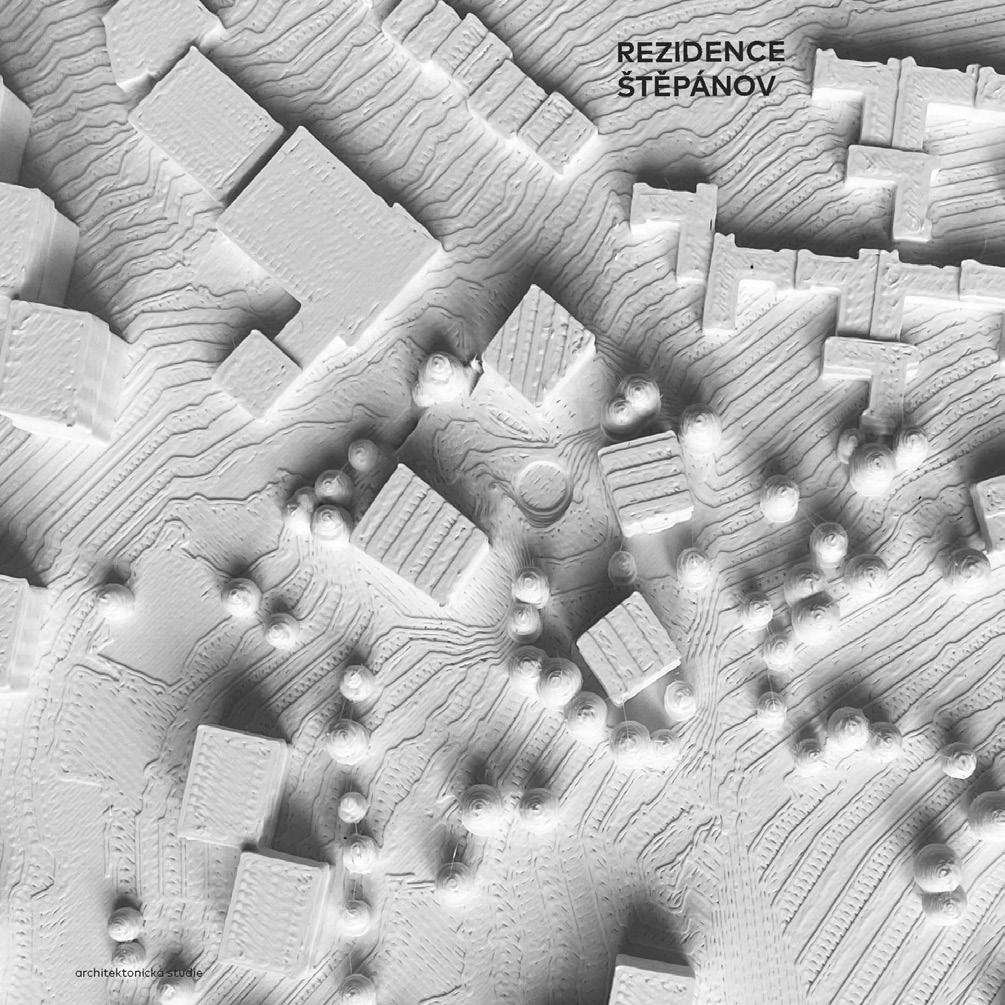
Authors:
Ing. arch. David Kotek
Ing. et Ing. arch. Rudolf Müller
MArch Ing. arch. Ing. Jiří Uran Vítek
PROJECT STUDIO EUCZ, Ltd. featuring FaraON & studioUran

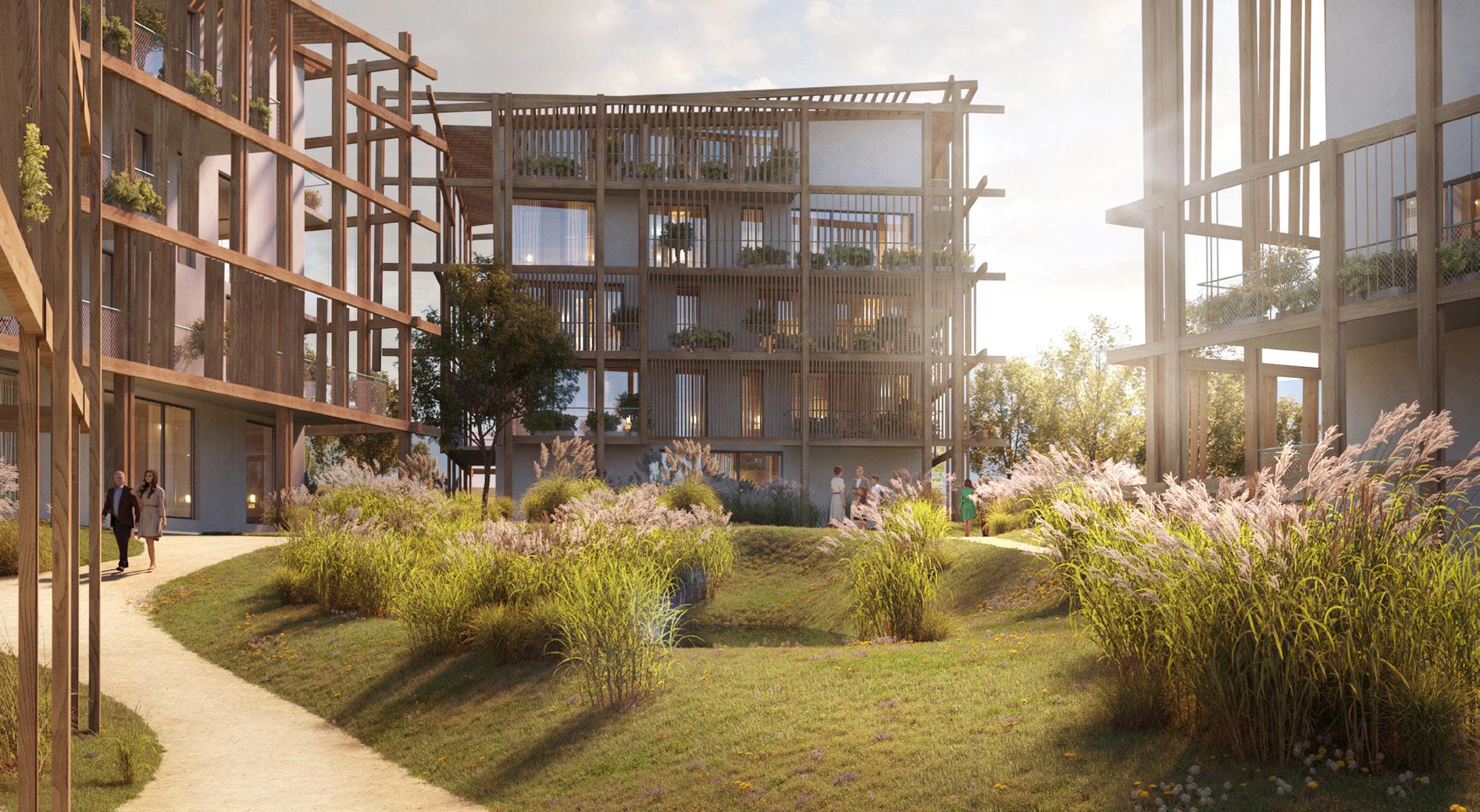

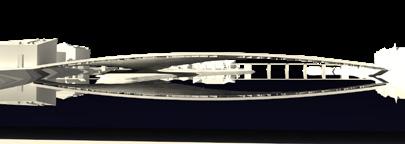


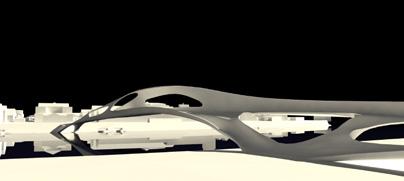



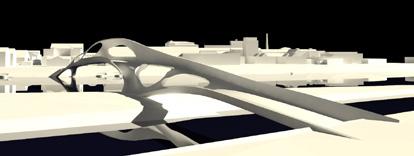

ThedesignofthesecondtowerofthePilsenChurchof St. Bartholomew is based on the geometry of the existing tower. The analysis of geometry shows the basic positiononthesquare,whichisoffsetintheledge.The base of the roof is built on an octagon and the top of the tower is pushed to the point. The height of the individualgeometricformationsisplacedinaccordance with the existing template. Between the layout control objects / diagrams /, we generate a new control surfacetomaintainthelongitudinalandtransverseviews. The basic reasoning assumes the tower as a skeleton structure derived from a gothic model without a material filling. This creates a discussion between the two towers. Functionally, there is no need to load the assignment. Lightweight steel frame construction is applied by components to the generated control surface. The component is based on a square and rotated hexagon with rounded edges. The number of components is optimized in the U-axis to 3 and in the V-axis
Návrh druhé věže Plzeňského kostelu svatého Bartoloměje vychází z geometrie stávající věže. Z analýzi geometrie vyplývá základní postavení na čtverci, které se v římse offsetuje ven. Základna střechy je postavena na osmiúhelníku a vrchol věže aprosimujeme na bod. Výškově jsou jednotlivé geometrické útvary umístěny shodne se stávající předlohou. Mezi rozvrženými kontrolními objekty / diagramy / generujeme novou řídící plochu tak, aby byl zachován průhled v podélném i příčném směru. základní úvaha předpokládá věž jako skeletovou konstrukci odvozenou z gotizující předlohy bez hmotné výplně. Tím vzniká diskuse mezi oběmi věžemi. Funkčně není třeba zatěžovat zadání. Lehká skeletová konstrukce z ocelových prvků je aplikována pomocí komponentů na generovanou řídící plochu. komponent je založený na čtverciapootočenémšestiúhelníkusezaoblenými hranami. Počet komponentů je optimalizován v



ThedesignofthesecondtowerofthePilsenChurchof St. Bartholomew is based on the geometry of the existing tower. The analysis of geometry shows the basic positiononthesquare,whichisoffsetintheledge.The base of the roof is built on an octagon and the top of the tower is pushed to the point. The height of the individualgeometricformationsisplacedinaccordance with the existing template. Between the layout control objects / diagrams /, we generate a new control surfacetomaintainthelongitudinalandtransverseviews. The basic reasoning assumes the tower as a skeleton structure derived from a gothic model without a material filling. This creates a discussion between the two towers. Functionally, there is no need to load the assignment. Lightweight steel frame construction is applied by components to the generated control surface. The component is based on a square and rotated hexagon with rounded edges. The number of components is optimized in the U-axis to 3 and in the V-axis to 4. The generated structure is precisely fitted to the existingpillarsoftheunfinishedtower.thestructureis clad with steel sheets with a weather-resistant finish and is gold-plated. The material refers to the installed statues in the square. It is not only by using a new de-
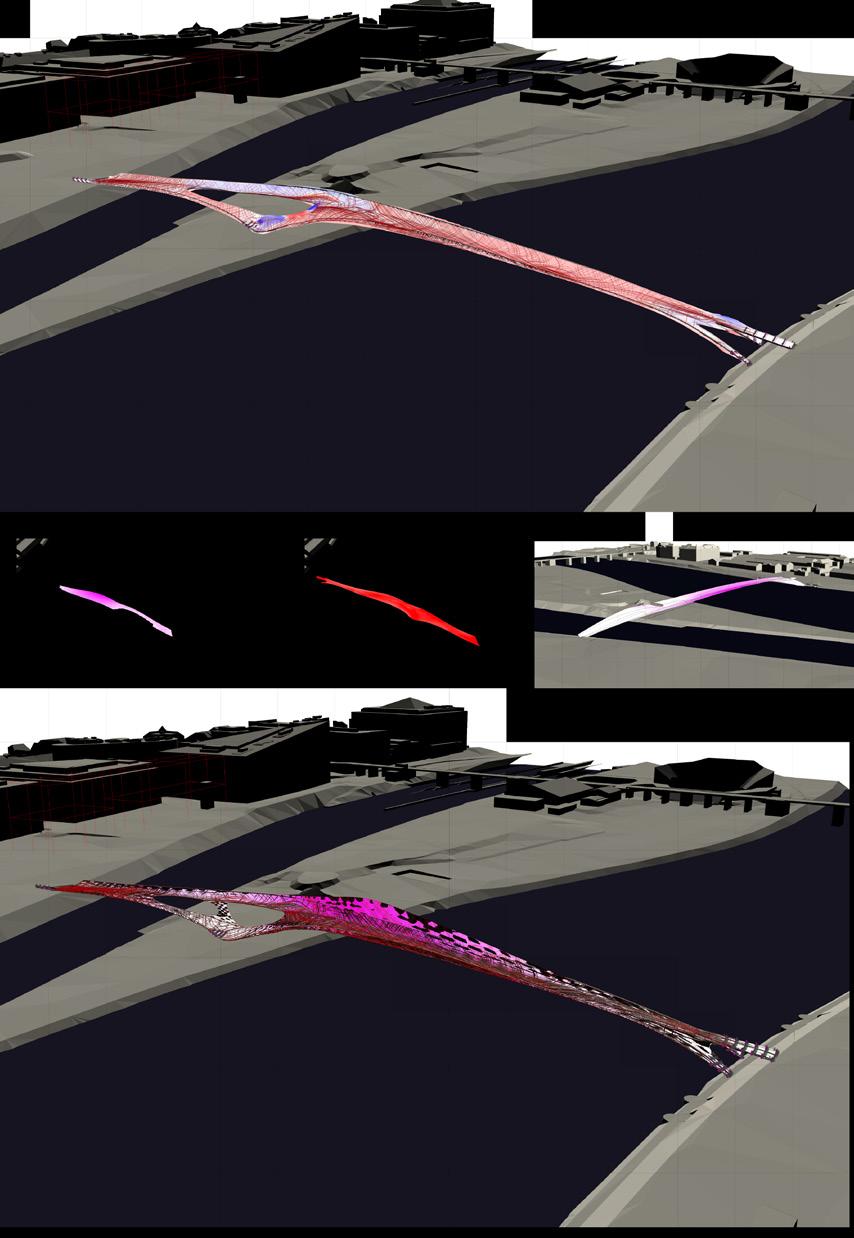
Návrh druhé věže Plzeňského kostelu svatého Bartoloměje vychází z geometrie stávající věže. Z analýzi geometrie vyplývá základní postavení na čtverci, které se v římse offsetuje ven. Základna střechy je postavena na osmiúhelníku a vrchol věže aprosimujeme na bod. Výškově jsou jednotlivé geometrické útvary umístěny shodne se stávající předlohou. Mezi rozvrženými kontrolními objekty / diagramy / generujeme novou řídící plochu tak, aby byl zachován průhled v podélném i příčném směru. základní úvaha předpokládá věž jako skeletovou konstrukci odvozenou z gotizující předlohy bez hmotné výplně. Tím vzniká diskuse mezi oběmi věžemi. Funkčně není třeba zatěžovat zadání. Lehká skeletová konstrukcezocelovýchprvkůjeaplikovánapomocíkomponentůnagenerovanou řídící plochu. komponent je založený na čtverci a pootočeném šestiúhelníku se zaoblenými hranami. Počet komponentů je optimalizován v ose U na 3 a v ose V
Holešovice Bridge Prague. CZ
03/ competitions
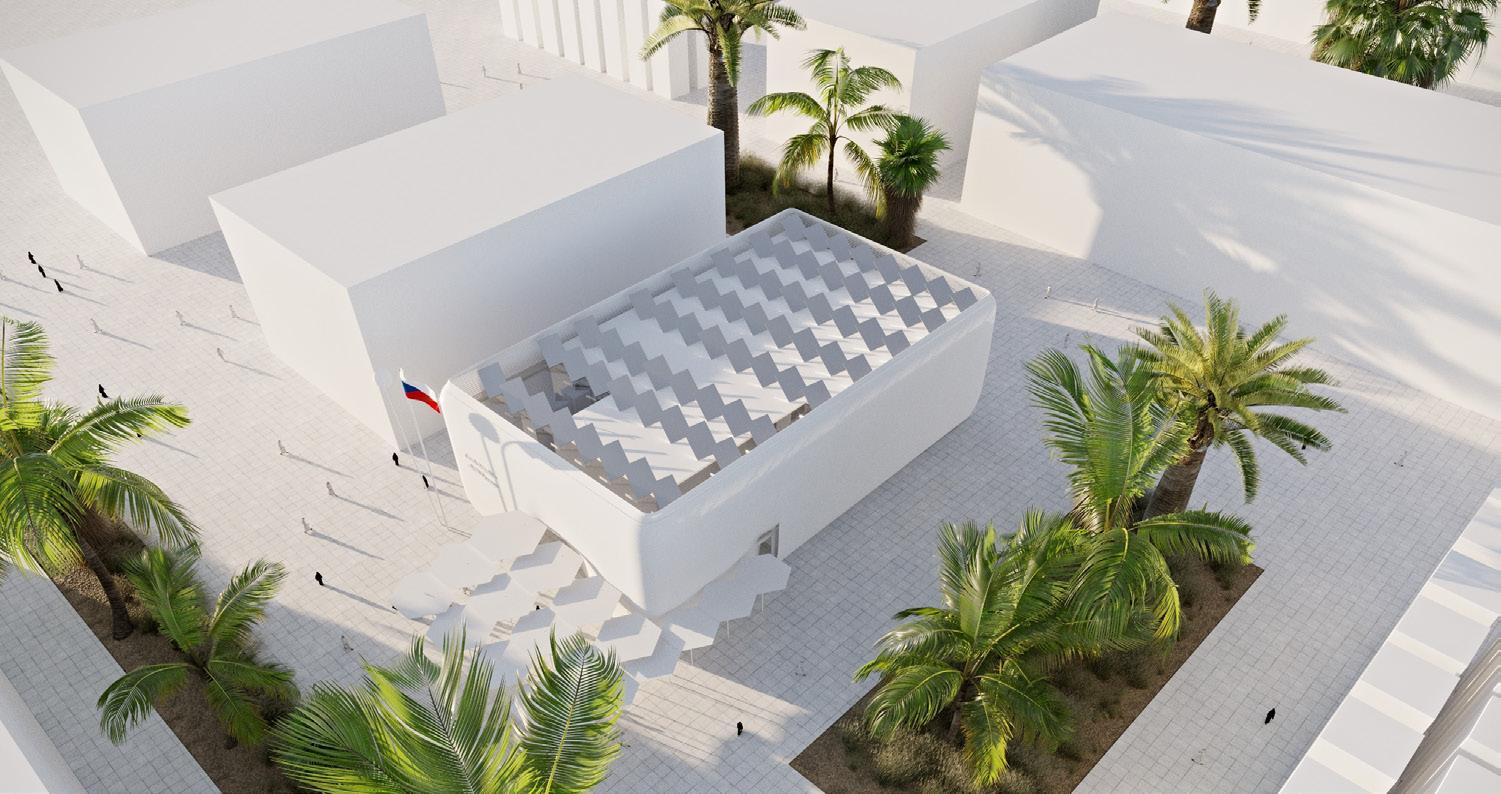
the perception of our pavilion should be to evoke the perception of life-giving drops of water, for example in the form of glass crystals, a glass rain of shimmering, sparkling world of ubiquitous sands from which to make, glass in the form of crystals displaying water drops. This motif would occur everywhere in the pavilion in various forms, whether art, artistic or technical - water produced locally, plant dew.
Each expo exhibition is a fair, where individual states want to draw attention to each other mostly by the most expressive and bizarre design of the pavilion, we choose the opposite way. That is why we created a quiet house with an economical form, using optical phenomena and interesting arrangement of space rather than superficial forms and expensive constructions to attract attention.
For the pavilion we have chosen a white color that is suitable under the Dubai Sun with its physical properties. It is symbolic for the Arab world.
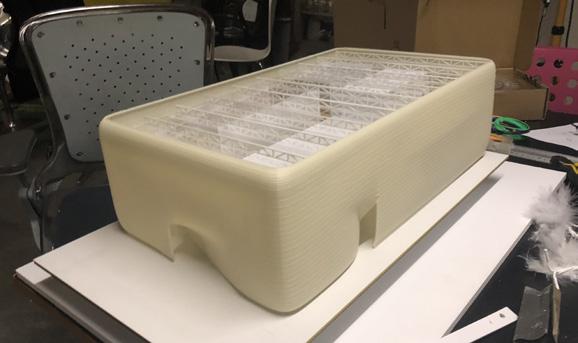
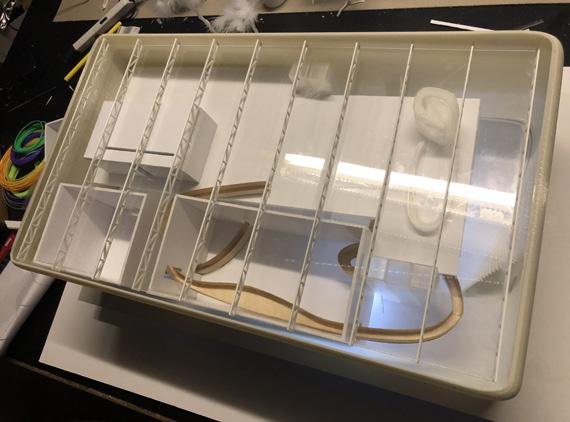
vjem z našeho pavilonu by měl být navození vjemu životodárných kapek vody třeba v podobě skleněných krystalů, skleněného deště třpytivého, jiskřivého světa všudypřítomných písků, ze kterého lze vyrobit, sklo v podobě například krystalkůzobrazujícíchkapkyvody.Tentomotivby se vyskytoval všude v pavilonu v různé podobě, ať už výtvarné, umělecké nebo technické - na místě vyráběná voda, rosení rostlin.
Každávýstavaexpojejarmark,kdejednotlivéstáty na sebe chtějí strhnout pozornost většinou co nejexpresivnějším a tvarově nejbizarnějším řešením pavilonu, my volíme cestu opačnou. Proto jsme vytvořili pavilon klidný s formou úspornou, využívajícíproupoutánípozornostispíšeoptickýchjevů a zajímavého uspořádání prostor než povrchních forem a nákladných konstrukcí.
Pro pavilon jsme zvolili bílou barvu, které je vhodná pod Dubajské slunce svými fyzikálními vlastnostmi. Pro arabský svět je i symbolická.

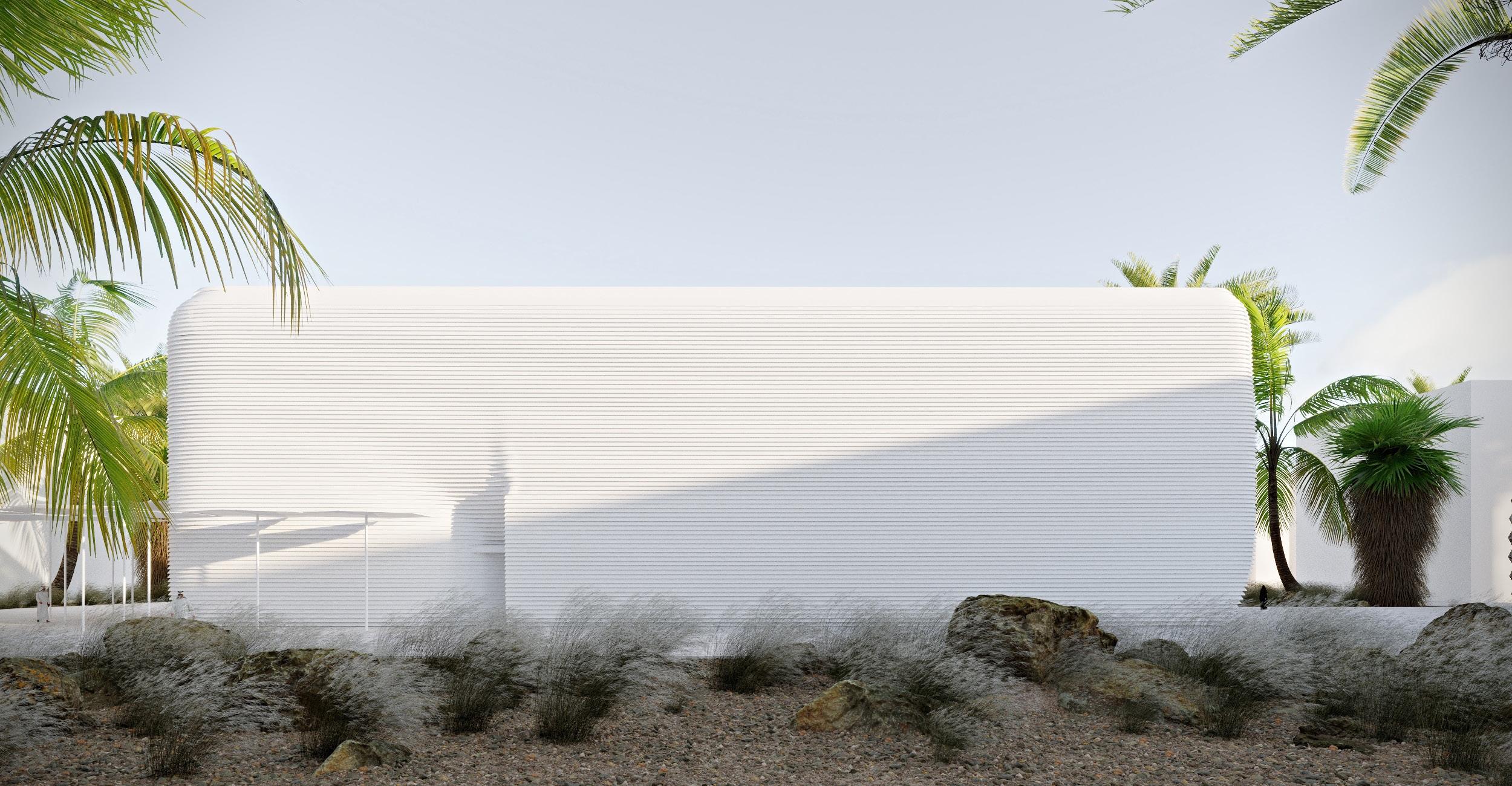
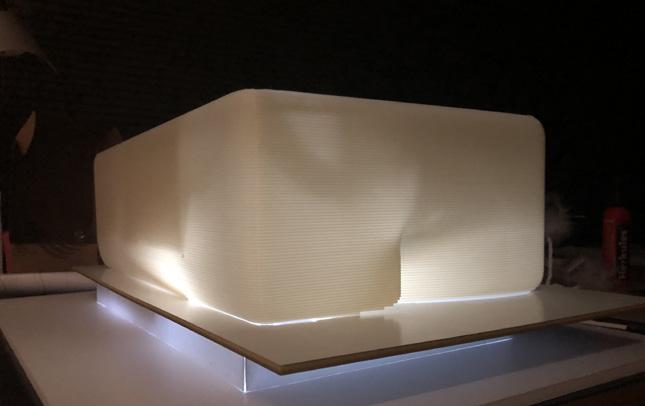
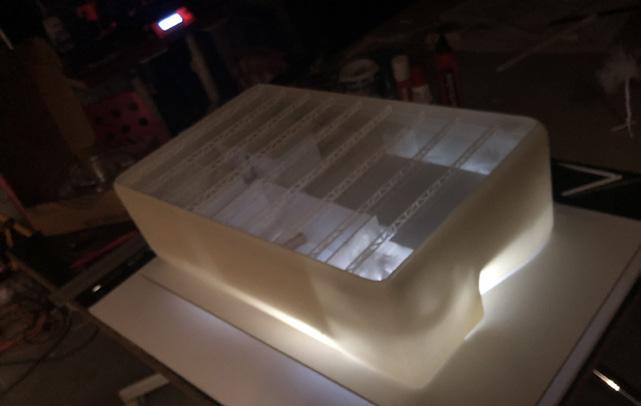
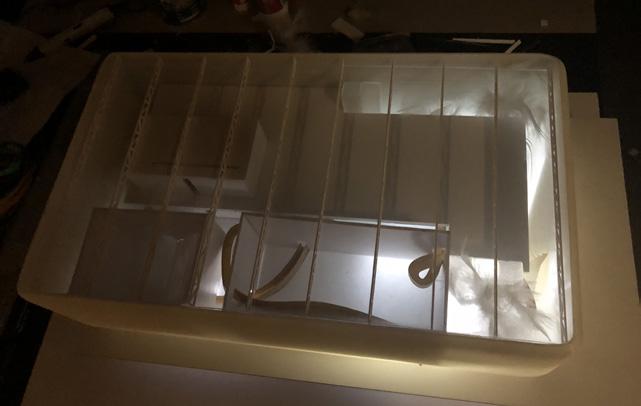
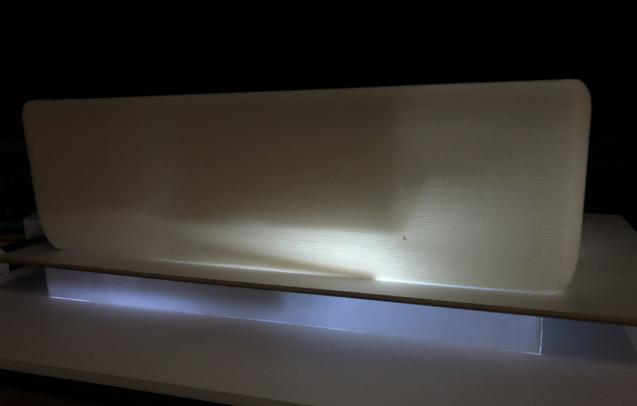
DUBAI Fránek Architects 03/ competitions SCHÉMATA ŘEŠENÍ KONSTRUKČNÍ SCHÉMA SCHÉMA SYSTÉMU S.A.W.E.R. PROVOZNÍ SCHÉMA Český pavilon EXPO 2020 Dubaj LESOVNA 5
EXPO 2020
Botanická zahrada Praha
Fránek Architects
1.st place/
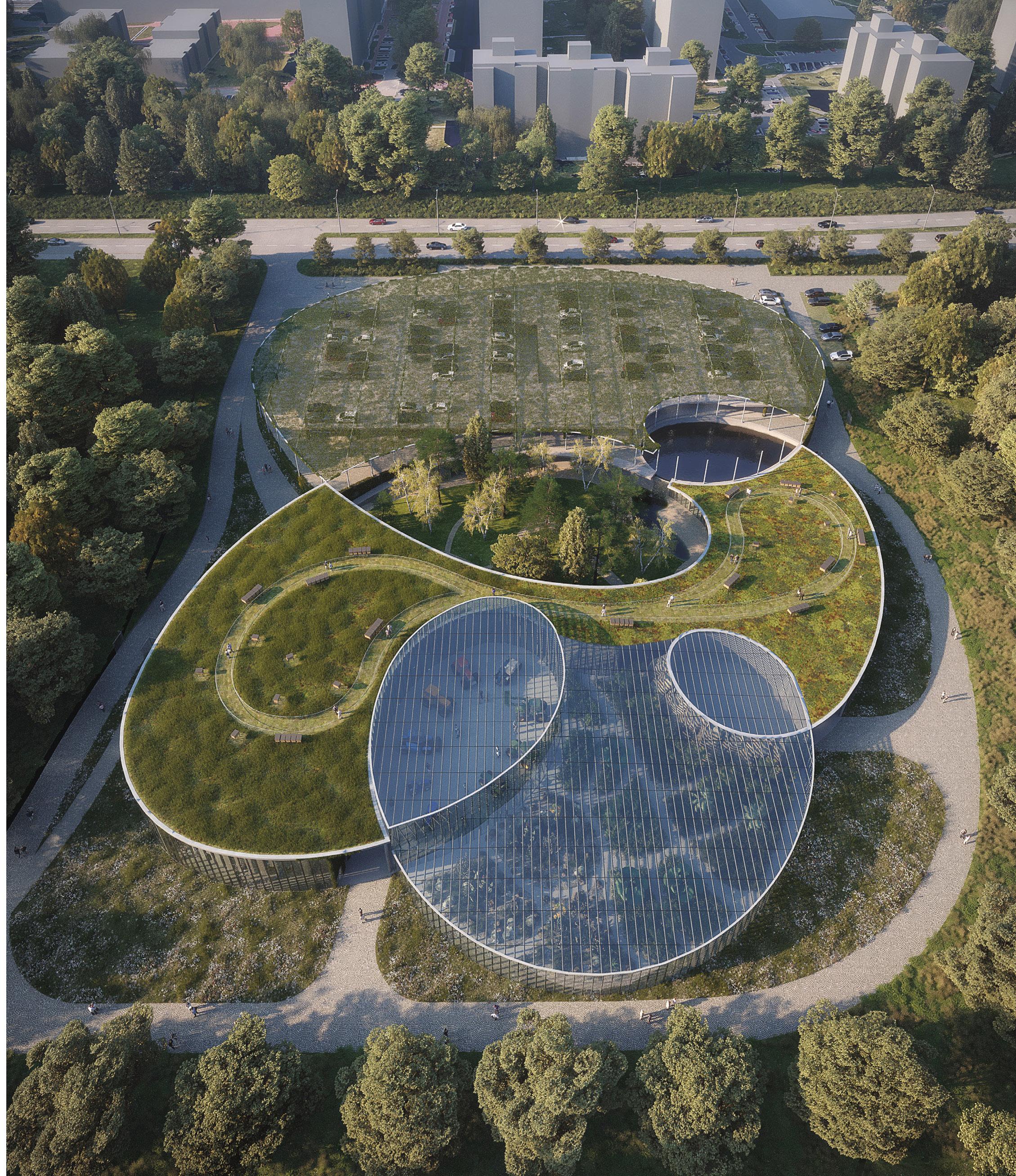
The building is designed for the city of Prague and is based on Prague inspiration. The design is simple, drawn in one line. This line should be memorable and should forever characterize the Botanical Garden. We have designed an experiential house that will encourage repeated visits. The building is designed as economical, both in its design and in its operation. Dominate in it and its surroundings will be mainly plants.

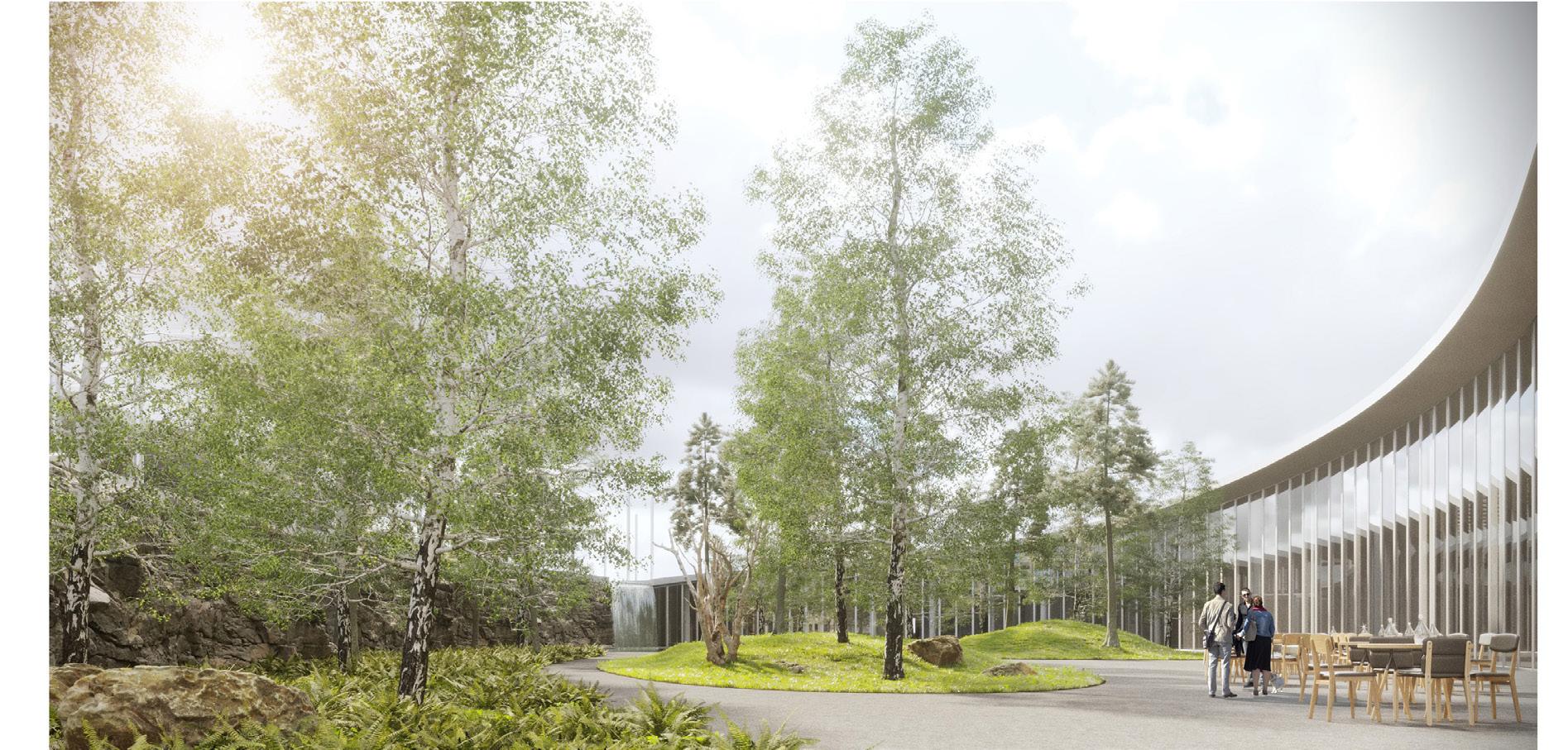


Objekt je navržen pro město Prahu a vychází z pražských inspirací. Návrh je jednoduchý, nakreslený jednou čarou. Tato čára by měla být zapamatovatelná a měla by navždy Botanickou zahradu charakterizovat. Navrhli jsme zážitkový dům,kterýbudevybízetkopakovanýmnávštěvám.
Objekt je řešen jako úsporný, jak svým provedením, tak i ve svém provozu. Dominovat v něm a jeho okolí budou hlavně rostliny.




03/ competitions
Projects by : Fránek architects +Jiri Vitek, renderings: Fránek Architects, Norbert Walter, model:Fa+JV, dr.Mo

make structural logic speak : Floating Shells
02/academy projects
Zaha Hadid Studio Vienna / studio project 2014
make structural logic speak :Floating Shells


In relation with the high-rise character of Manhattan, precisely outlined by the invisible curves described by the maximum points of the buildings surrounding our plot
Situated on the waterfront of East River, next to UN Headquarters, our project represents an urbanistic and architectural iconic articulation on the grid of Manhattan, a cluster point for the horizontal pedestrian movement and a vertical articulation in relation with buildings around, closing in frames, depending on different perspective points, other iconic building of New York City, such as UN and Chrysler Building.
Developed on a large plot, almost like a replica of the UN Headquarter’s site, it concentrates different programs such as: performance art center (grand theater, concert hall, multifunctional hall), completed by spaces for library, restaurant, cinema, galleries, activating on a horizontal circulation people attracted by the two plazas described by the building’s architectural design.


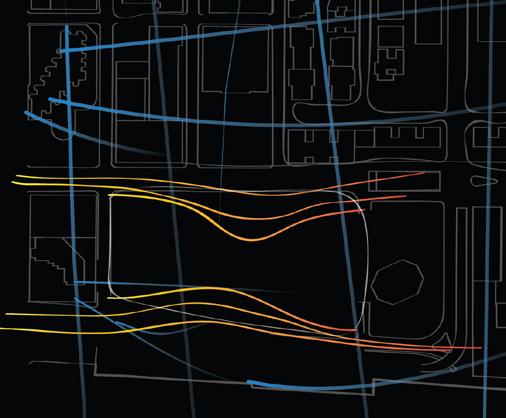
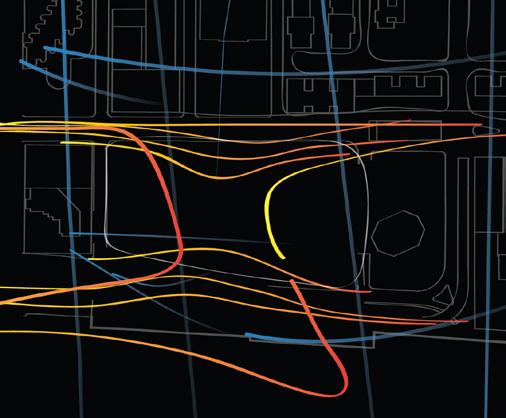

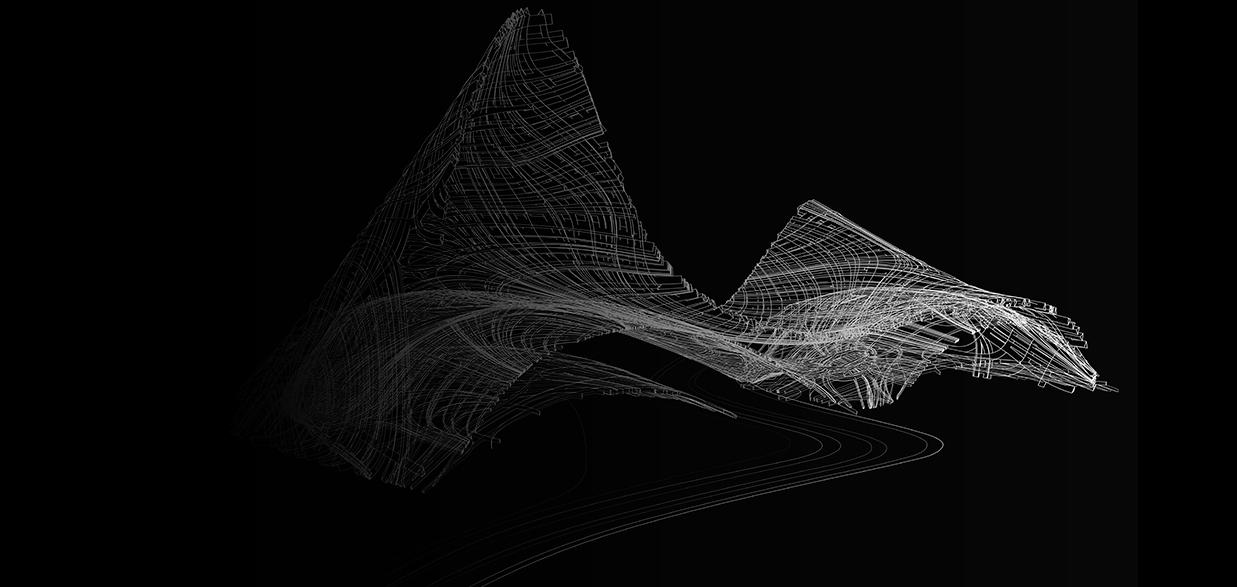
02/academy projects

alternated sets of regulations, which are based on two distinct approaches, both sets concerned with daylight at street level, this structure vertically grows by overlapping a macro-structure obtained by three floating shells. In this case, new programs are enlightened,such as offices and residential (hotel), which. in accordance with urbanistic analysis, their presence is truly argued.
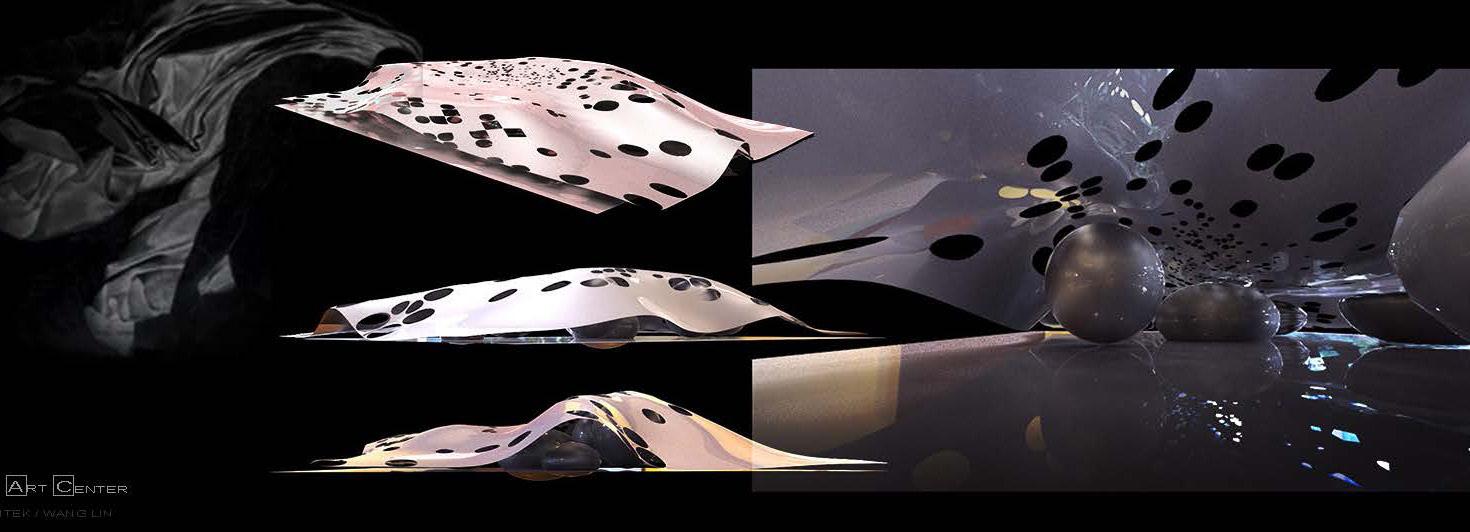
02/academy projects
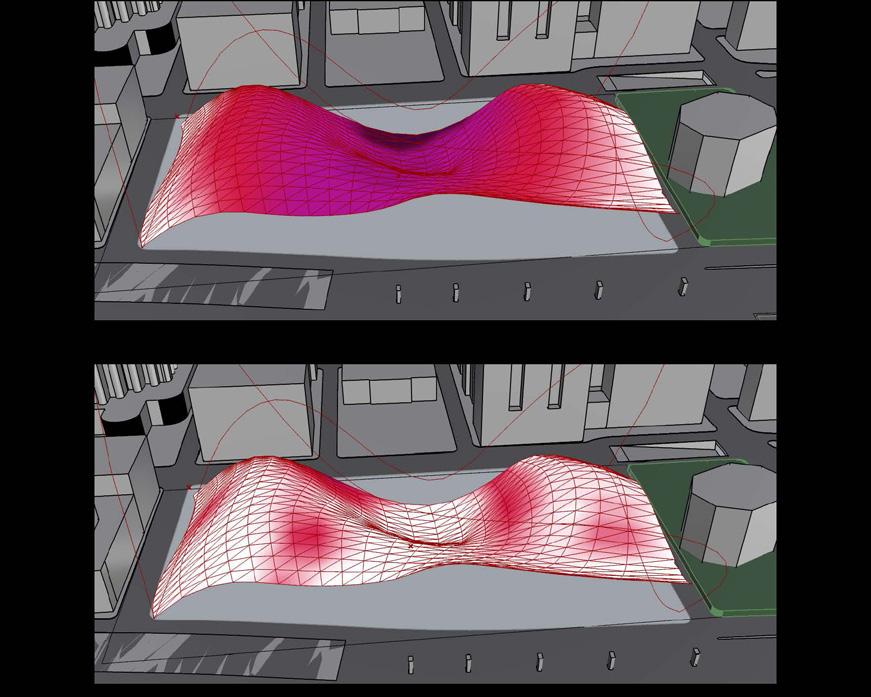

Structurally is based on shells structure optimization with natural force flow and deformation which is used for form finding. Deformation is analysed and recomputed for optimal material displacement and stress lines of shell are translated into the structure’s pattern. The mega structure of roof is hanged on the supporting system represented by vertical cores. The optimal shape represents tectonic articulation of architectural structure and her behaviour.”

02/academy projects
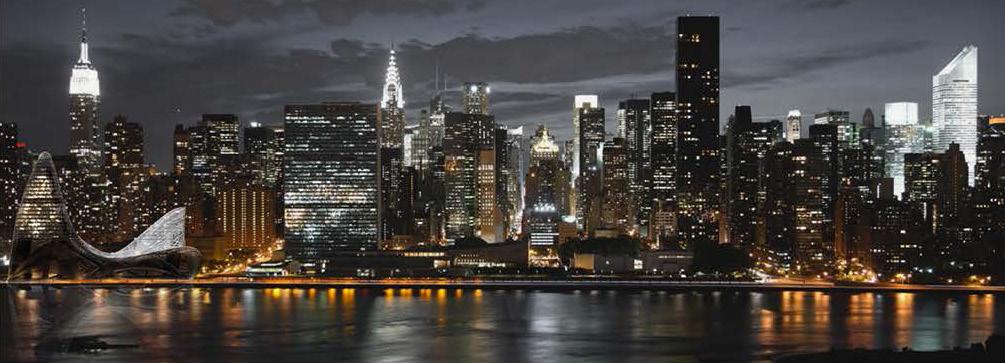


02/academy projects
Project by Ioana Binica, Jiri Vitek, Lin Wang
ubiquitos urbanism : ComplexCity zaha hadid studio vienna / studio project 2013
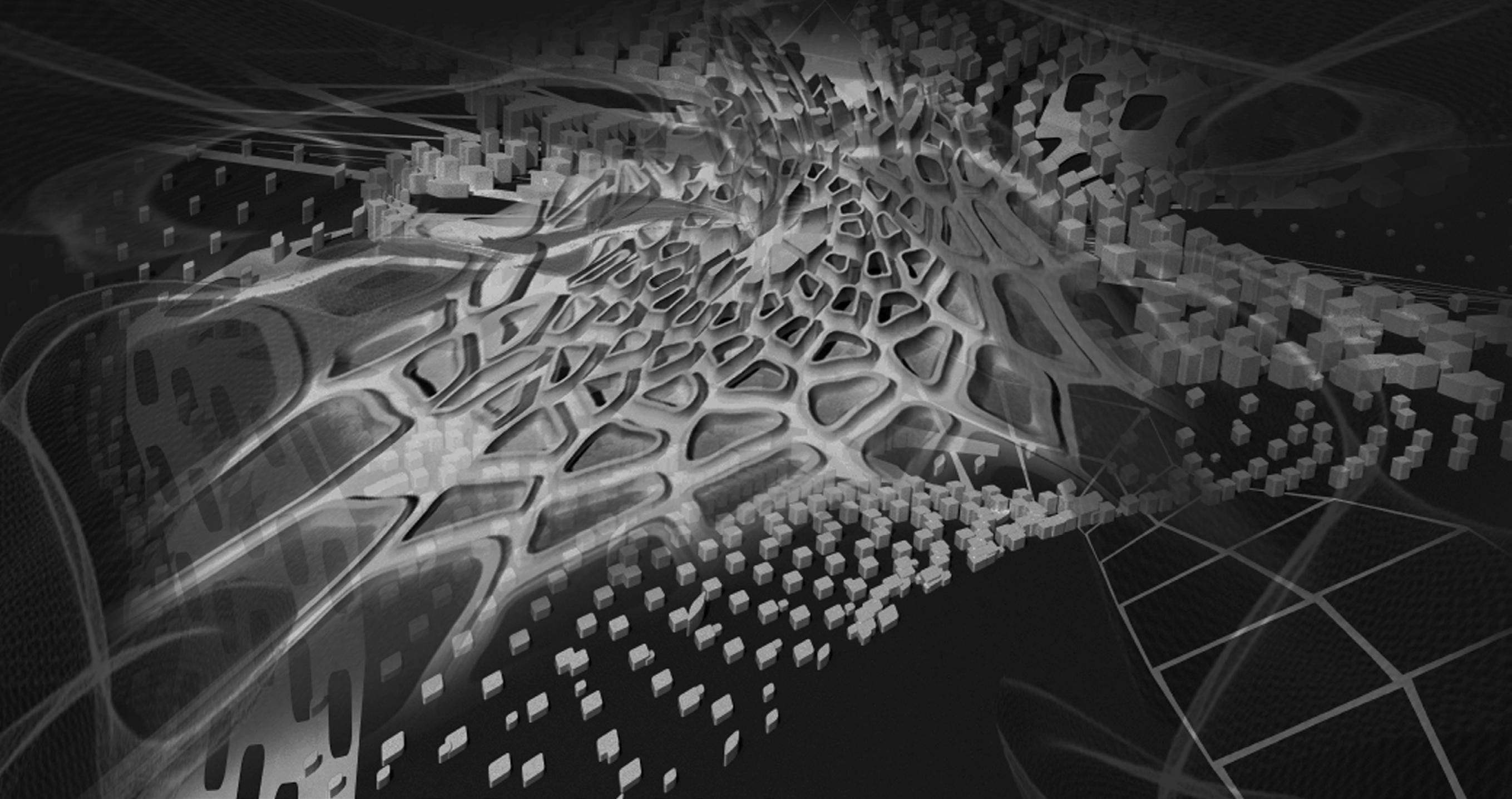
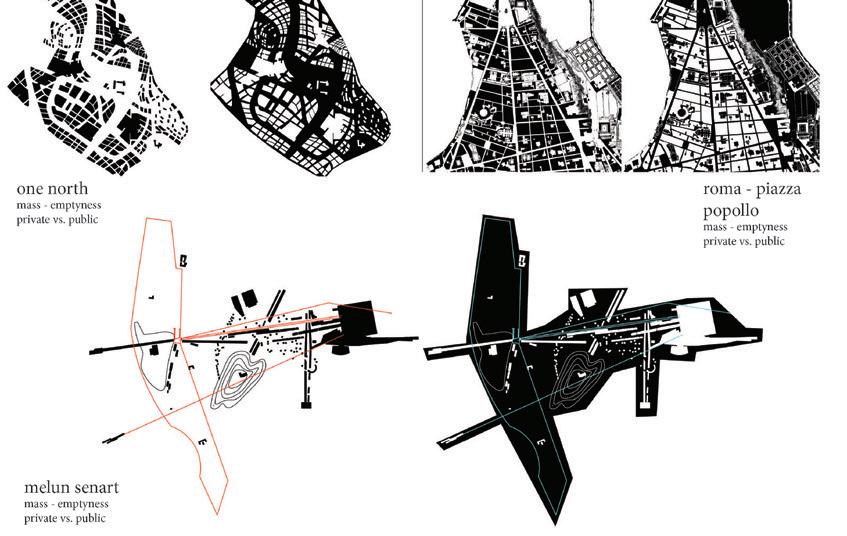
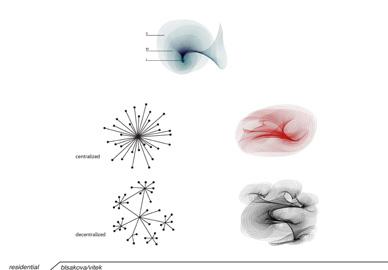
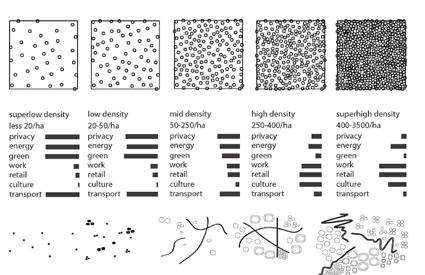
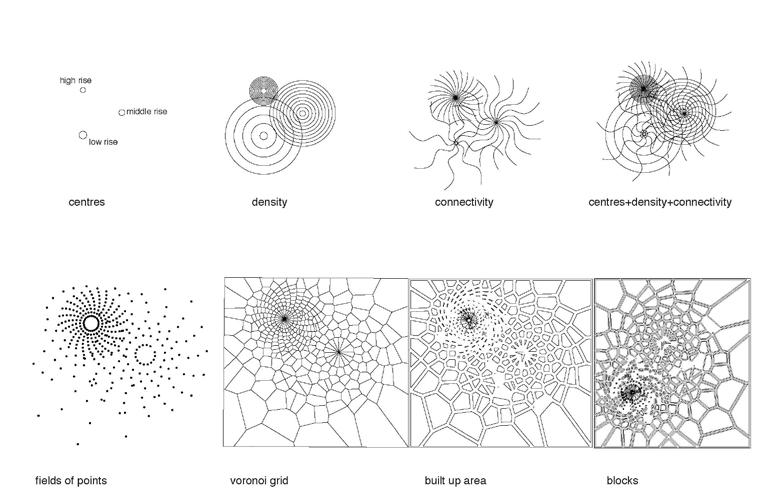
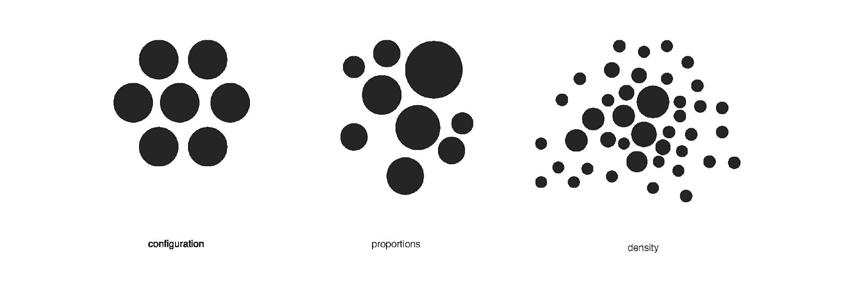
In the era of the interconnected digital landscape, we find ourselves immersed in the intricate web of the internet - a network that transcends boundaries and binds us together. Similarly, the city emerges as a complex urban structural network, comprising six distinct platforms seamlessly interwoven: infrastructure, residential, commercial, recreational, and cultural domains. Our endeavor has been to meticulously observe the dynamic interplay among these platforms - their reactions, interactions, and symbiotic relationships. We scrutinize their modes of communication, their impact on the surrounding environment, and their mutual influence.
In our pursuit, we seek novel methods of organizing these diverse systems within a unified territory. We aspire to redefine modes of communication, striving for optimal integration and synergy. Our aim is not merely to construct physical edifices, but to orchestrate a harmonious circulation of these systems within the urban fabric. They must coalesce into a singular entity, functioning as a cohesive complex.
Our vision extends beyond mere construction; we prioritize the creation of verdant spaces within the community, fostering harmony and well-being among its inhabitants. In essence, our approach transcends conventional urban planning, embracing a holistic perspective that integrates human needs with environmental sustainability.
the objective of this experimental study project was to create a conceptual layout for a site, to cover 3000x3000m, to develop a coherent masterplan, to build a new city. the global urban population increases, so let’s focus on making them better.
city is a medium (medium=the sourrounding enviroment, an intervening substance trough which signals can travel as a means for communication)
the modern city is a super-society where nothing exists by itselfs, without context and without fixed ties to the surroundings. that is why the individual themes overlap and merge in many different directions and layers.
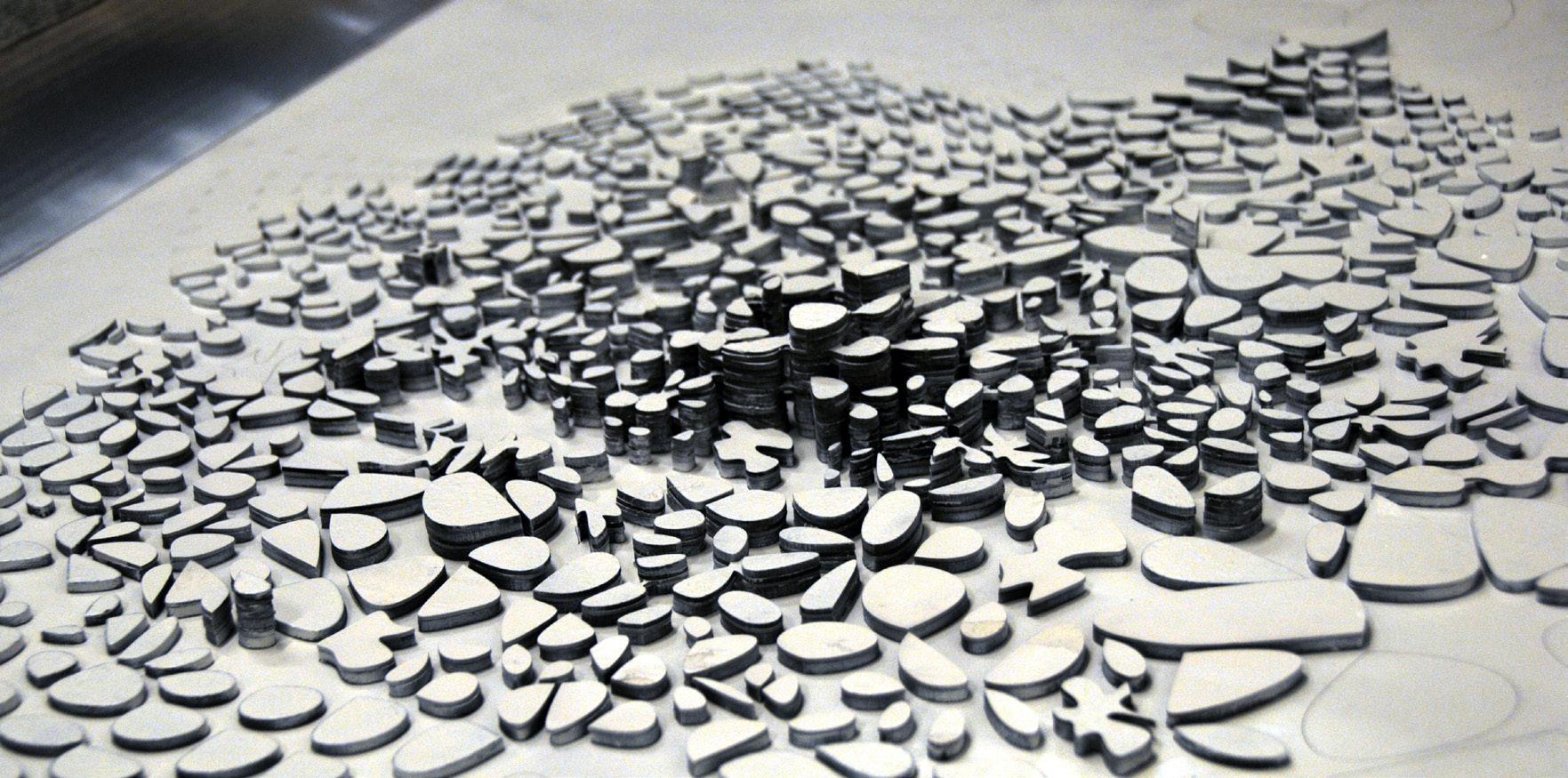 Project by Eva Blšáková, Jiří Vítek
Project by Eva Blšáková, Jiří Vítek
02/academy projects
AirportCity London : Catalytic Egression
zaha hadid studio vienna / studio project 2013

Our agenda entails the development of a framework in which the elements of a complexly layered, continuously differentiated, polycentric urban form are ordered.
This urban development stretches between London and the planned airport situated on the Thames Estuary.
Airports and their immediate environments are increasingly becoming 21st-century commercial anchors, taking on many features of retail destinations and business centers.
The development begins with the growth of the public transportation which connects the airport with the center of London.
Nodes of various transportation types (train, subway and bus) are distributed with regards to walkable distance and the speed of the particular type of transportation, which results in continuous hierarchical network.

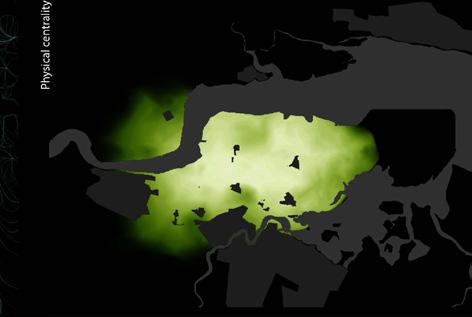
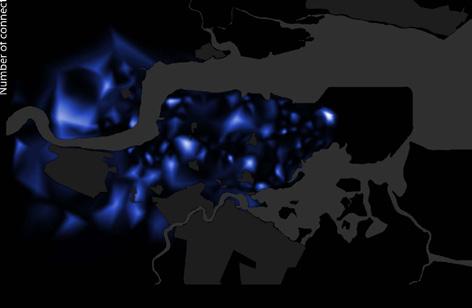


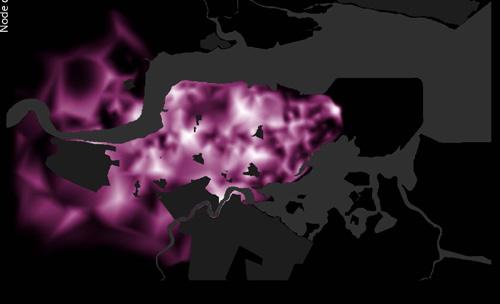
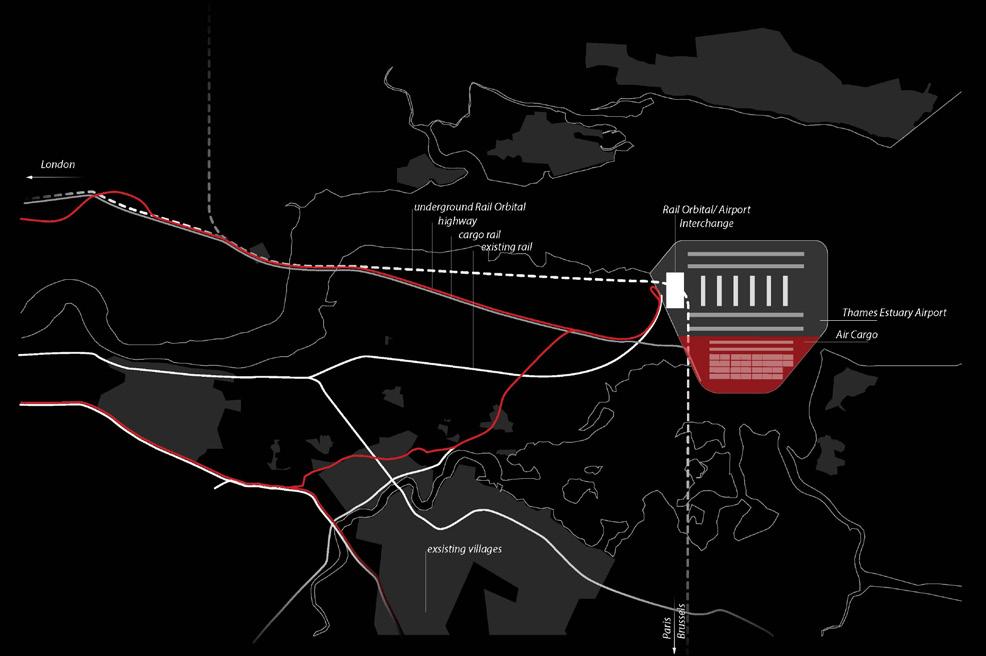
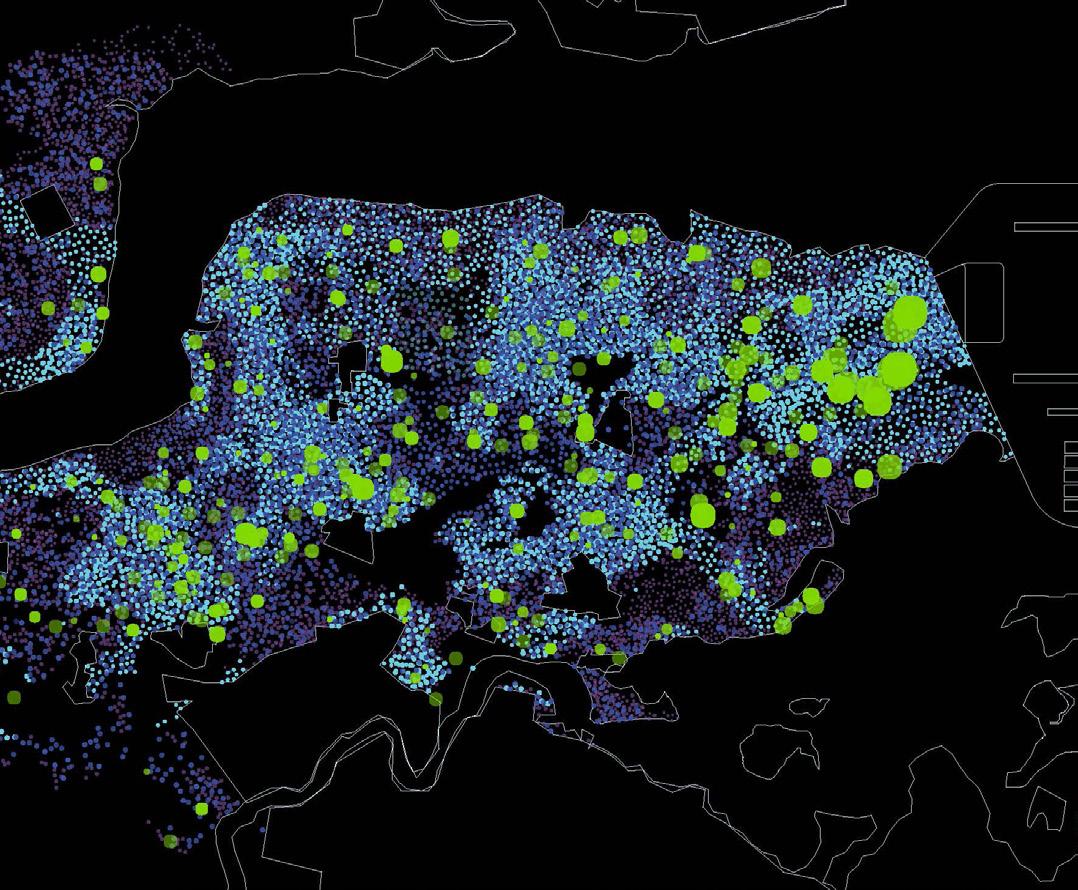


program (residential, office, recreation, culture, retail). Distribution rules are defined through the program types relation to each of the generated information maps, as well as to each other.
“Information maps” created through the analysis of the transportation network (travel time, integration, centrality, etc.) become the driver for the distribution of program (residential, office, recreation, culture, retail). Distribution rules are defined through the program types relation to each of the generated information maps, as well as to each other.
Additionally, other environmental influences were translated into information maps : A map of noise emitted by transportation infrastructure (mostly airplanes, largely impacting residential areas) as well as proximity to the water within the peninsula area.


02/academy projects
The created polycentric, heterogeneous urban fabric is not differentiated through streets or zoning, but rather by a system of fast movement , with quick access to public transportation, and slow movement, related to culture and leisure areas. These two path patterns are “carved” into the urban mass, becoming the organizational and navigational system of the city.
Retail expresses itself as negative volume attached to public circulation paths or hubs, while recreational program (sport fields, parks) relate to slow circulation paths, expanding them and creating porosity in the built mass. These zones of porosity become meeting points for the community and connect blocks with one another..
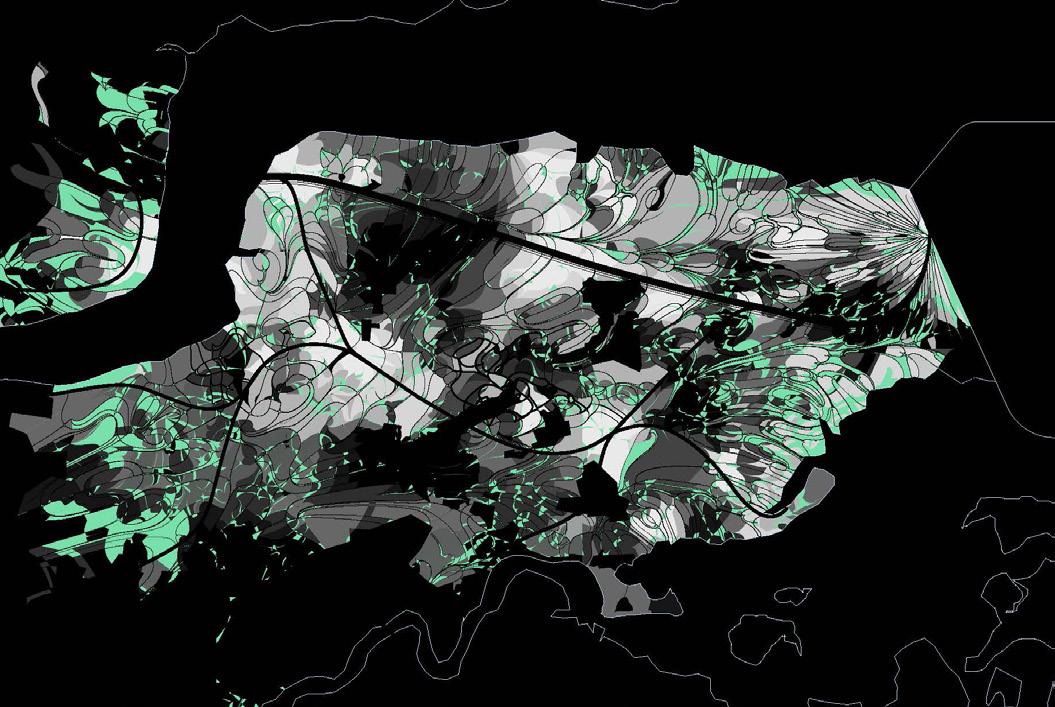
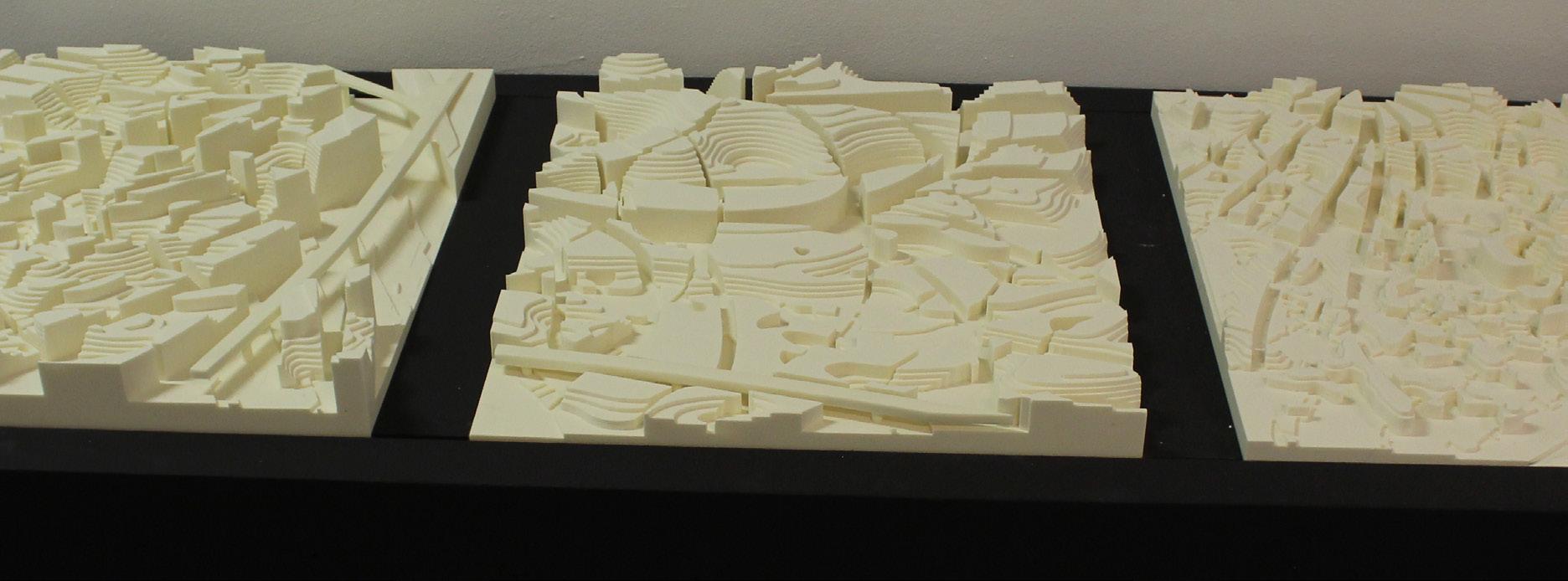




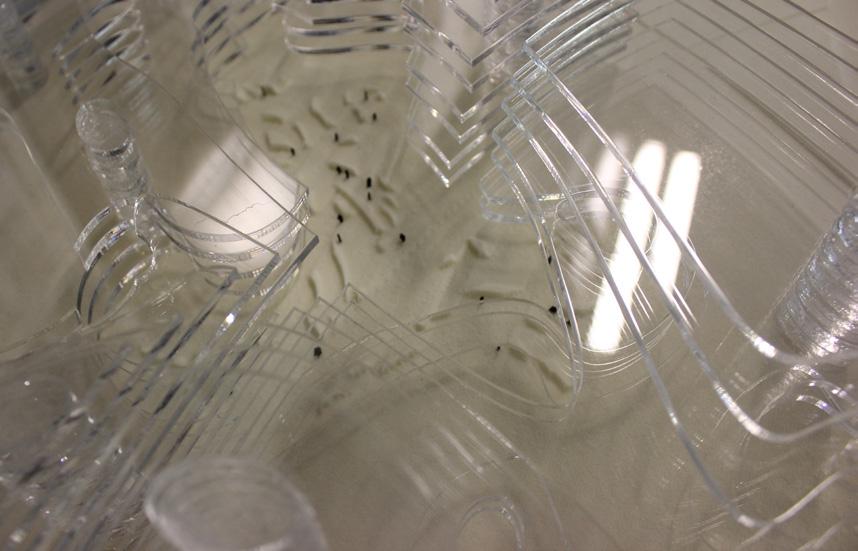

02/academy projects
Project by Aiste Dzikaraite, Alexandra Mnich, Phillipp Hornung, Horatiu Valcu, Lin Wang, Lu Jiaxing, Jiri Vitek, Erich Pratsch, Eva Blsakowa
design concept with stigmergy agents systems language of the Santini - architectural workshops

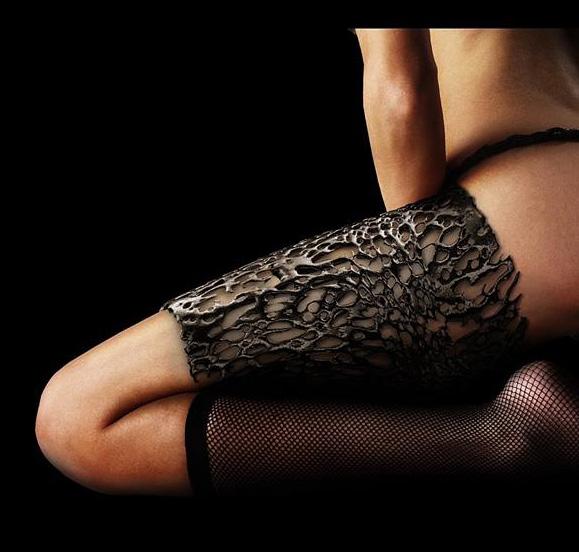
Language of the Santini / series of the architectural workshops
Founder and Lead Mentor 2016-2019
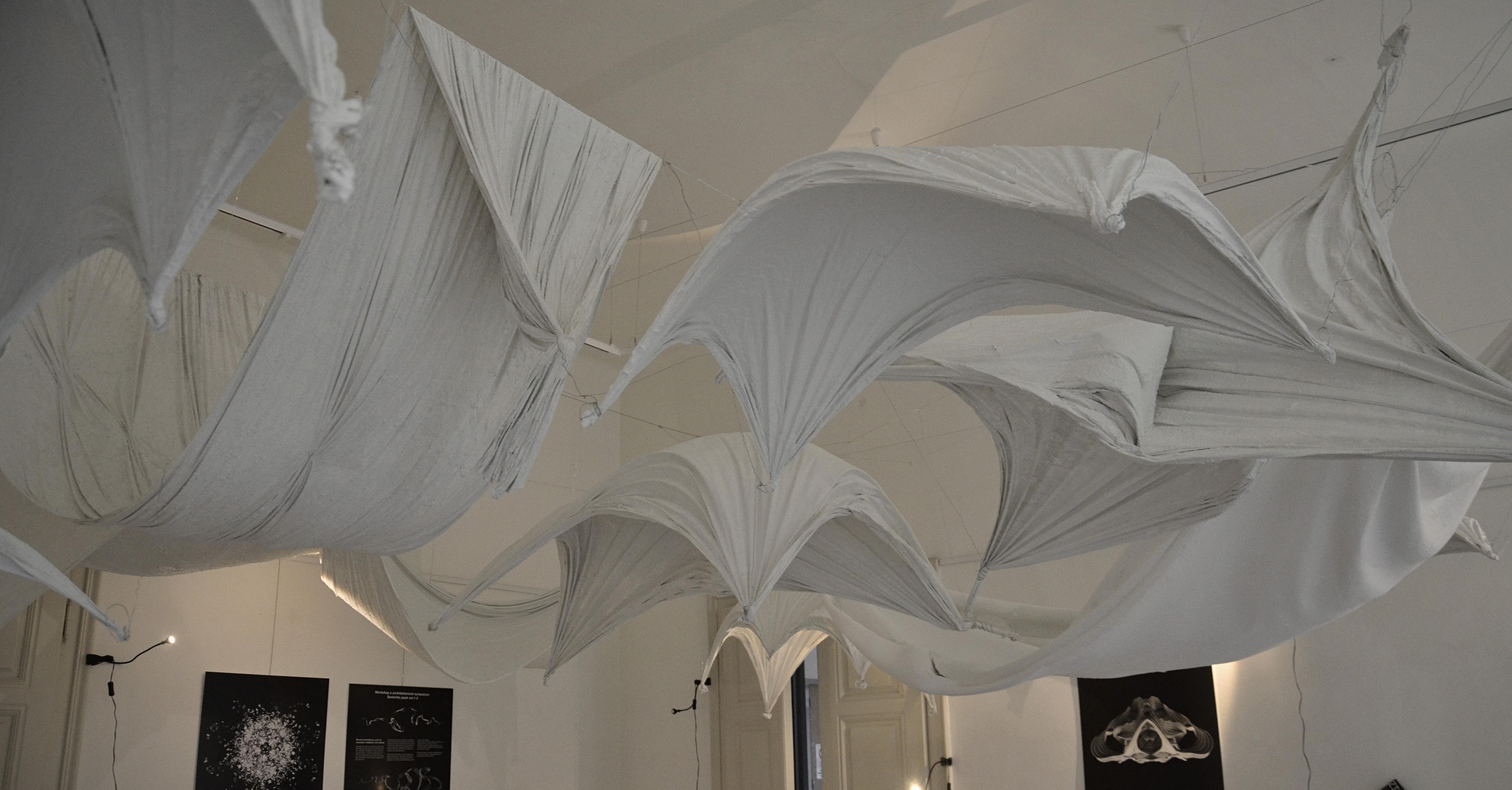
The installation of Santini’s language presented the results of 4 workshops held in 2016-2019. The basis of the workshop was to learn and explore Santini’s design principles, where the core three are the sculptural way of modeling architecture, working with light, and working with diagrams and stereotomies. Another aspect could be an emergent approach to work, where there is a basic diagram and model, but the architecture develops and changes over time over time.
As part of the installation of the workshop results (print, 3D print, VR), we experimented with shells with students of the FA Brno University of Technology. The fabric was soaked in a cement-white adhesive mixture and commissioned as a catenary. After solidification, the formed climber was turned upside down and various supports and spans were tested. Wrinkles of regions and more stressed parts were unique and beautiful.

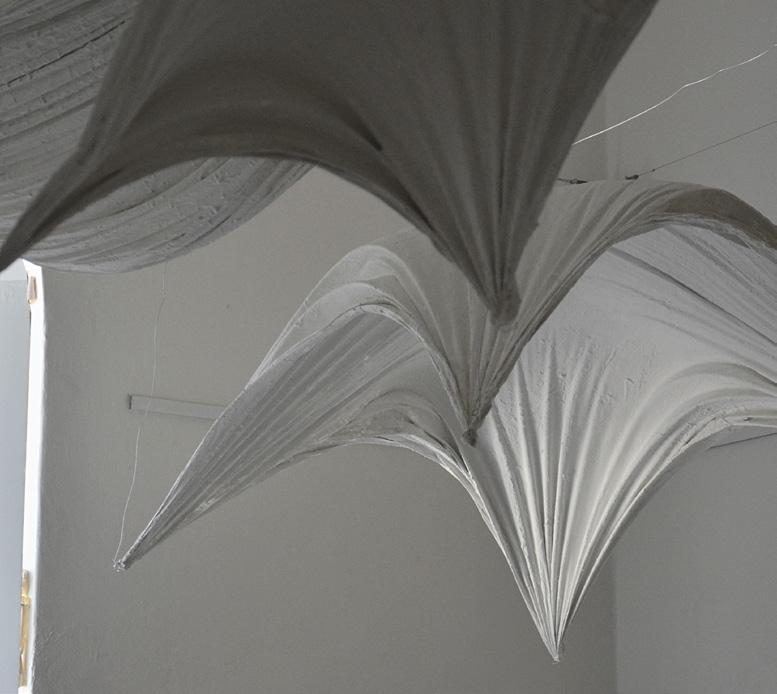

05/ realizations

Hydrogen Island
Rashid Studio Vienna / Diploma thesis 2019
Hani
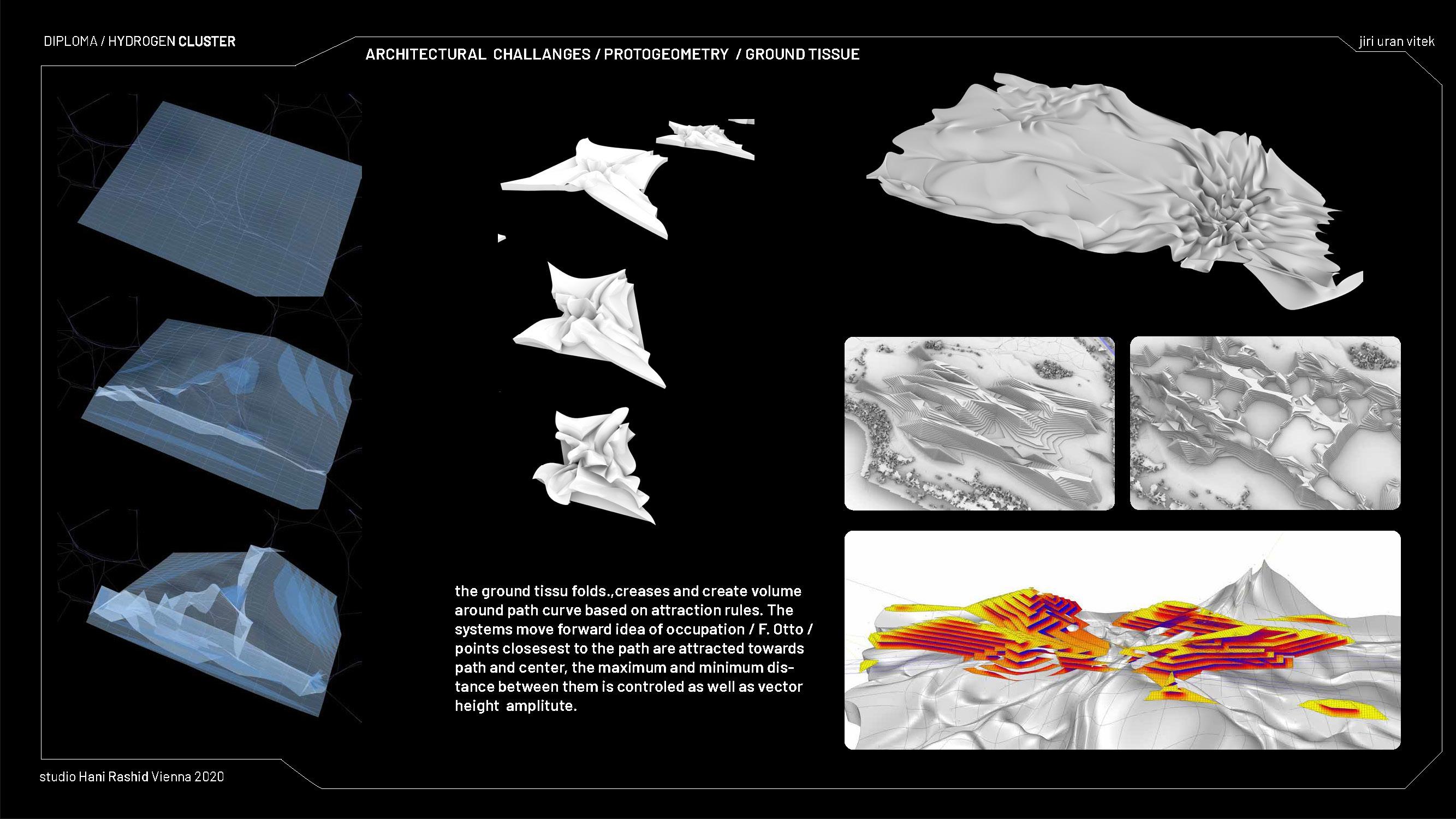
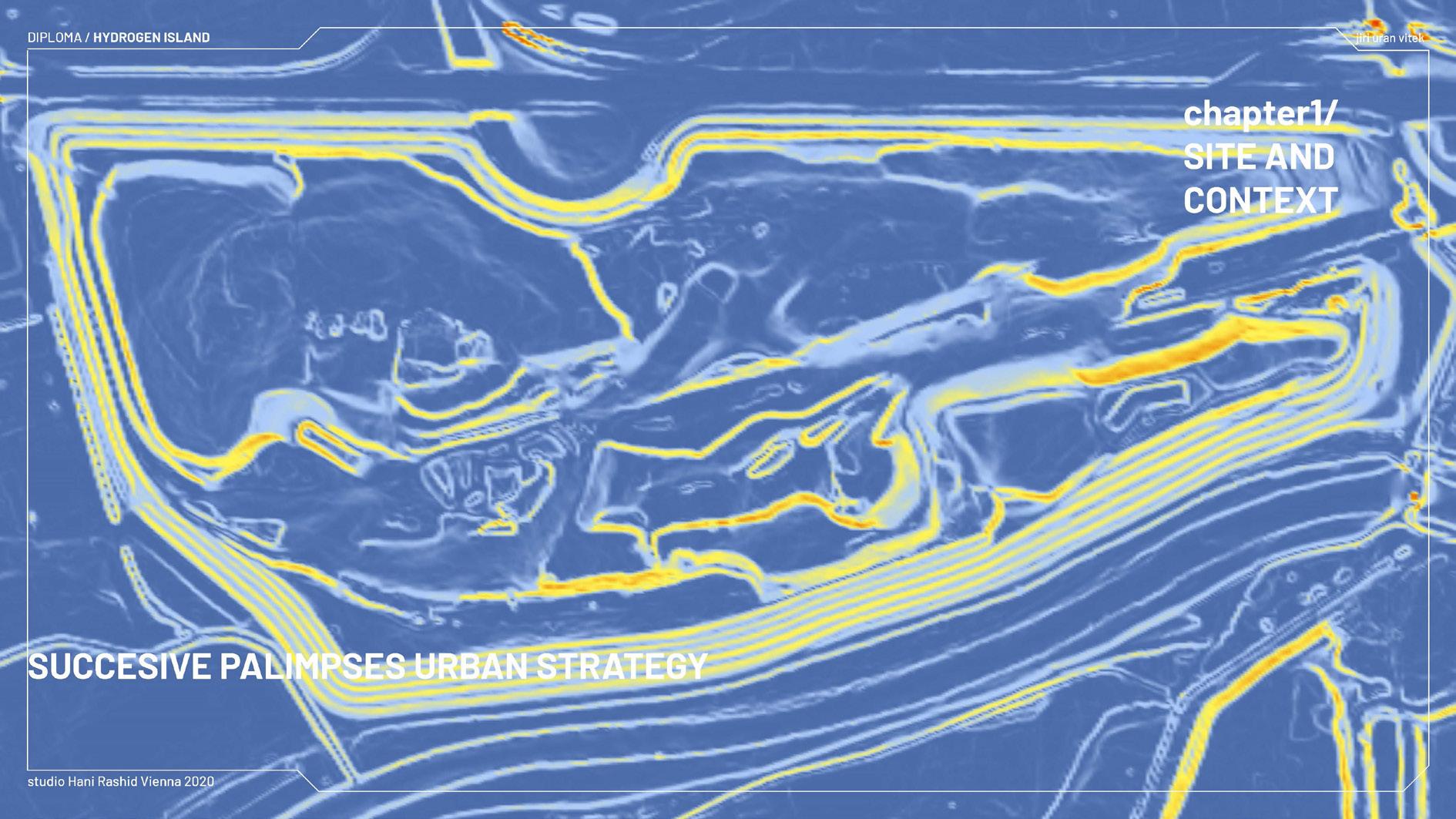
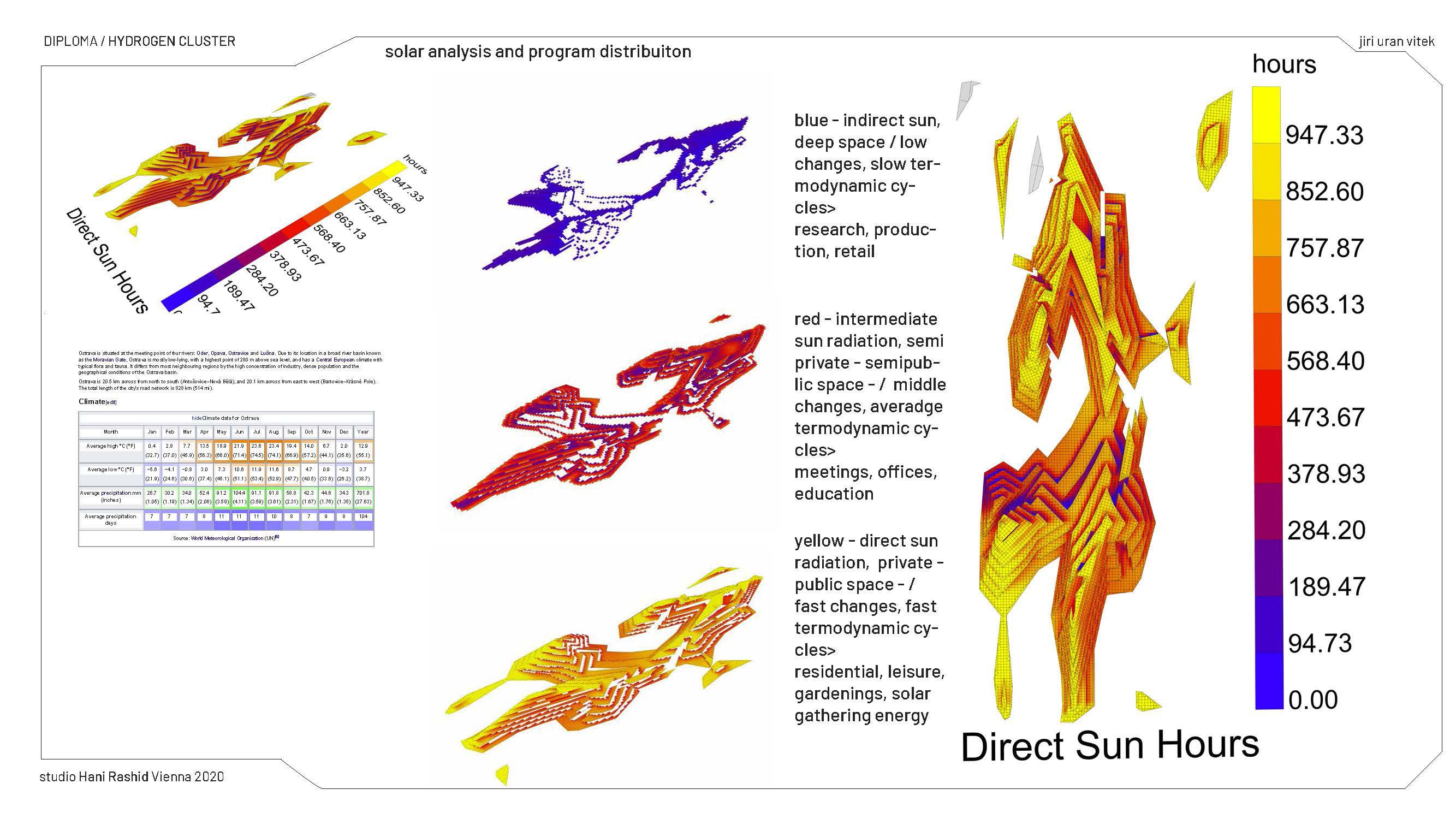
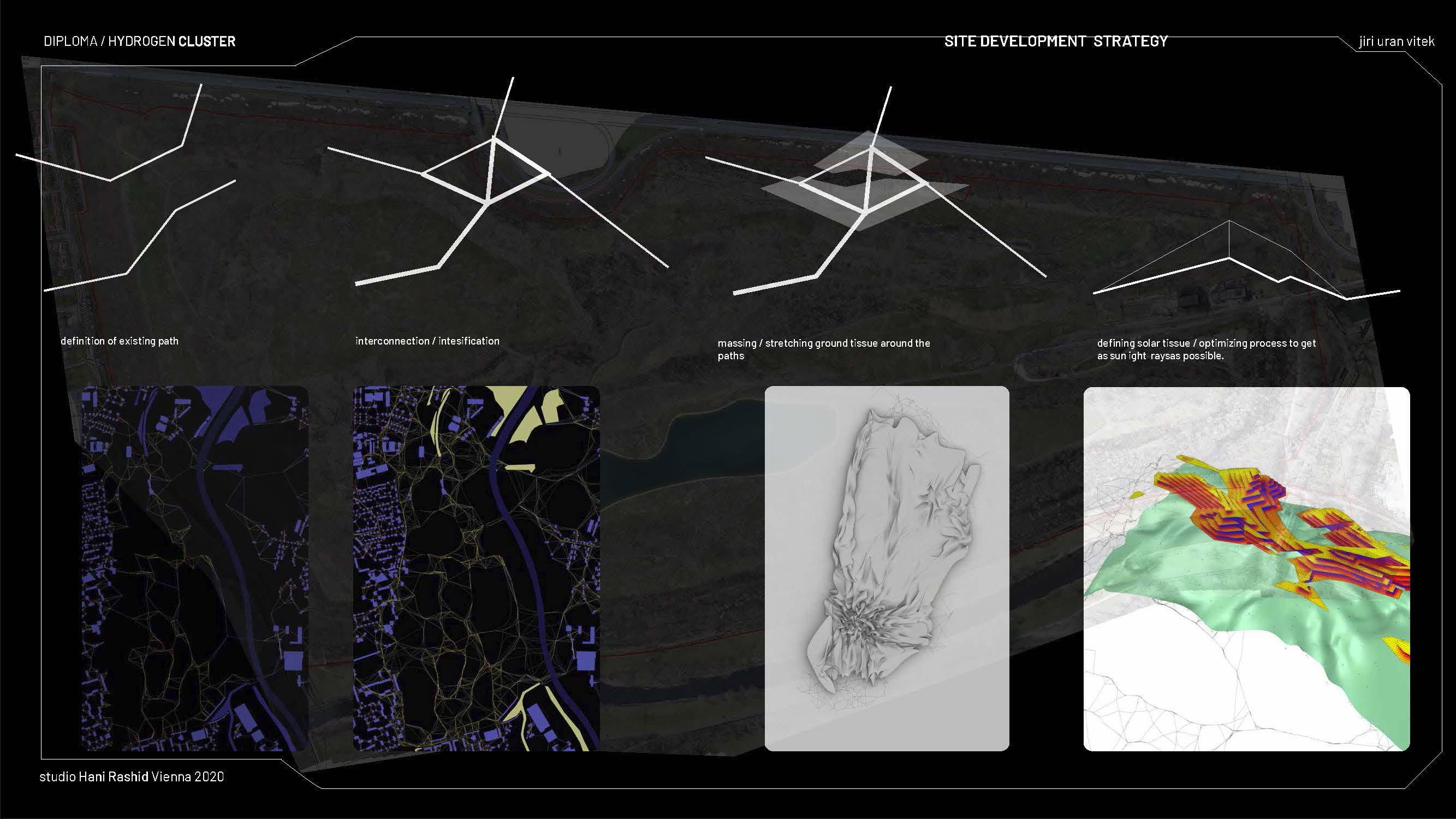



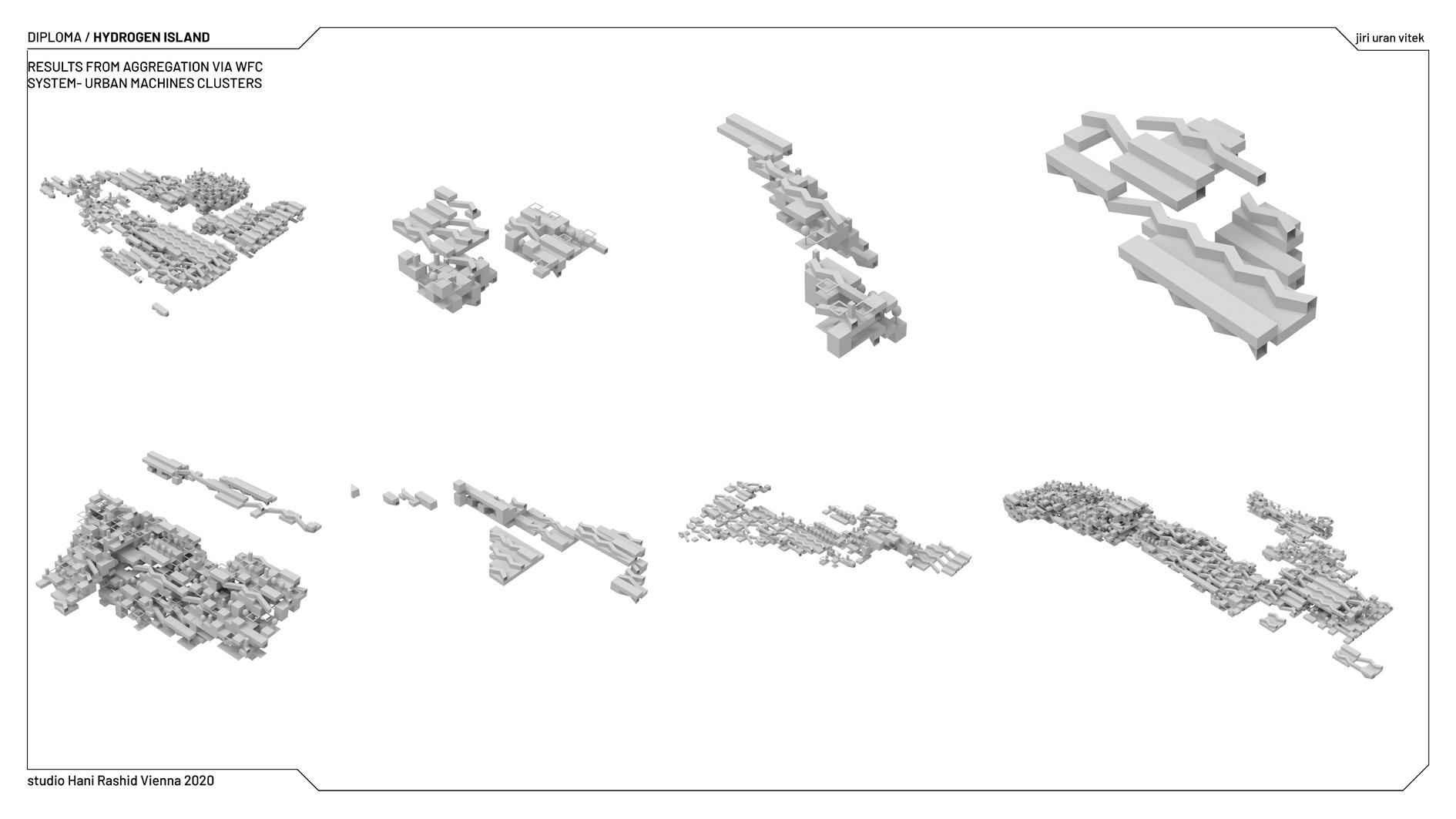


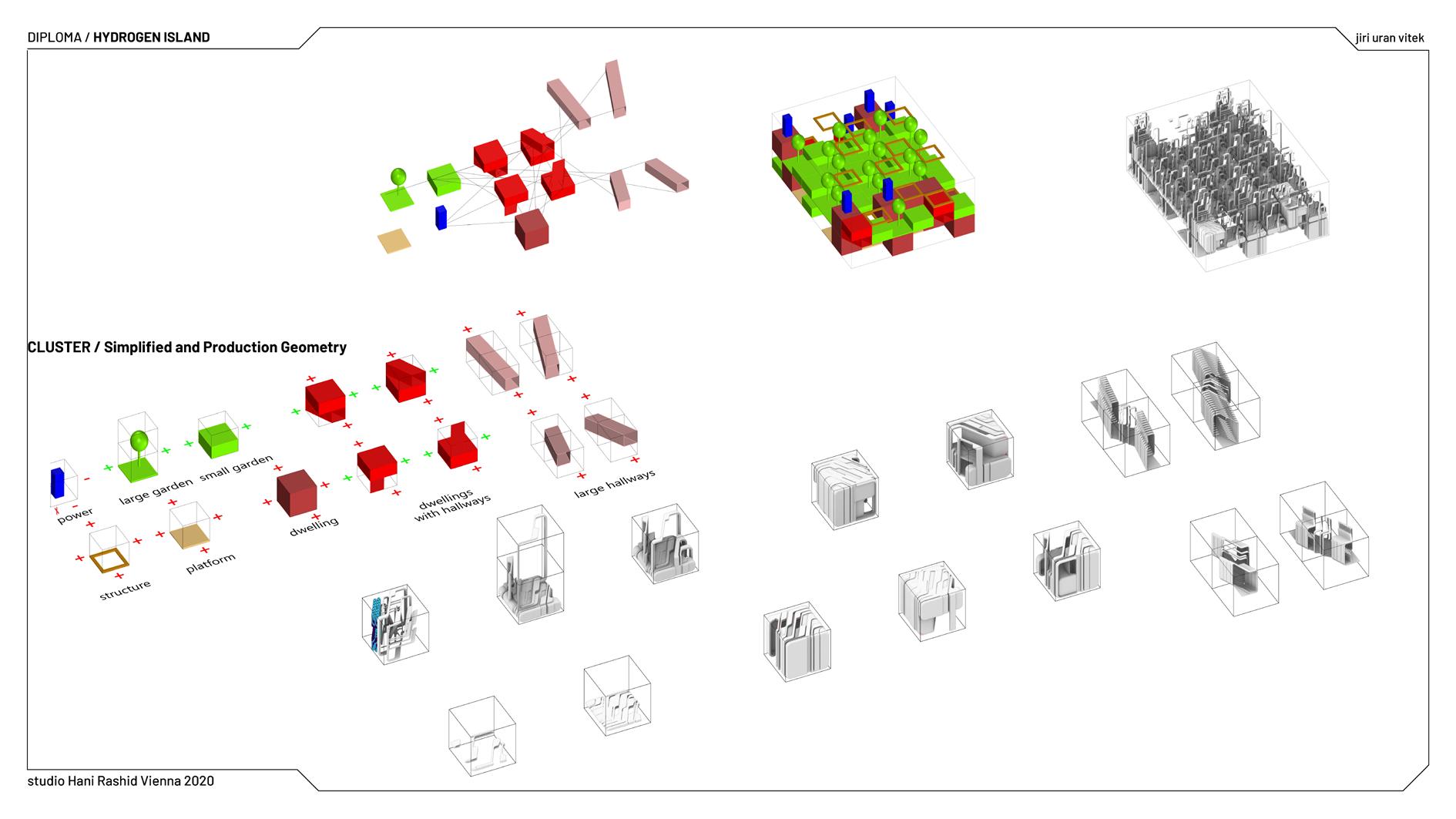
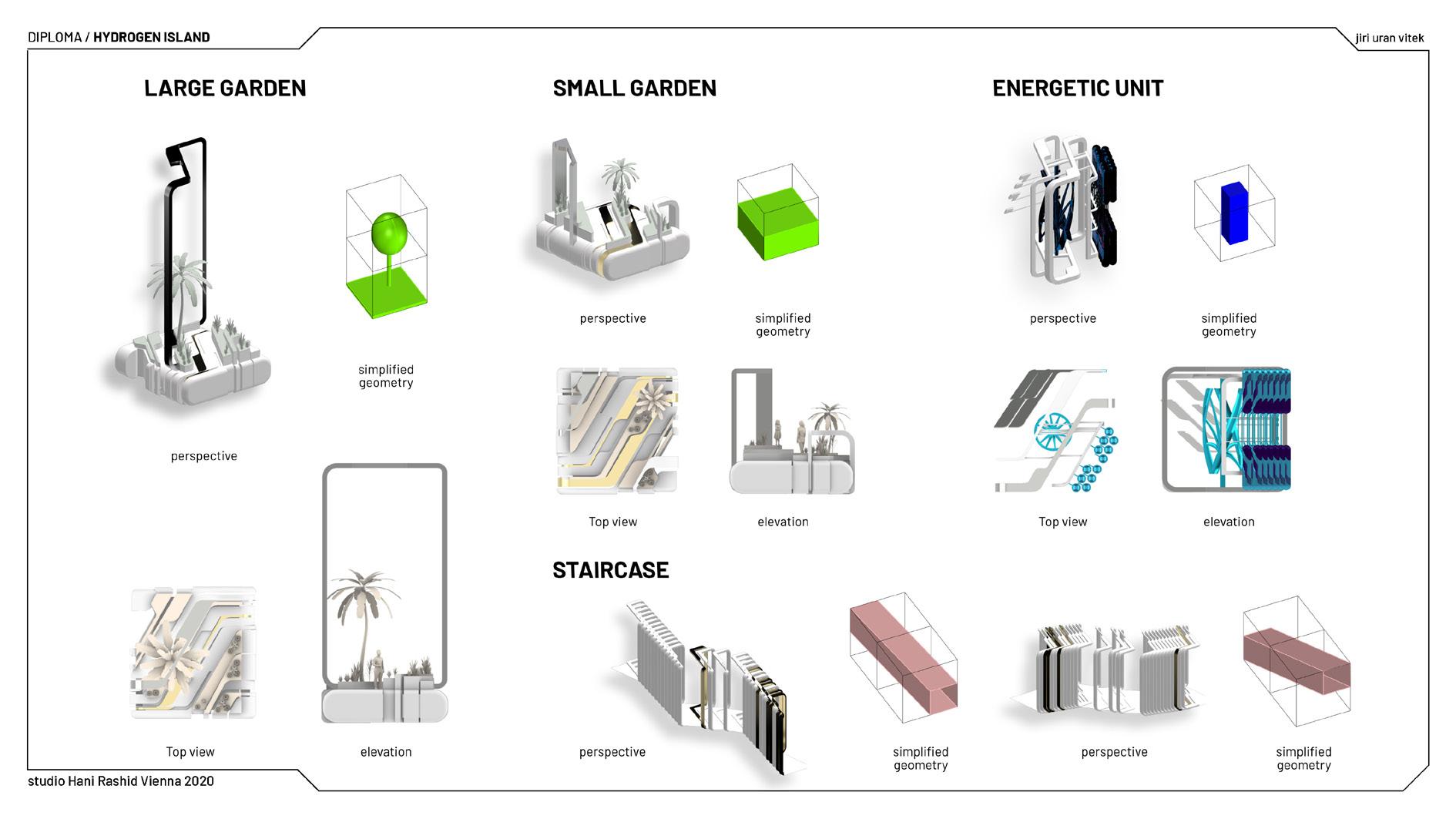

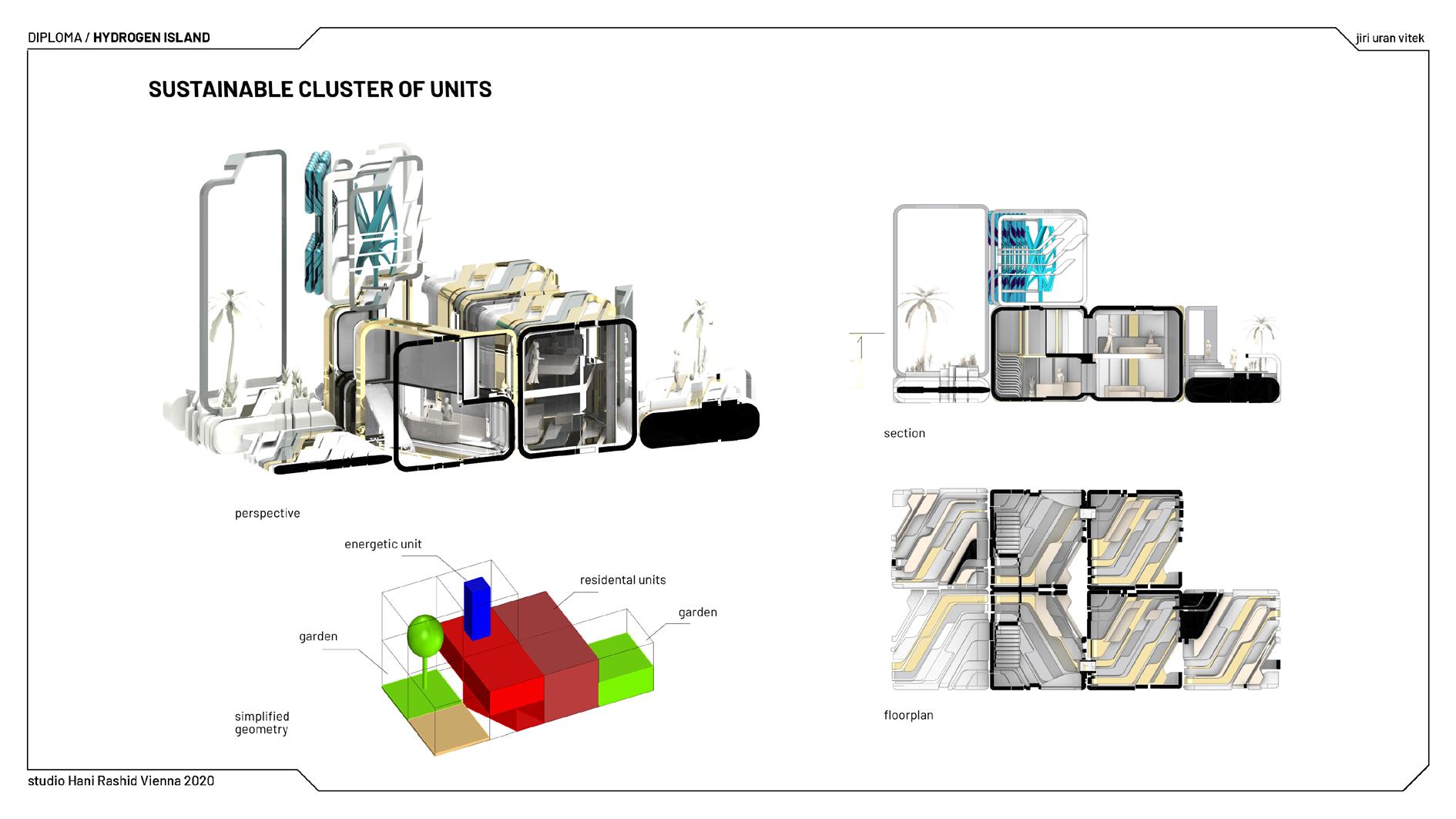
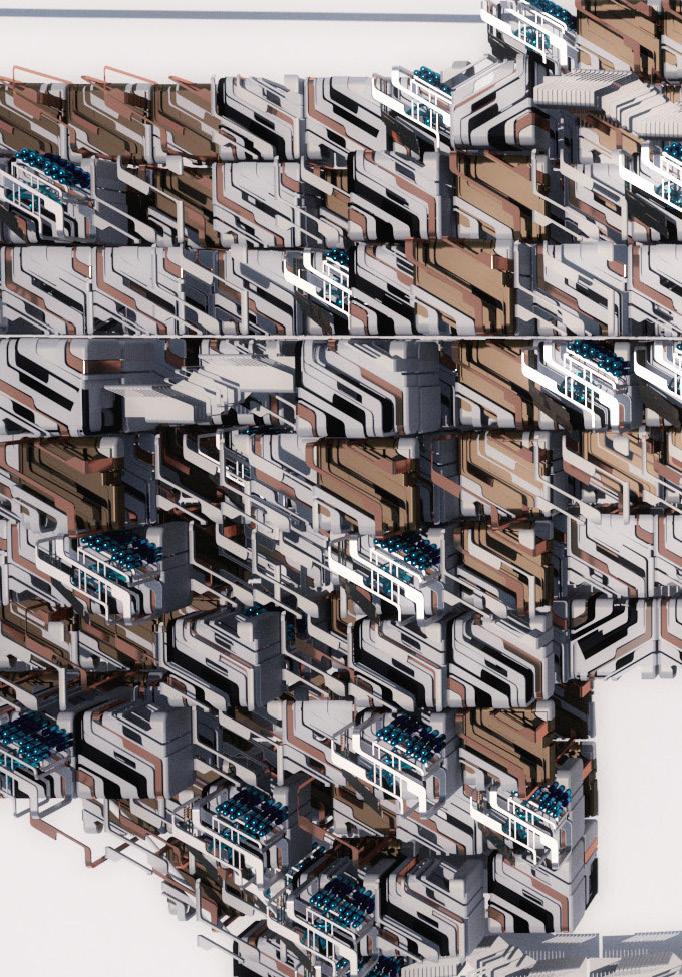
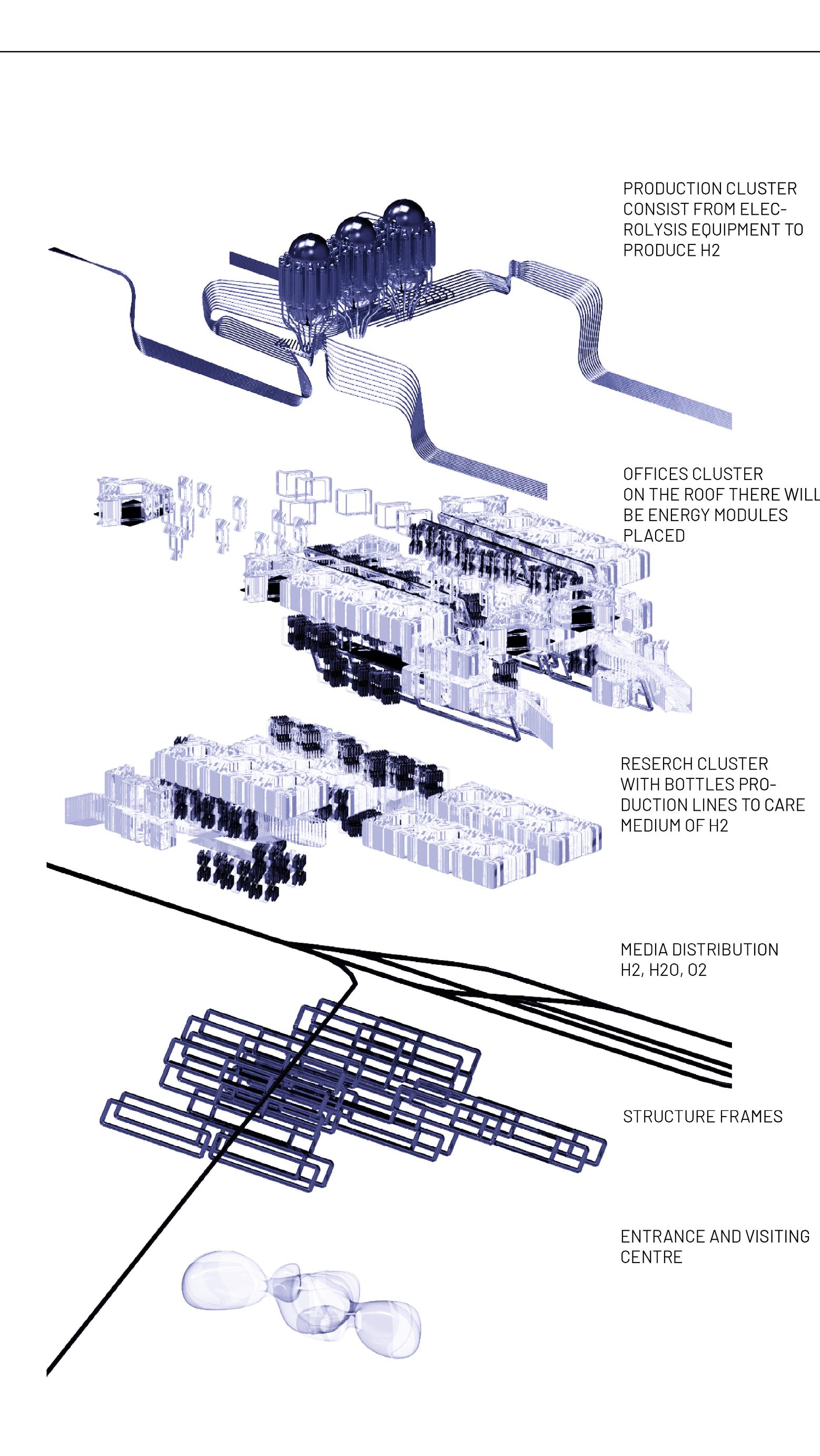
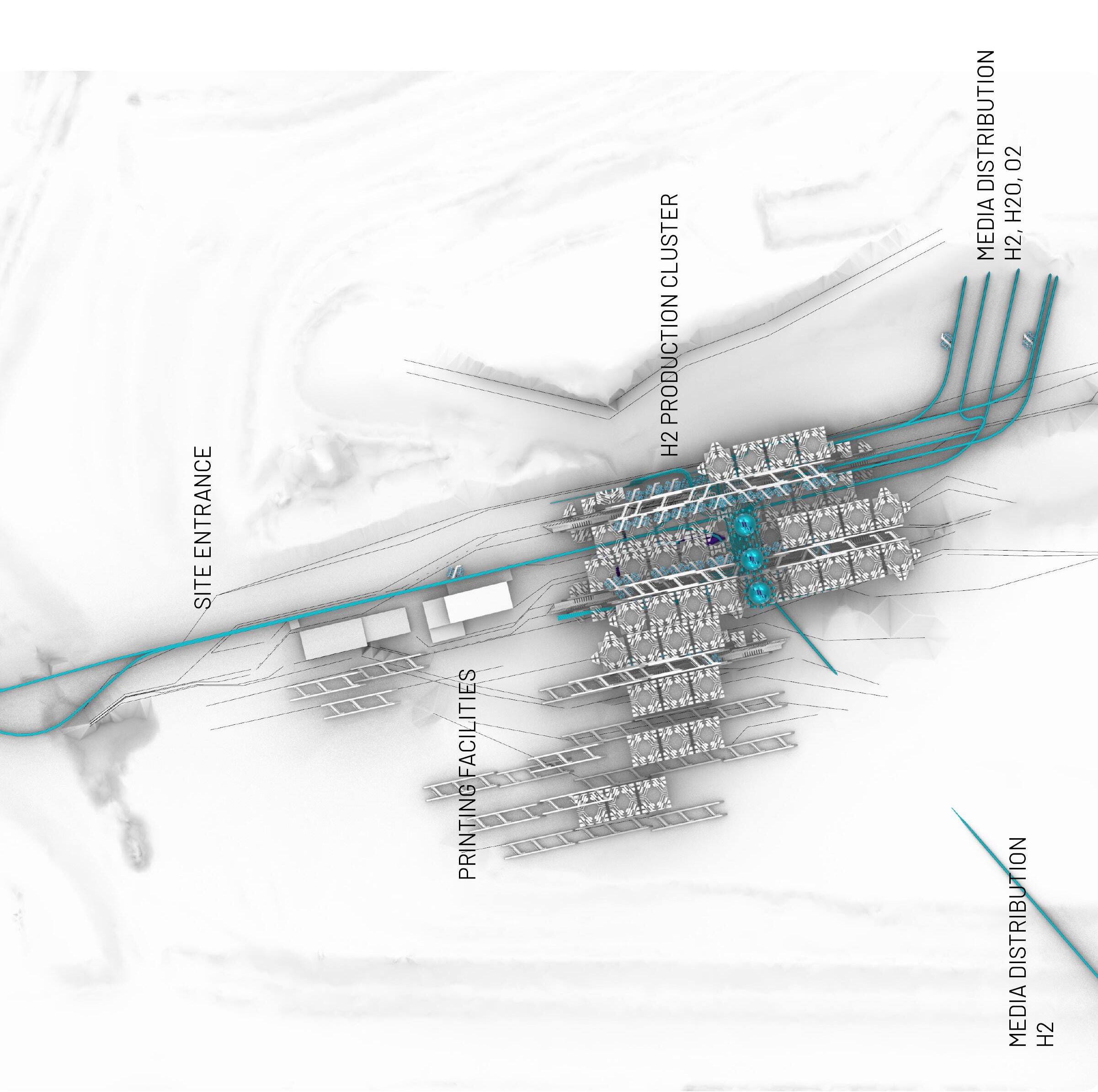

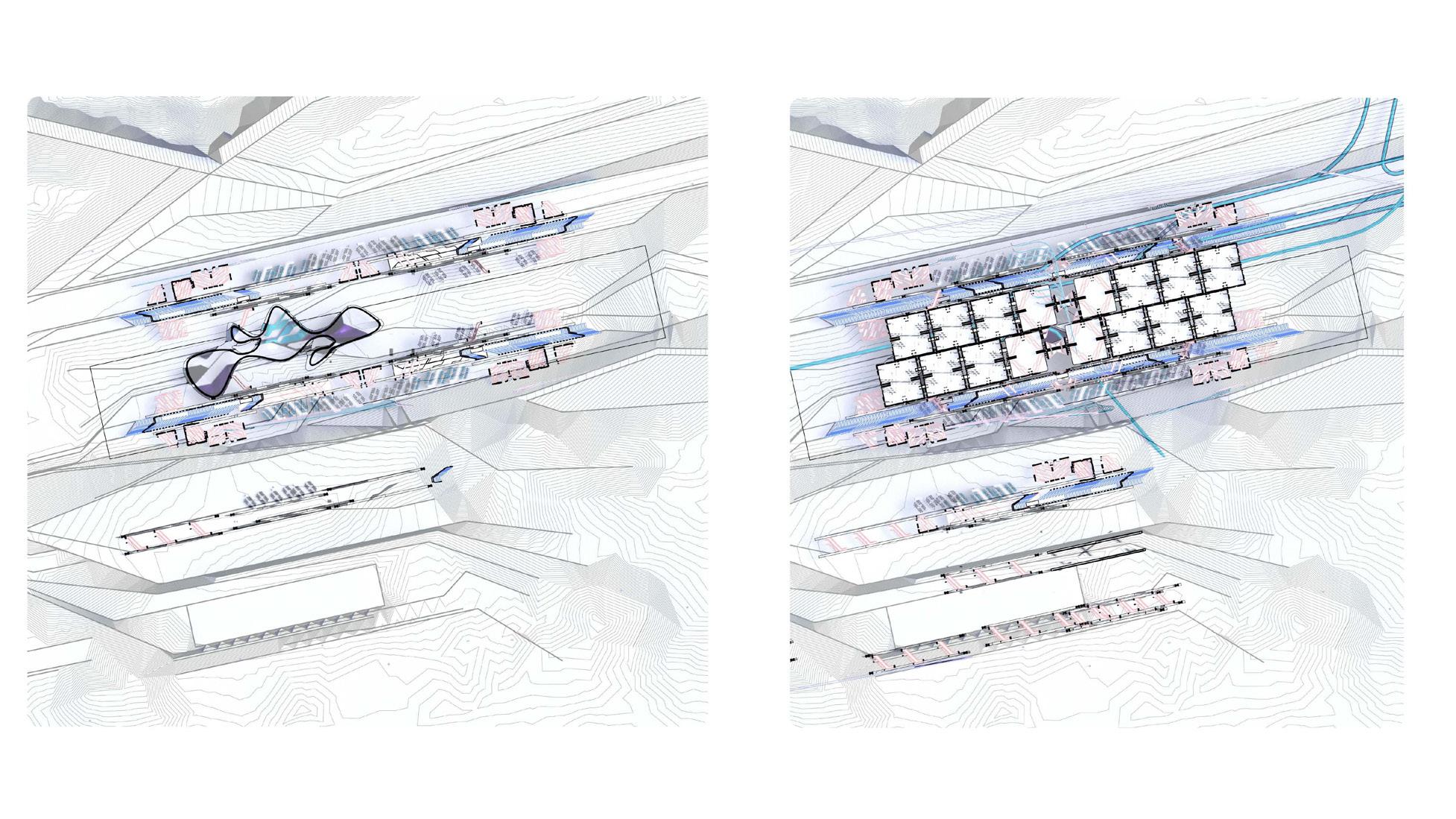

floor
- public area
plan - entrance
2nd floor plan - research centre

Pavilion P, BVV Brno CZ
invited competition / 1st. place
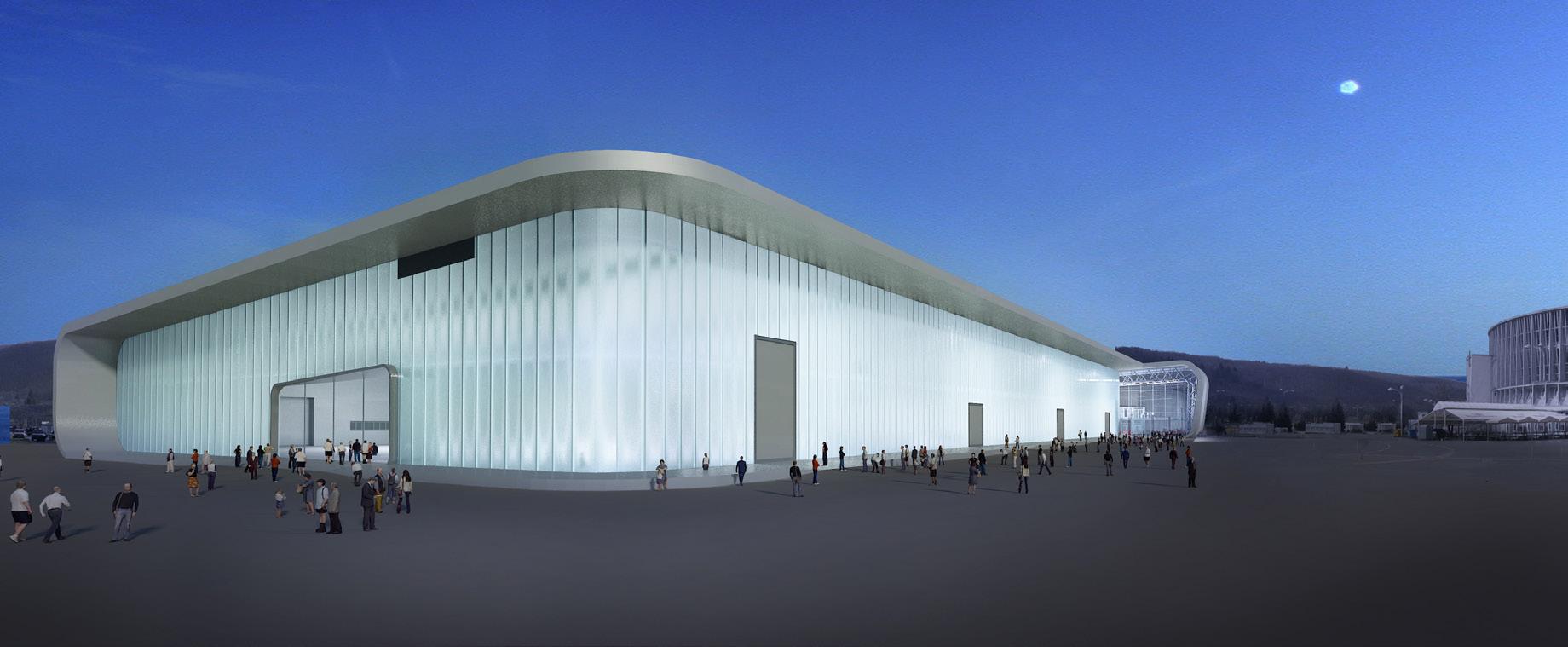
A two-round invited competition for the new Pavilion P caught me in practice at Arch.Design. Several Brno architects were invited, among them AD, who first took part in an in-house competition. My concept was chosen for possible versions and consequently it was submitted to the first competition round in parallel with the design by arch. Dokoupil, who used a segmental roof on a rectangular ground floor. Our design was different, reflecting the differentiation of the corners of the pavilion, where one serves the entrance to the premises, the other is the accent of space in front of pavilion Z. Our design was chosen
for the second round and we could address the key issue - the facade.WiththehelpoftheartistVáclavKrůček,wedesigned a laminated facade of openwork cassettes creating an irregular rich structure. It had a very special property of dematerializing and creating an indefinite, almost immaterial layer. The glass cladding was made up of Copility and was illuminated, referring to the cladding of pavilion Z.


The subsequent development of events, when we won the first prize and continued on the project for building permit, was a very special step. There was a demand for the “ravages” of the pavilion. By arguing that it is not possible to ruin the project, because its form is an architectural project that has more layers than just an envelope, I finally concluded that rather than participate in the mindless box, I prefer to give up the project.
So my interest in rational and irrational thinking in architecture began and I set out on a journey of discovering the capacities and boundaries of architecture and thinking within its framework.


03/ competitions
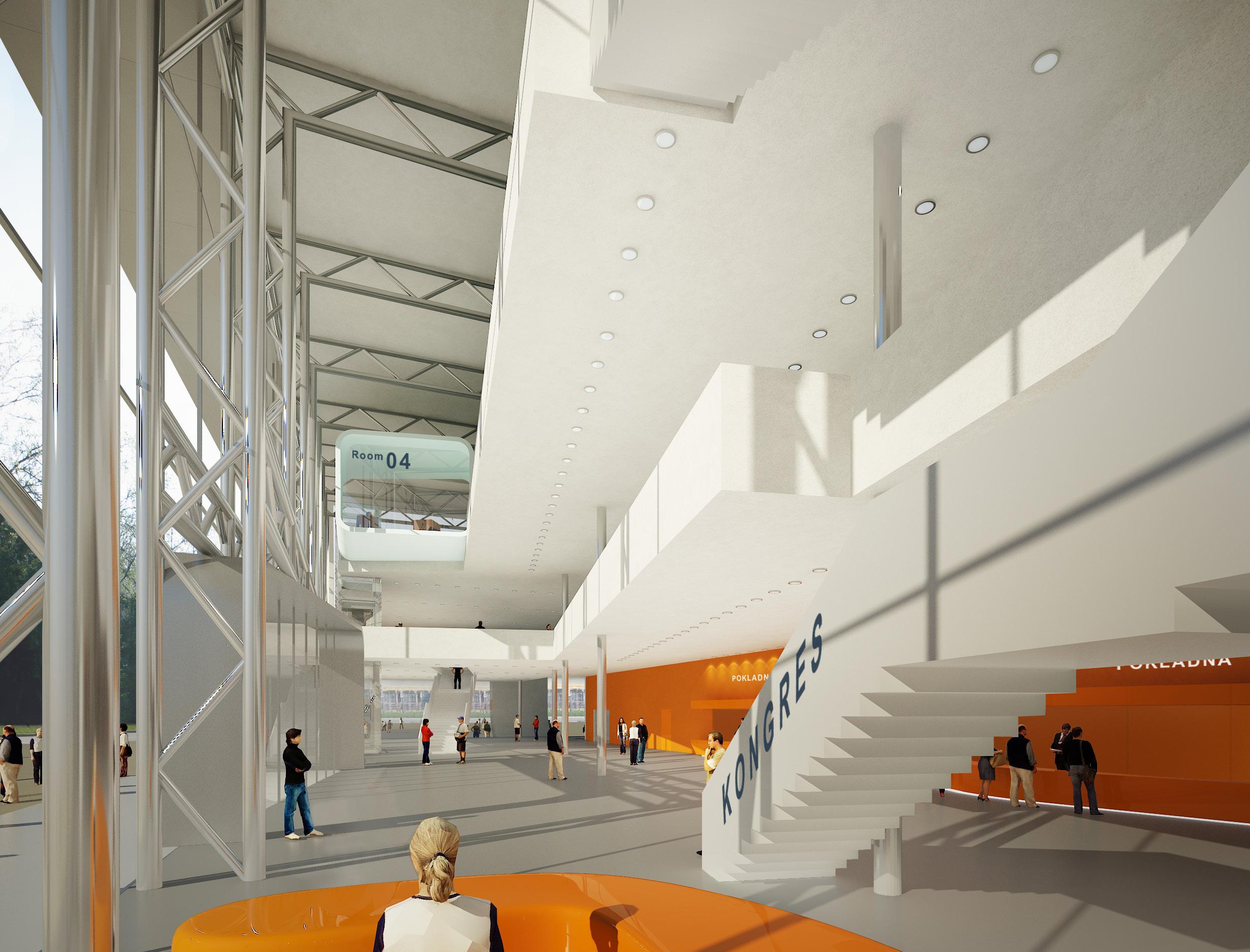





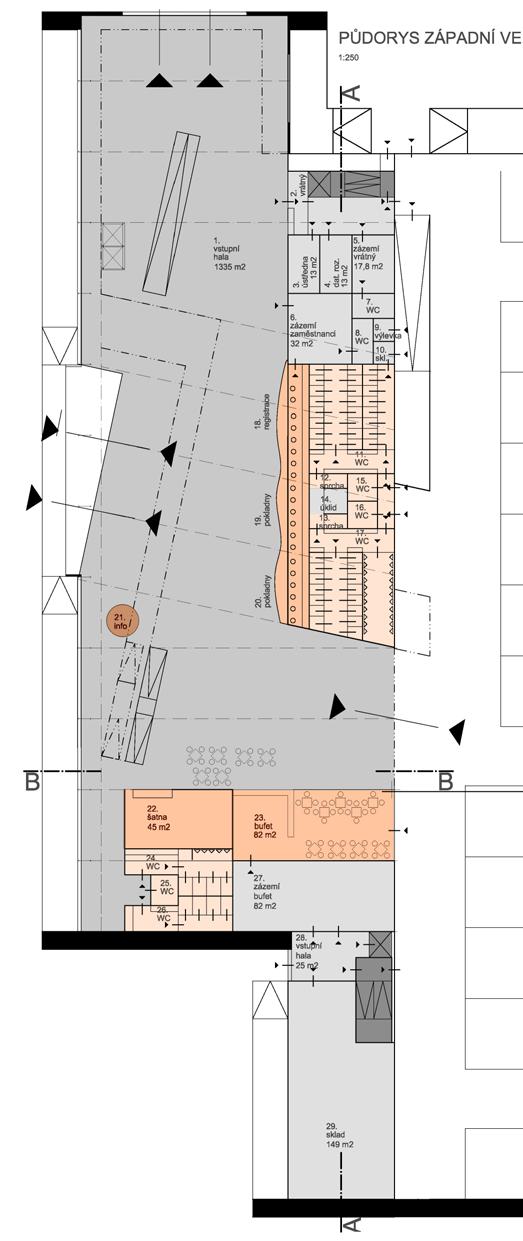



Academic
club ESF, Brno, CZ
realization, Budget-Conscious Interior Design: Maximizing Articulation and Performance
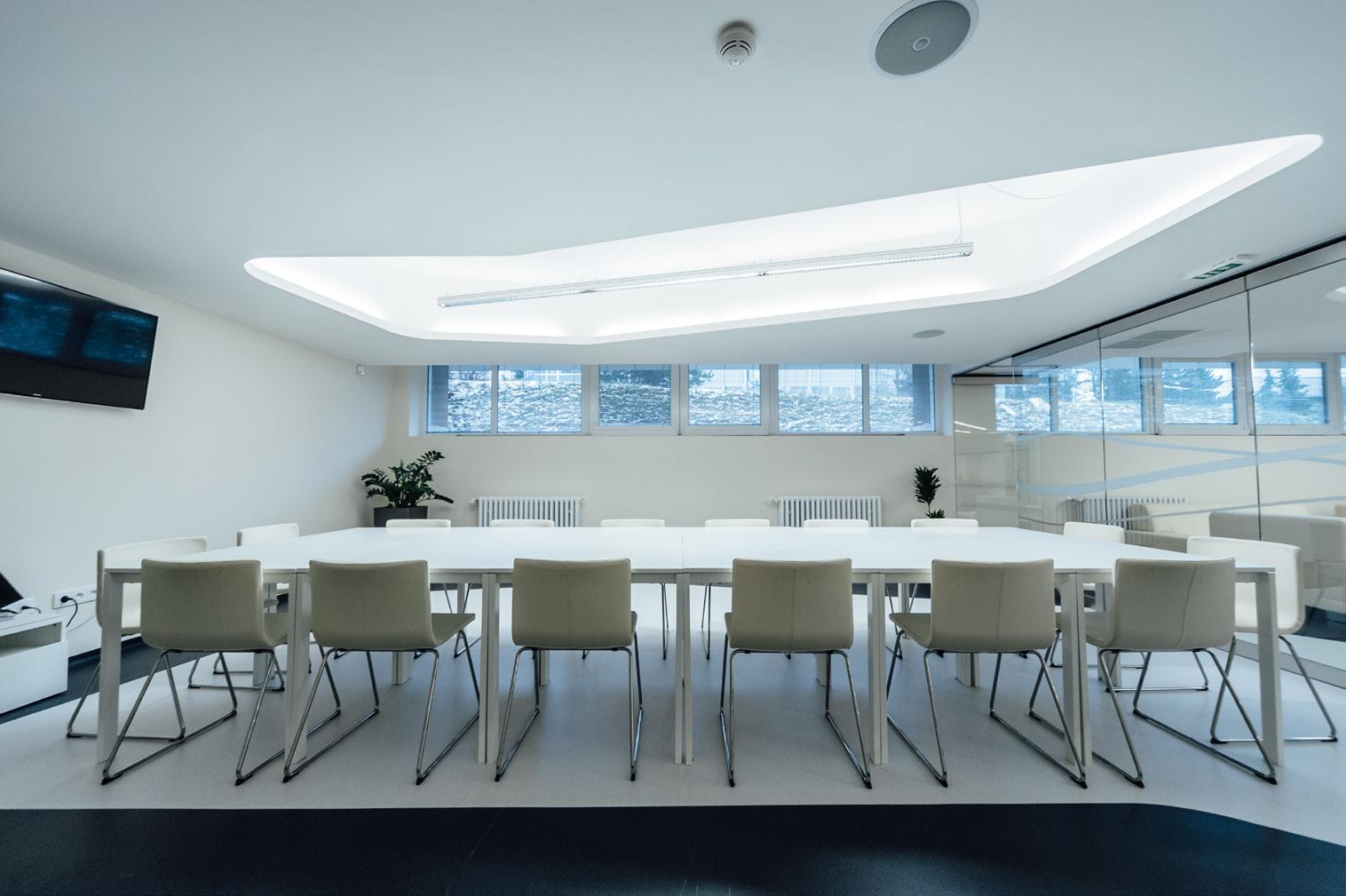
The cellars at the Faculty of Economics, Masaryk University in Brno underwent various transformations, evolving from a doctoral workplace to a gym, buffet, and finally a warehouse. The goal was to create a versatile space for academics, featuring meeting areas, a lounge, and a dining space with a bar and kitchenette. Reconstruction included upgrading sanitary facilities, installations, and air-conditioning. Challenges included limited daylight and complex infrastructure. The architectural focus was on imprinting new information on walls, ceiling, and floor, creating a coherent language for navigation. Color-coded surfaces correspond to the program’s nature, aiding in orientation. The unified architectural language integrates the space, with differentiated ceiling elements highlighting desired atmospheres. The compact, well-organized space defines areas for various activities, with fully integrated infrastructure elements.


Construction work was minimal, the main was the replacement and enlargement of window openings with incorporating window sills. The kitchen is equipped with an integrated line with a machine for coffee and snacks. The bar articulates movement from the kitchen to the space, there is a wrap, ergonomic shaping takes into account the use. The color of the line and bar is white on the red box floor. The tables and chairs of the dining area are simple, elegant white with transparent plastic chairs. Chill-out seats and tables are simple office sofa, leatherette finish, beige color, matching with plaster. A perforated metal ceiling in gray was used for the ceiling in the corridor and kitchen area. The Bezier curve has been chosen for articulation of the architectural language, which is able to direct, create a gradient and gradation, while maintaining a coherent shape and smoothness.


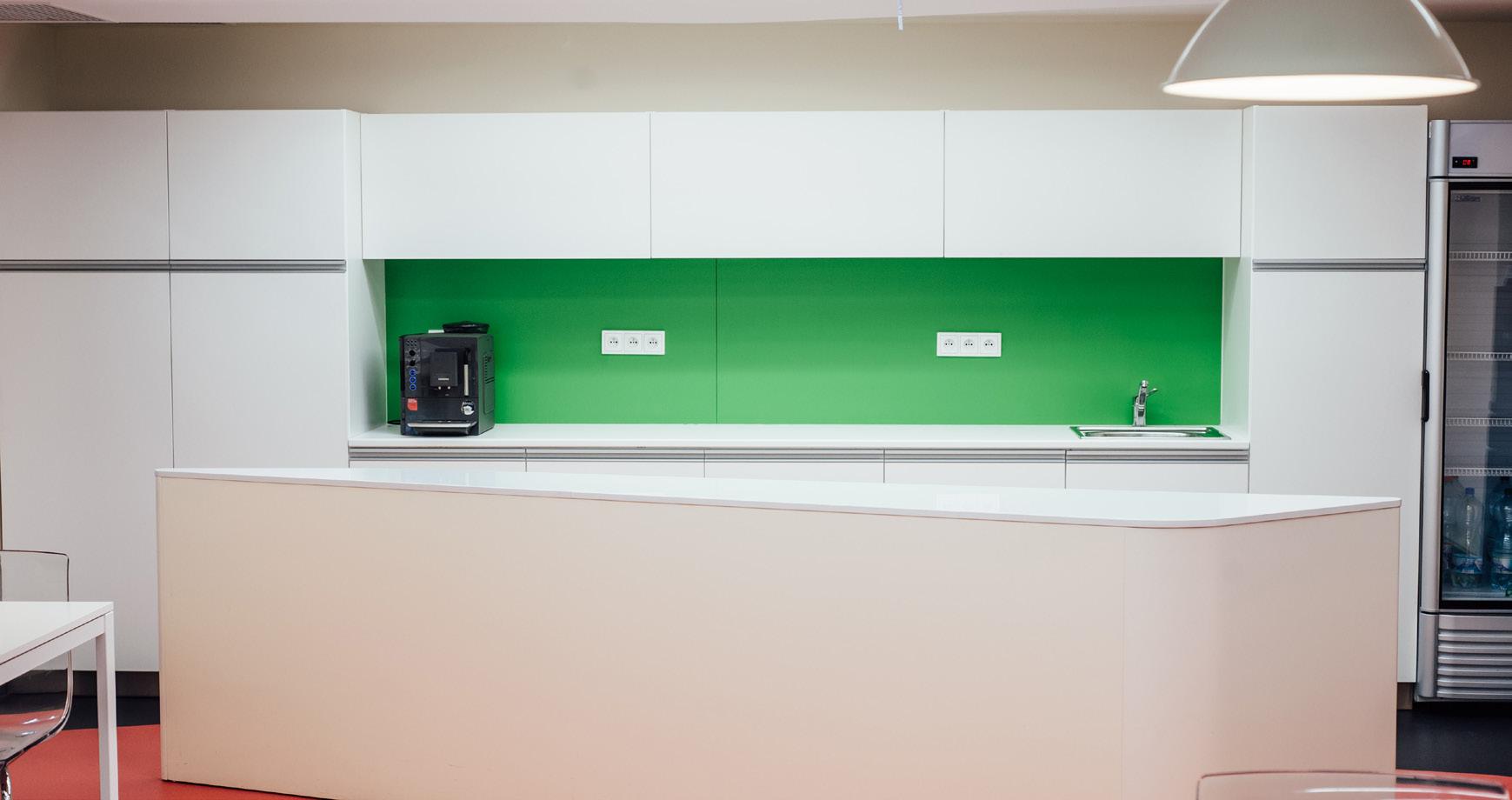
05/ realizations

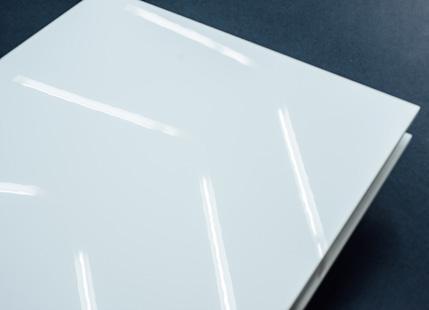
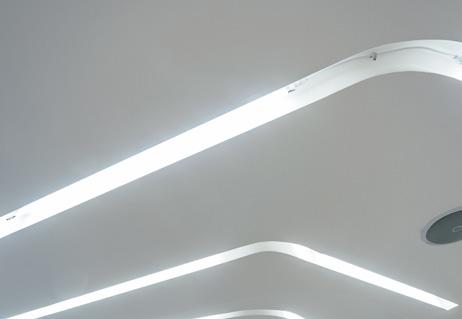

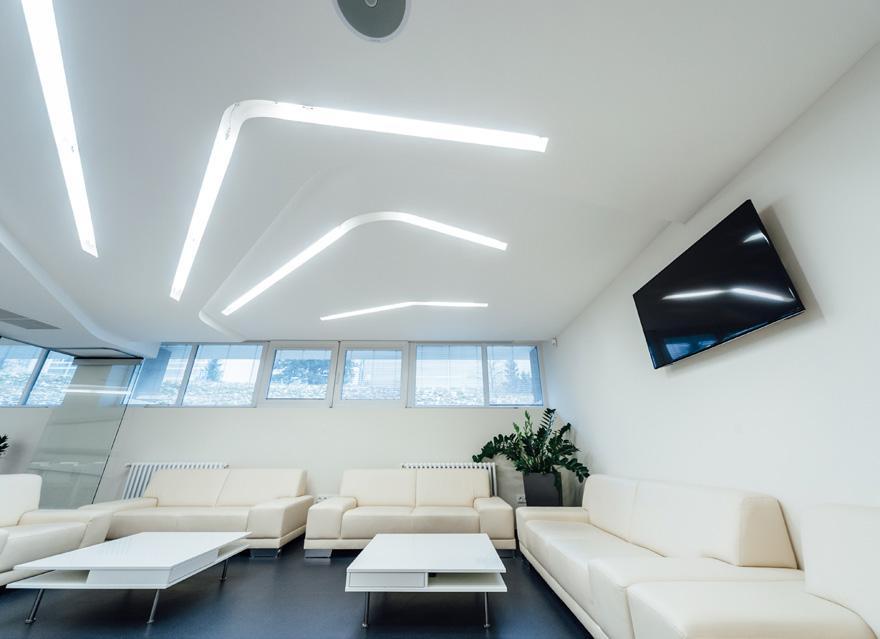

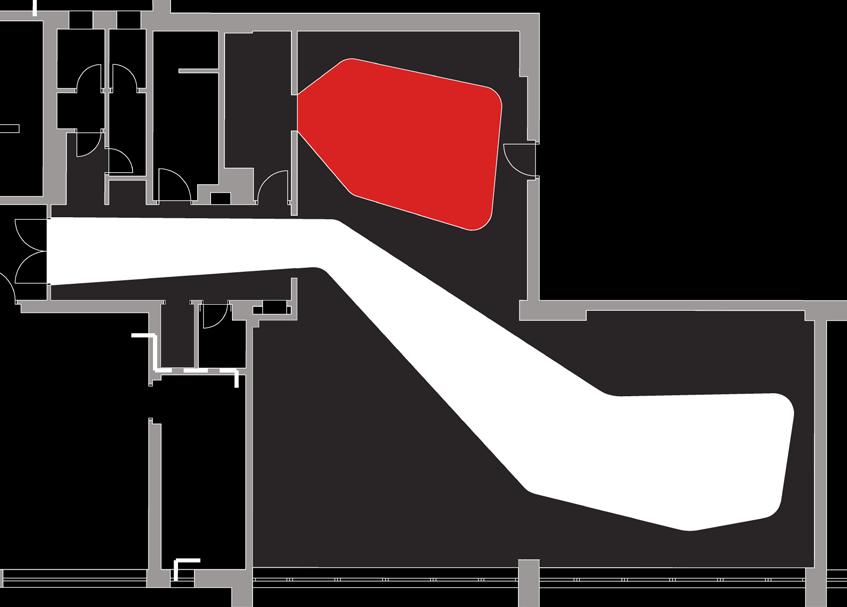


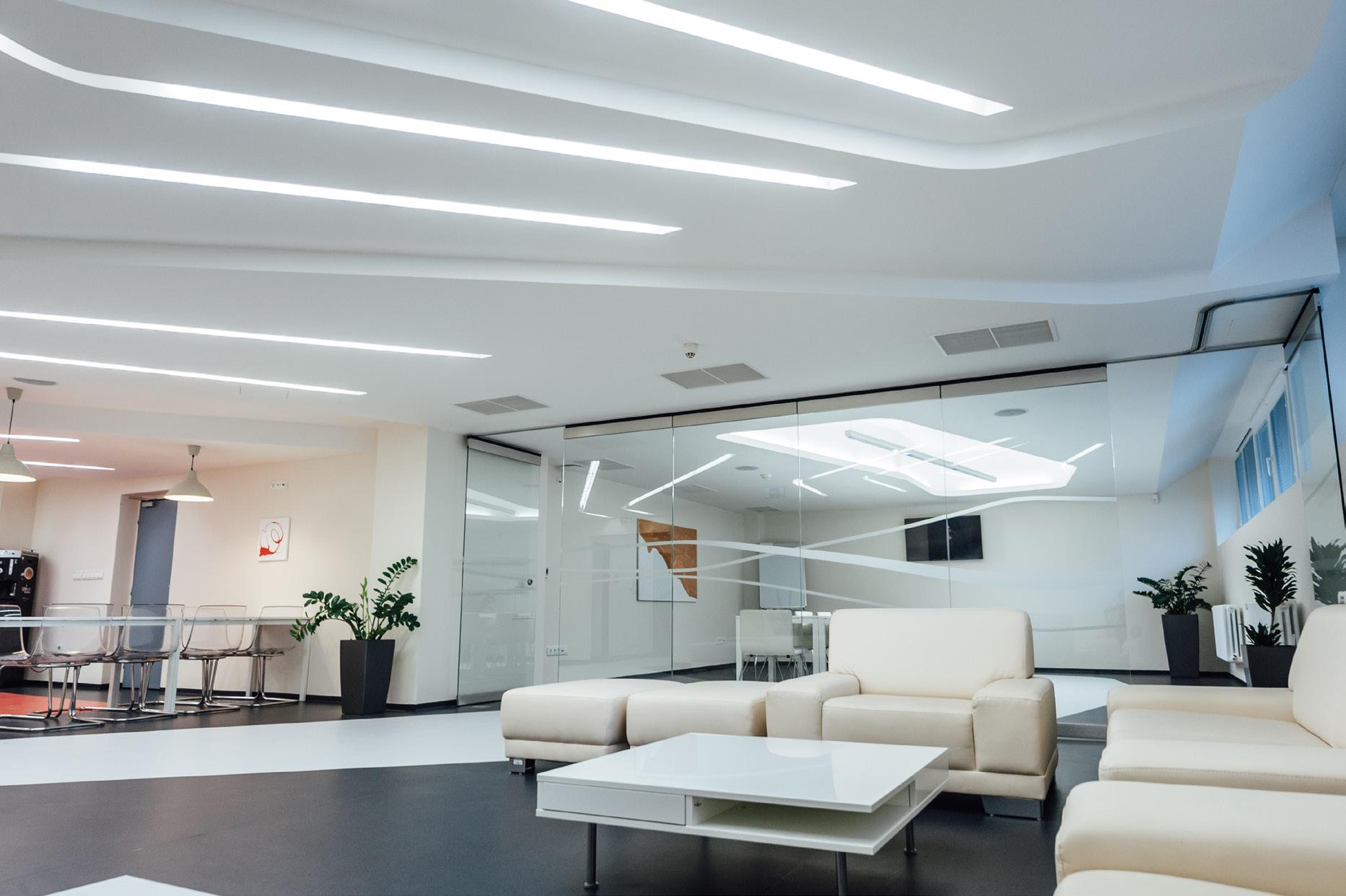

House JV.3.ZR
realization 2016, Sun-Optimized Passive Wood House: Form-Finding for Efficiency

05/ realizations


The space scales rotate starting in the hall, with a relaxed atmosphere supported by a segmental triangular skylight. Entering the living area involves a smooth transition under the gallery, escalating in the dining room with a 6-meter ridge. A rounded corner articulates the transition, creating fluidity. Room access is broken by niches with benches, fostering semi-private meetings. The gallery includes a library with horizon views. The closed south wall respects the future neighborhood. The compact volume is emphasized by extruding the dining room window on the north
wall, creating tension with wooden elements. Shadows form a sequence of triangles. To maintain a homogeneous facade, foreign elements are eliminated, and necessary ventilation perforations follow a pattern made with CNC precision on the board.
Single-storey house with a basement, featuring a passive wooden construction with wood fiber insulation and Equitone board facade. Spatial design emphasizes bedrooms facing the garden. The compact exterior volume, differentiated and rich, utilizes alternating scale, compression, and release in the interior. The 90x90x80x100 syntax enhances space dynamics based on the rotation of the garden wall with the sun’s movement. The single-story house with two shed roofs comprises a quiet and social section, with a service block towards the street. The entrance leads to the
living, dining, and kitchen areas, followed by a parent’s rest block and children’s rooms facing the garden. The house has a partial basement with storage and technological spaces. A gallery with a library on the elevated shelf part of the roof creates an outdoor space. Total built-up area is approximately 300 m².
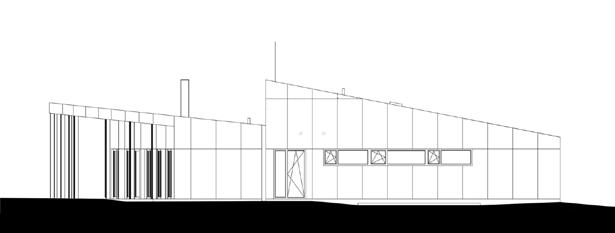
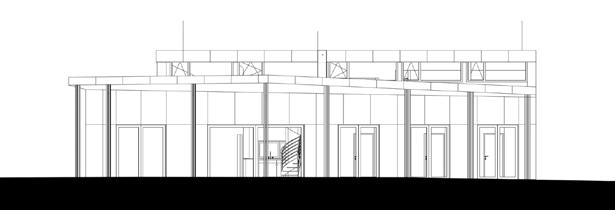
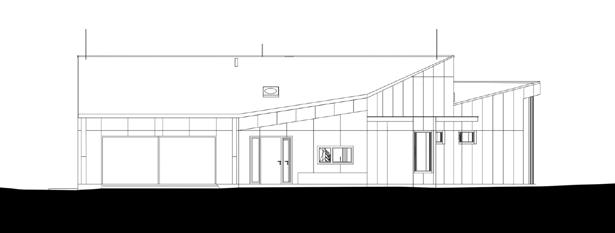
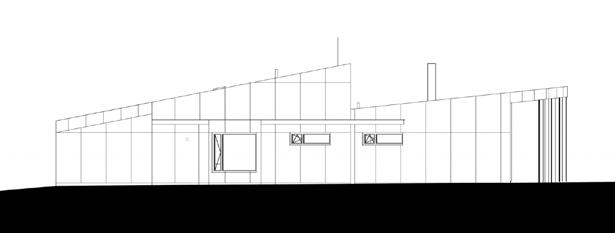
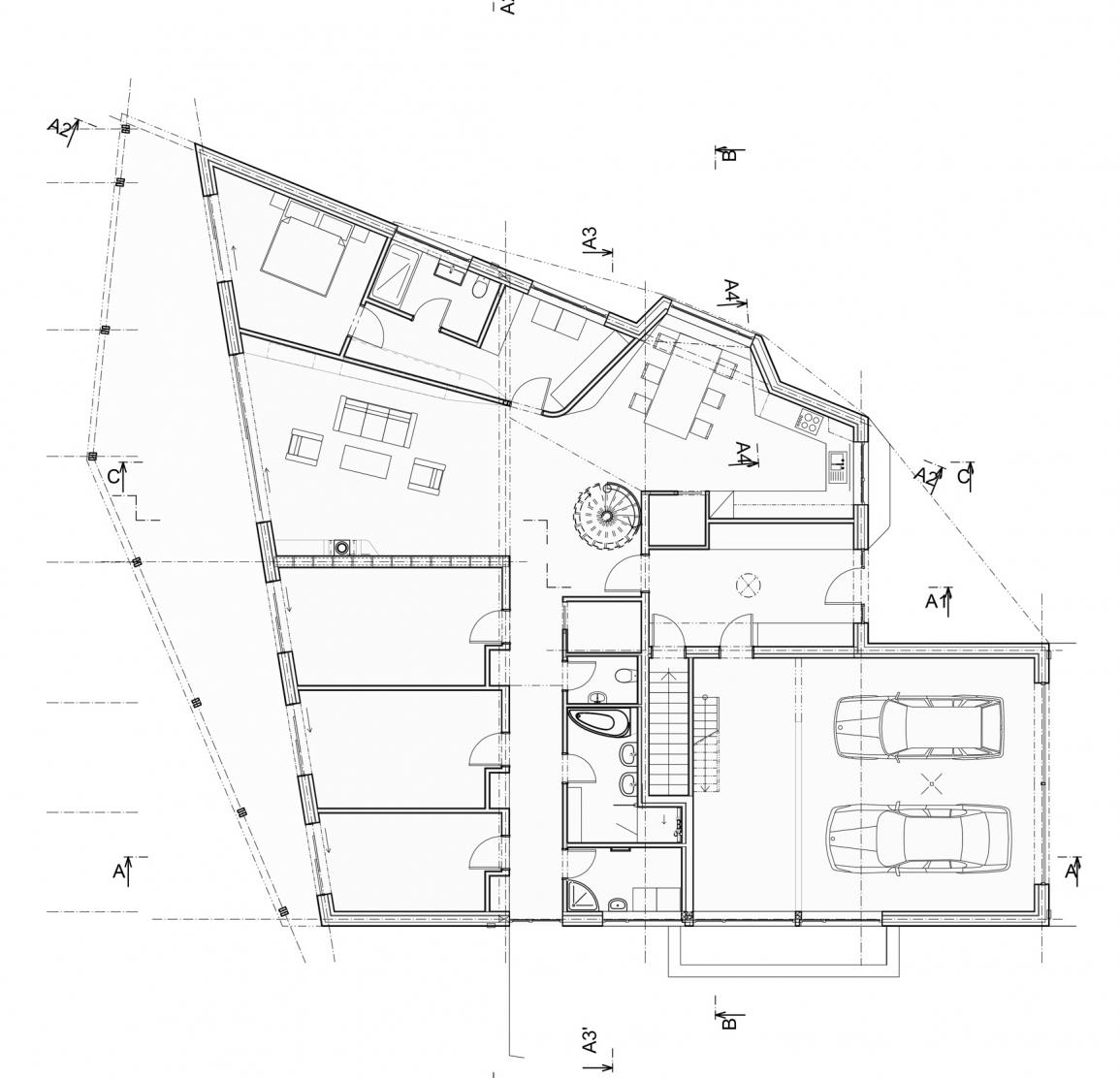
realization A1 A A A16' A16 A17' A1' A1 A A A16' A16 A17' A1' A1 A A16' A16 D 01 D2 02 D3 03 D5 05 D6 06 D7 07 D8 08 S1 S2 S3 S4 S6 S5 P3 P2 P4 V1 P2 P1
House JV.3.ZR
05/ realizations

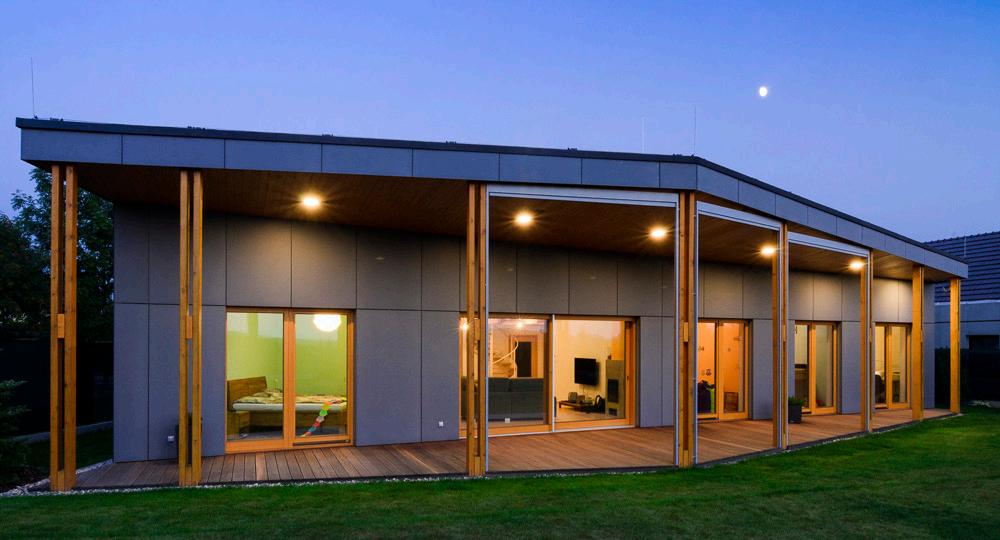
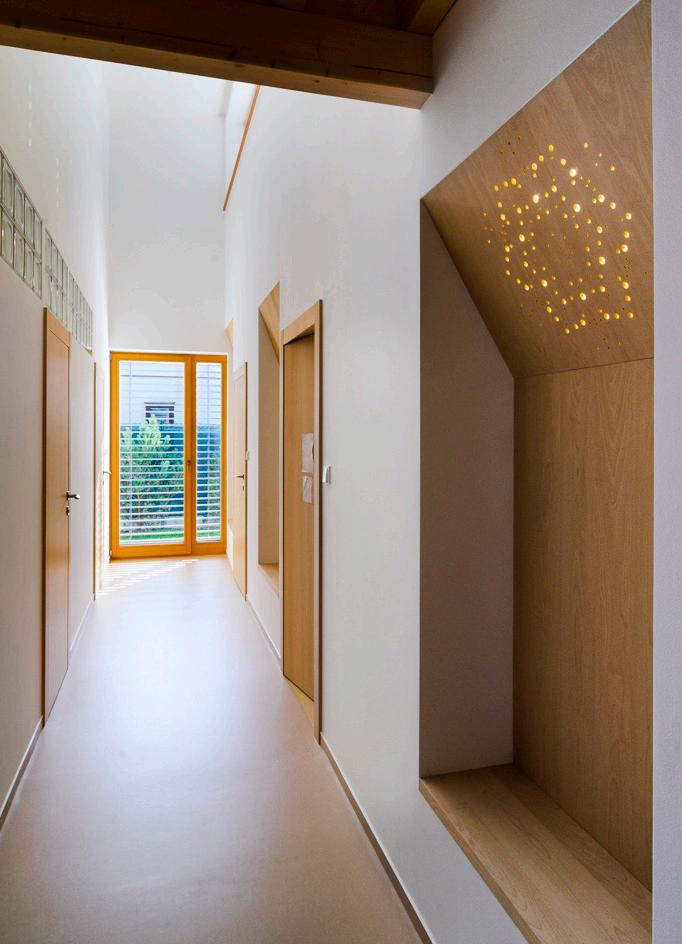

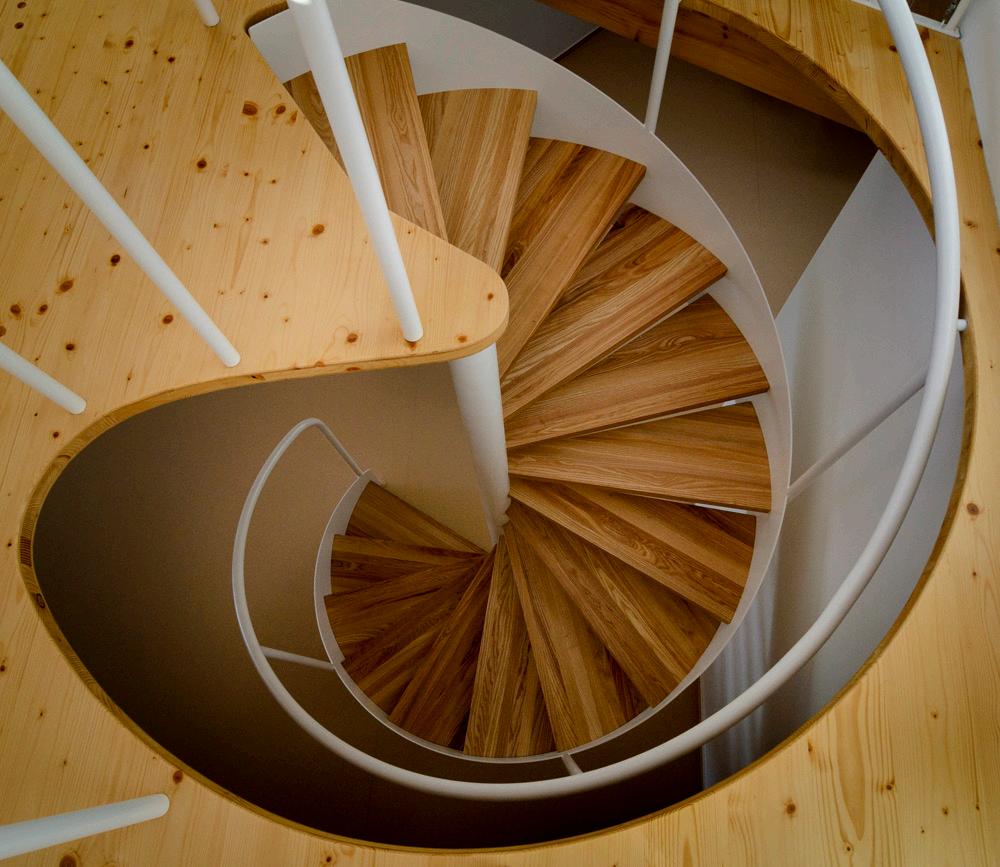

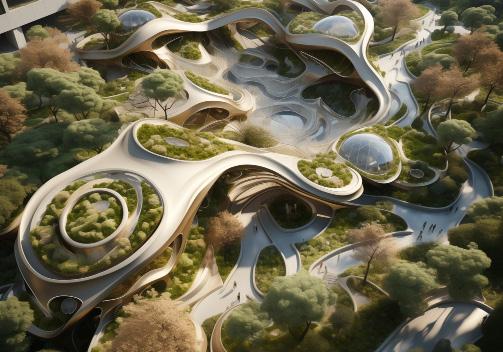
AI in architecture and urban design research selected by ACE EU 2023
AI in architecture and urban design research selected by ACE EU 2023



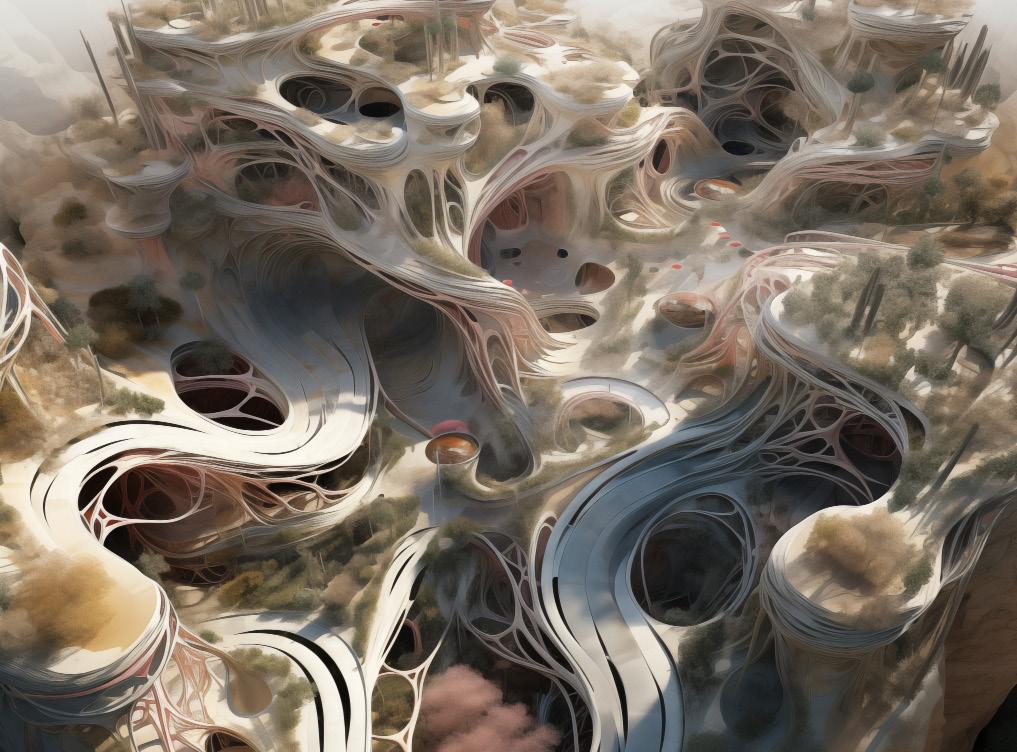
A unique project designed by architect prof. Zdeněk Fránek, who developed yourArchitects studio for all project stages, integrates novel design with contemporary design techniques. The parametric model was connected to the BIM model via the Rhino - Grasshopper - Archicad platform. Parametrization facilitated complex geometry, optimization and work with project details.
The Parking House is an original minimalist building that demonstrates its function by a facade formed by road barriers. These, brought to an unusual situation, create an original architectural layer. Smooth striping, typical of the work of Zdeněk Fránek, is given a new materiality and meaning. The roundness, which reflects the context with the landscape, underlines the movement and dynamics of the present. It reacts to the flows in the surrounding area, where different speeds of cars, pedestrians and cyclists blend. Everything is enhanced by transferring the slope to the inclination of the ceiling slabs. The overall design process took full advantage of the digital parametric capabilities - from shape generation to the virtual object model presented in HTC glasses.
Two-storey building with mobile roof allows parking up to 200 cars. It forms a triangle with a convex side, using the slope of the land and respecting the slope of the terrain. The layout of the house is divided into parking spaces with a ramp and communication cores. The facade from the north is formed by road barriers with a ventilation function and a high aesthetic experience. The facades of the east and south are concrete with small air vents in a diverse pattern and will grow with ivy and local plants. The LED illumination placed on the crash barrier of the northern façade refers to the long exposure of the passage of cars.
04/ selected projects

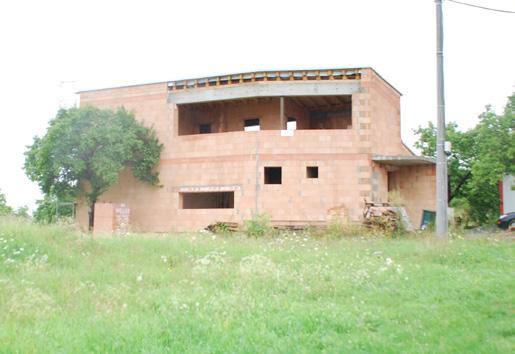


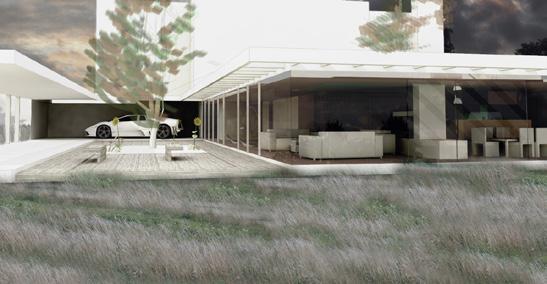

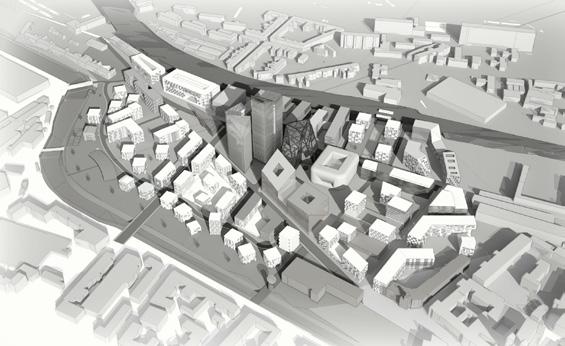
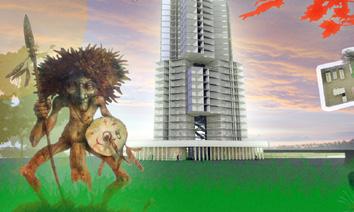

INDEX
2005
- House Sedlak / study, sp, realization 2007
- House in Zdar extension / study, sp, realization 2006
2006
- Diploma complex Pilska nadrz Zdar / diploma thesis
- Velky Tynec Family House / study, sp
- Urban plan for Bustehrad / territorial plan by architect Mejsnarova
- Urban plan for Uncov / territorial plan by architect Mejsnarova
- Urban plan for Kolin / territorial plan by architect Mejsnarova
- Kanar I. Family House / study, sp
2007
- Pavilion P study / invited competition 1st prize / AD
- Zbrojovka / study / AD
- Mala Amerika / study / AD
- BBP park / interior PP / AD
2008
- Kanar II. Family House PP / study, sp, PP, realization 2015
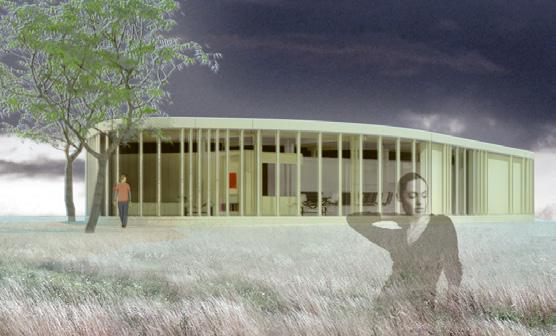
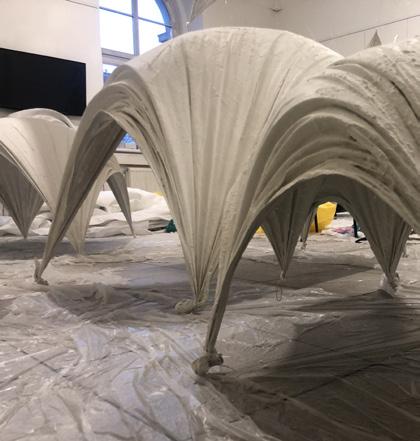

- Ondrich Family House / facade detail / FA
- Olomouc Sladovna / study / FA
- Hotel Eroplan / facade detail / FA
- Hotel Karlovy Vary / reconstruction study
2009
- Diploma Slovenian National Theatre / diploma thesis
- Namesti Svobody Znojmo / competition 1st prize / SuperLabor
- Americka Plzen / competition 3rd prize / SuperLabor
- Pension Tynec / study
- Family House N01 / study
- Living room / installation
- Water House / competition / SuperLabor
- Solution for the new building of the West Bohemian Gallery in Plzen / competition / SuperLabor
2010
- Velka Losenice Family House / study, PP, realization 2015
- Extension Sedlak Family House / study, PP, realization 2012
- Extension Vatin / study, PP, realization 2011
- Hluboke Dvory Family House / study, sp, PP, realization 2012 / VA
- Atrium villa in Dolinka / study, sp / VA
- Territorial study Habri / territorial study / VA
- Interior Inspire / interior / VA
2011
- Kolackova Family House / study, PP, realization 2013
- Plzen Two Towers / competition
- Showroom Family House in Prague / study / VA
- Villa by the water / study
- Party Interior / installation / VA
- Chapel for the memorial area Lezaky / competition
06/ index
INDEX
projekty Index:
2012
- Studio Project Complexity / Research / SZH
- Residential House in Nosislav / Study / Preliminary Project / Realization 2017
- Naklo Lookout Tower / Competition
- Smart Residential House / Study / VA
- Atrium House SC01 / Study
- Lobec Residence / Study / VA
- Villa F01 / Study
- Center for Indoor Sports in Ceske Budejovice / Competition / VA
- Residential House S01 / Study
- Residential House with Folding Roof / Competition / VA
2013
- Residential House Zdar / Study / Preliminary Project / Realization 2016
- Slamak Residential House / Study / VA
- Studio Project Airport City London / Research / SZH
- Bohous Residential House / Study
- Studio Project Tectonic Articulation / Research / SZH
- Cave Roots - Energy Design / Research / SZH
- Villa Jaro / Study
2014
- Studio Project Integro / Research / SZH
- Revitalization of the Historic Center of Orlova / Competition / SuperLabor
2015
- Pre-Diploma Project Emergent Cluster / Research / SZH
- Synergic Pattern in Usti nad Labem / Competition
- Academic Club ESF / Study / Realization
- Residential House Petrikov II / Study
- Ruzyne Airport / Competition Round II / SuperLabor
- Revitalization of Doubravnik / Competition 3rd Prize / SuperLabor + VA
- School in Chyne / Concept
- EVOLO: The Successive Skyscraper / Competition / Published in Evolo 3
2016
- Residential House Petrikov III / Study
- Dukla Sports Center in Pardubice / Competition / VA
- Urban Interventions in Zdar - Entrance / Study
- Urban Interventions in Zdar - Lookout Tower / Study
- Urban Interventions in Zdar - Square Bypass / Study
- Urban Interventions in Zdar - Klafar / Study
- Forests of the Czech Republic / Concept
- Residential House Ujezd / Study / VA
INDEX
projekty Index:
2017
- Municipal Avenue in Zdar nad Sazavou / Competition
- Statue of Charles IV. with Jan Kotek / Competition - Awarded
- House of the Future “ProtoZoon” / Competition - Prize
- Parking House in Dolní Brežany DUR, DSP / Project / FA
- Residential House in Orešín DUR, DSP / Project / FA
- Slavkov Arena by LIKO-S DUR / Project / FA
- Urban Analysis of Pavlov / Analysis / FA
- Urban Analysis of Bystricka / Analysis / FA
- Residential House Ricmanice / Study / DUR / DSP / VA
- Pedestrian and Cyclist Bridge in Holešovice / Competition
- BVV Exhibition Grounds Complex / Competition
- Skywalk Trail in Klínovec / Study / FA
- Entrance Structure for the Botanical Garden in Prague / Competition - 1st Prize / FA
- “Neighbors” / Research
- Anatomy of Architecture 0. - Elements / PhD Research
- Coherent Complexity / Teaching Studio at Faculty of Architecture, VUT Brno, CZ
- Strictly Parametric / Teaching Studio with Jan Pernecky at Faculty of Architecture, VUT Brno, CZ
- Successive Palimpsest I / Teaching Studio at Faculty of Architecture, VUT Brno, CZ
2018
- Parking House in Dolní Brežany DPS / Project / FA
- Slavkov Arena by LIKO-S DSP / Project / FA
- Skywalk Trail in Swieradov / Study / Project / FA
- Dvoreckého Bridge / Competition
- Vítězné Square in Prague / Competition
- Skywalk Trail in Donovaly / Study / FA
- EVOLO and Symbiont / Competition
- Residential Building in Bosonohy DUR / Project / FA
- Residential Building in Žebetín DUR / Project / FA
- Statue of A. Loose / Competition
- Anatomy of Architecture I. - Bones / PhD Research
- House in Litomnyšl, DUR, DSP / Project / FA
- House in Boskovice, DUR, DSP / Project / FA
- Municipal Office in Dukovany, DUR / Project / FA
- Library in Boskovice, DUR / Project / VA
- Successive Palimpsest II / Teaching Studio at Faculty of Architecture, VUT Brno, CZ
- Successive Palimpsest III / Teaching Studio at Faculty of Architecture, VUT Brno, CZ
- Fabia vs. Ferrari / Teaching Studio at Faculty of Architecture, VUT Brno, CZ
- ZAN KieslerOnthology I / Teaching Studio at Faculty of Architecture, VUT Brno, CZ
INDEX
projekty Index:
2019
- Residential House Petříkov IV / Project
- Office Building ReCall Homole / Study / VA
- Residential House in Prague U Lesa / Study
- Parking Structure in Ostrava / Competition
- EVOLO LesPoumous / Competition
- Residential House in Křižánky / Project
- Alfa WC Certification / Engineering / VA
- PTAkOlet / Installation - Concept
- Successive Palimpsest IV Delirious Brno / Teaching Studio at Faculty of Architecture, VUT Brno, CZ
- ZAN Delirious Beauty I / Teaching Studio at Faculty of Architecture, VUT Brno, CZ
- Future of Living in Village / Teaching Studio at Faculty of Architecture, VUT Brno, CZ
- Ecotopia / Teaching Studio at Faculty of Architecture, VUT Brno, CZ
2020
- Stalingrad Café / Project, Realization
- Residential House Petříkov / Project for DSP
- Residential House in Maloměřice / Study, Project
- Urban Potential of Zdar nad Sazavou / Competition
2021
- Water Element for Dominikánské Square / Competition
- Residential Complex in Valašské Meziříčí / Invited Competition - 1st Place with FaraON
- Residential Complex in Lhotka / Project by FaraON
- Information and Tourist Center Green Mountain / Competition
- Santiiho Kurovec / Research
2022
- Continuous Villa Houses / Project by Studio&FaraON
- New Funeral Hall in Nové Město na Moravě / Competition
- Karolína Bus Stop 3D-Printed Shells / Project by Studio&FaraON
- Karolína Bus Stop II / Project by Studio&FaraON
- Reconstruction of Residential House in Křižánky
- New Municipal Baths in Krnov / Competition
- Between Conflicts 3D-Printed Pavilion / ICE Architects
Architectural Anatomy / phd disertation Fa Tul liberec cz Lanovka/ project ICE Architects
DMOG 3dcp prototype house / prototype ICE Architects Orbis future house / competition ICE Architects trinity housing cluster / competition
mail: studiouran@gmail.com
tel.: 00420146150
http://jirivitekarchitects.blogspot.com/
Book 2024 URAN
e> studiouran@gmail.com
ph> 00420 604 146 150
printed in Brno, April 2024 Czech republic
2023




























































 project by StudioURAN: Jiri Vitek, Vaclav Hurnik, Petr Malasek, Mariana Kubova, Vojtech Marek
project by StudioURAN: Jiri Vitek, Vaclav Hurnik, Petr Malasek, Mariana Kubova, Vojtech Marek
 Parking house Dolni Brezany
Parking house Dolni Brezany
















































































































 Project by SuperLabor : Jiri Vitek, Jakub Kopec, Michal Mačuda, Marek Chmiel, renderings: Flying Architects
Project by SuperLabor : Jiri Vitek, Jakub Kopec, Michal Mačuda, Marek Chmiel, renderings: Flying Architects

















































































 Project by Eva Blšáková, Jiří Vítek
Project by Eva Blšáková, Jiří Vítek















































































































